We started on the Hannibal Trail where the charismatic Carthaginian leader met his only major defeat at the hands of the rival Romans.
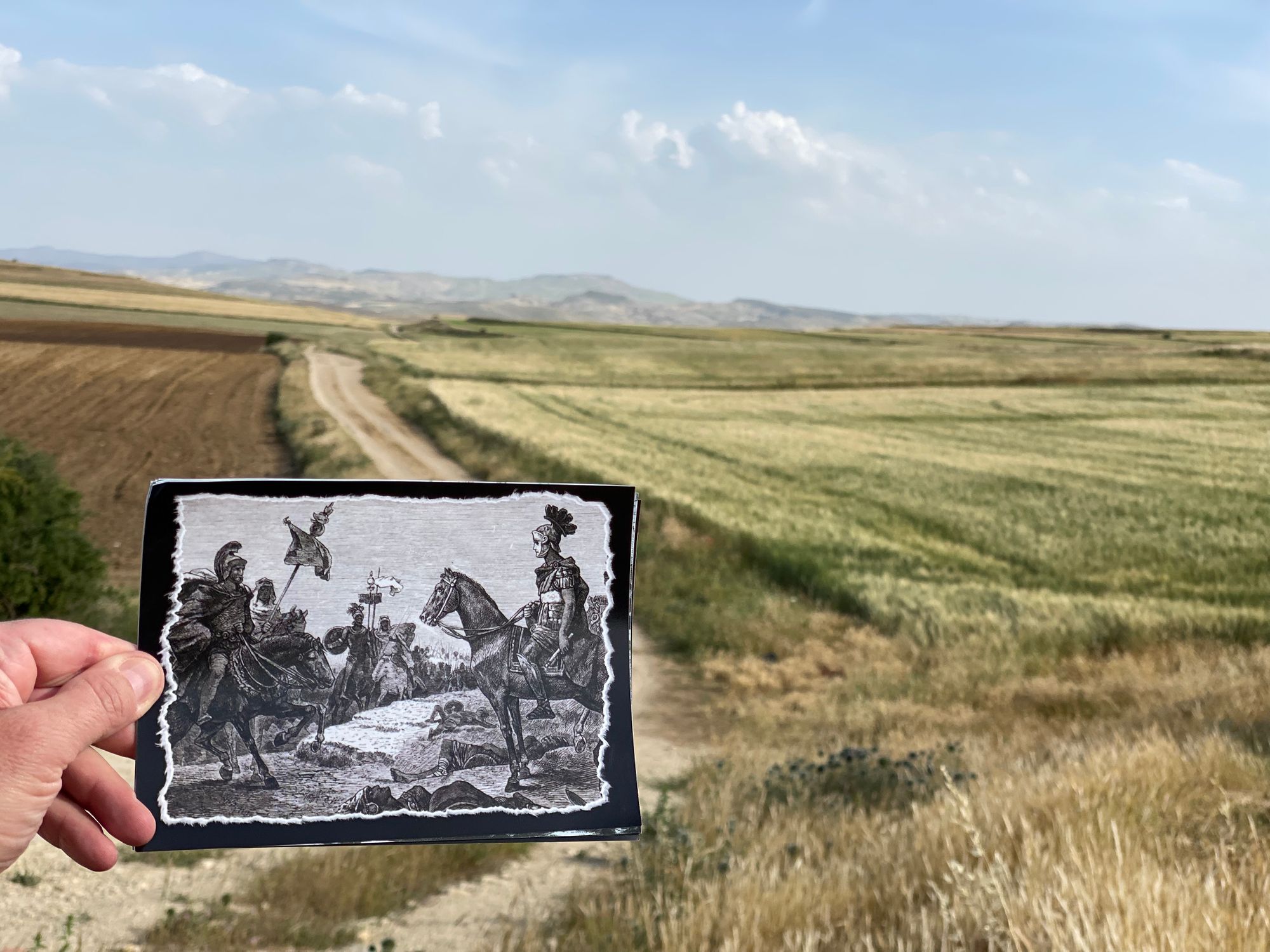
In 202 BC after 16 years of battling and defeating Roman Legions in Italy, Hannibal was recalled to defend Carthage. Scipio Africanus who had defeated Carthaginian armies in Spain had landed in Tunisia with a force of 35,000 men. Hannibal cobbled together an army of 40,000 men -many of them hastily-trained citizen levies - and 80 war elephants and they would meet at the epic and historic Battle of Zama.
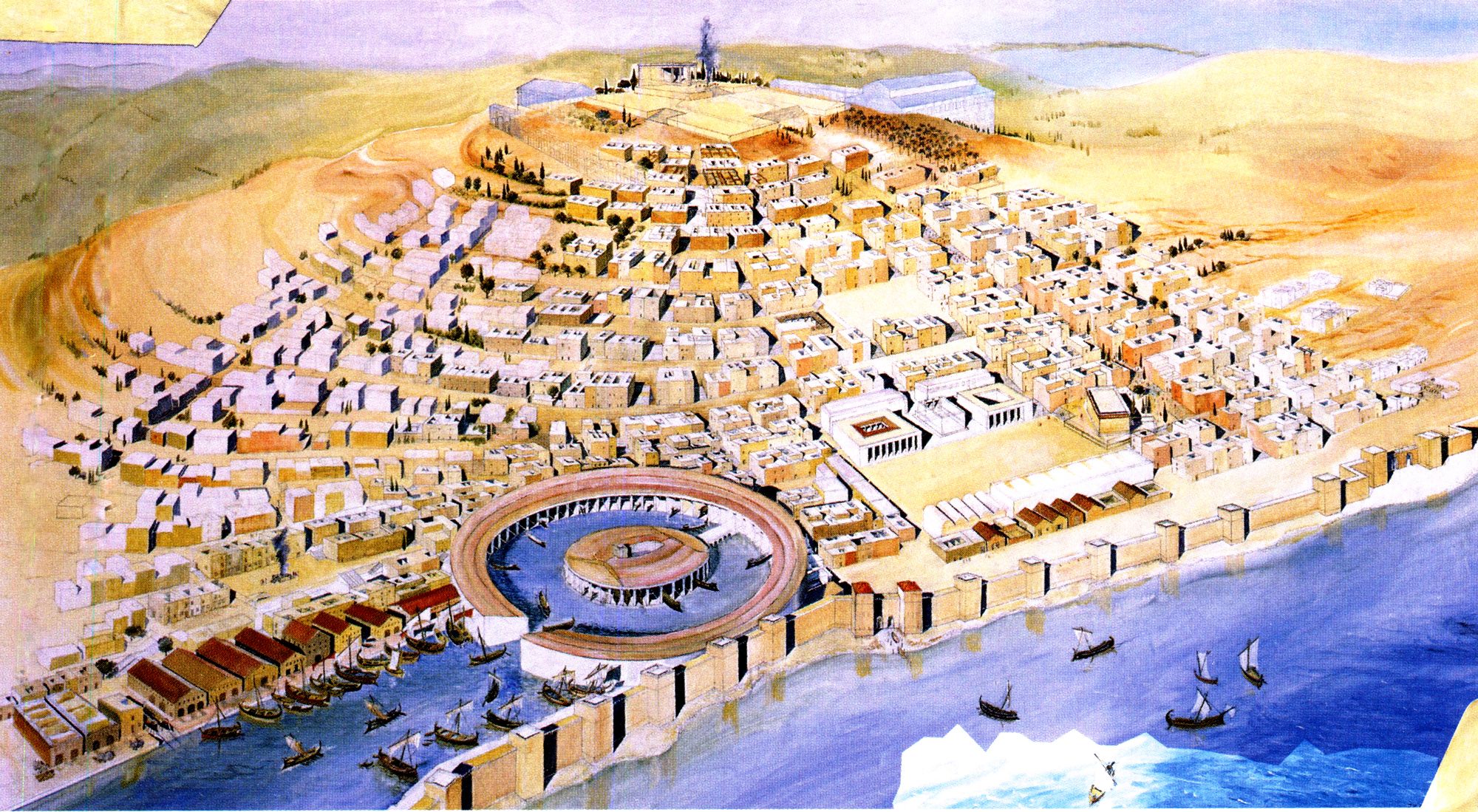
Carthage | 2022
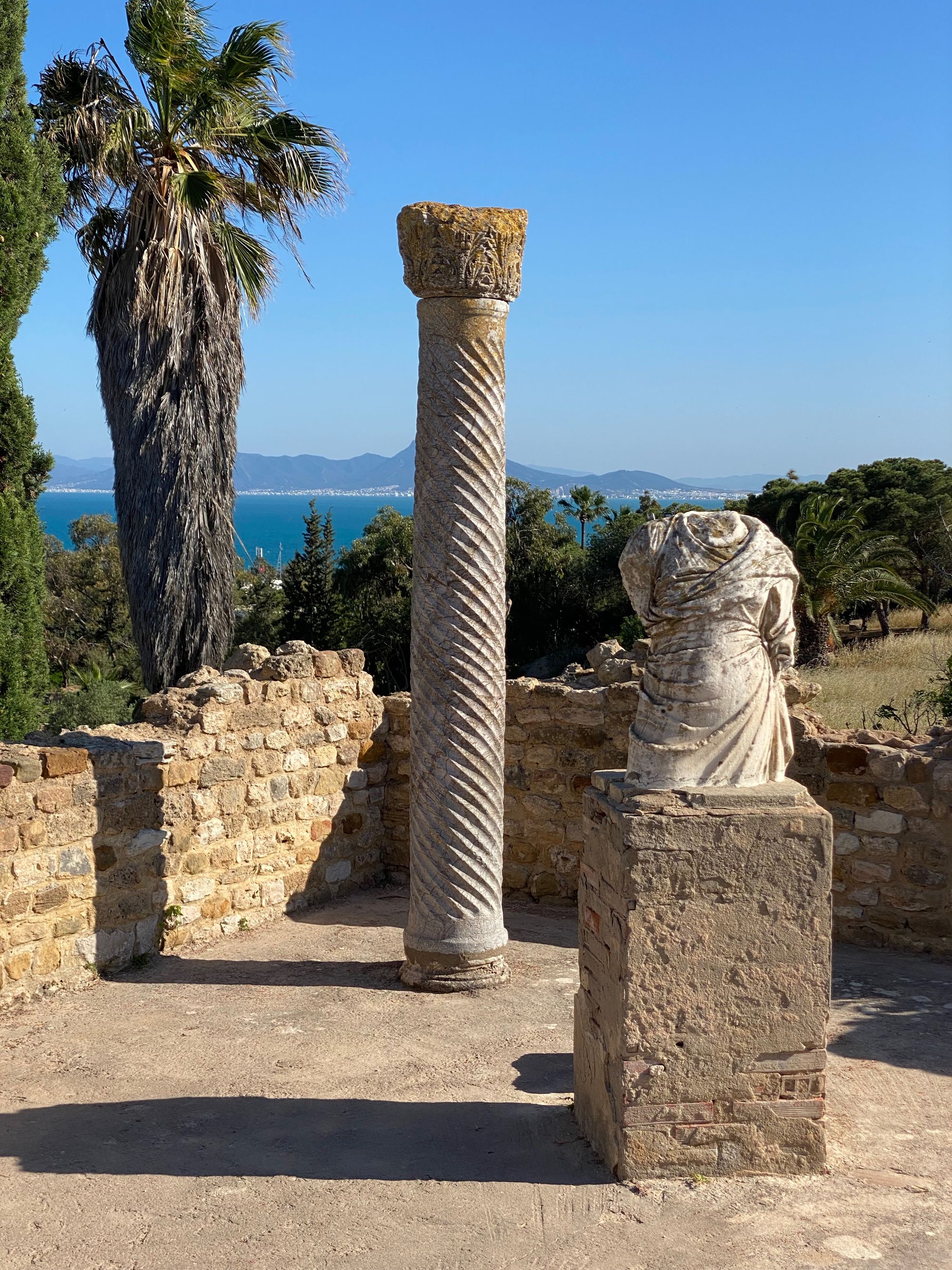
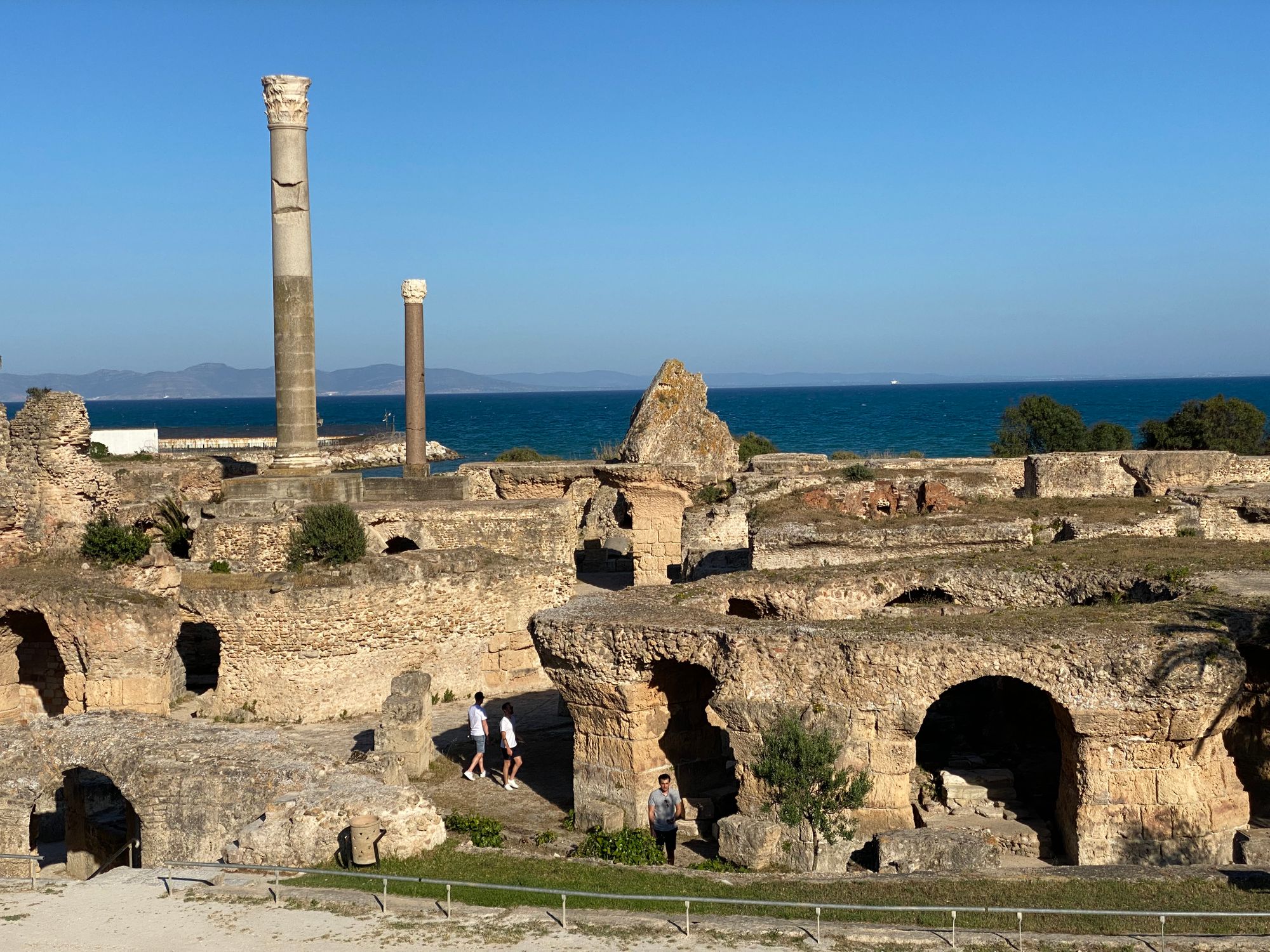
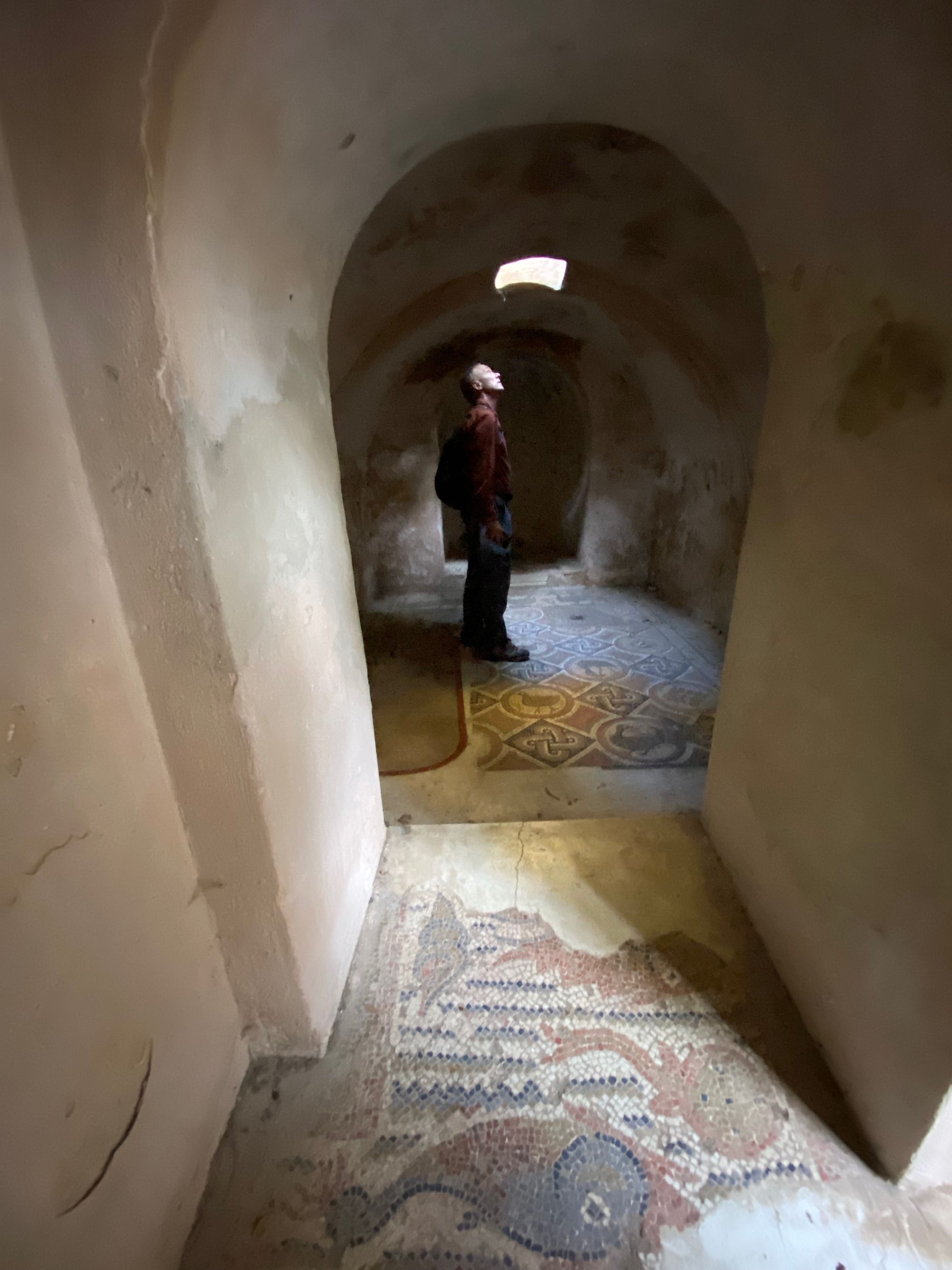
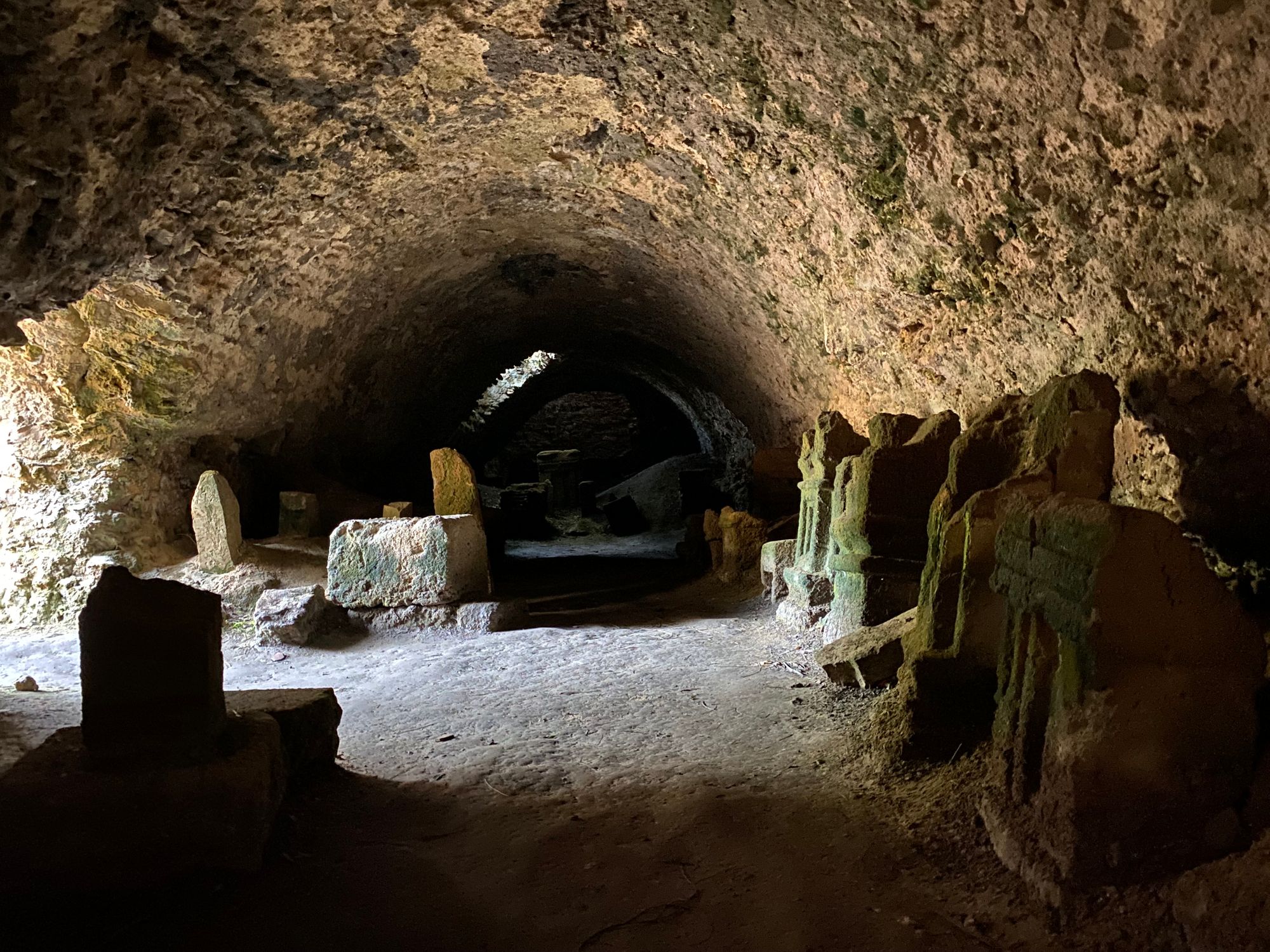

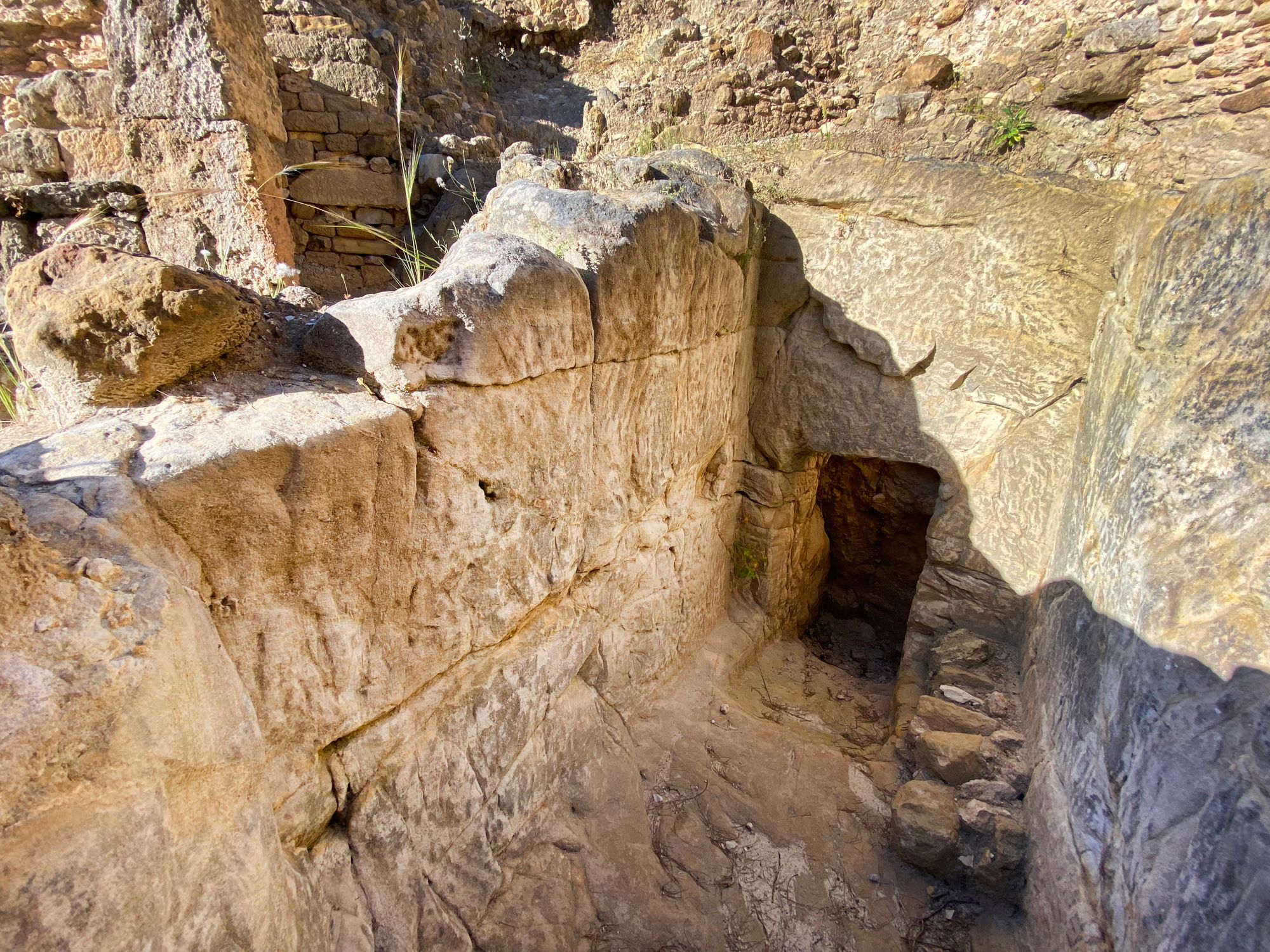
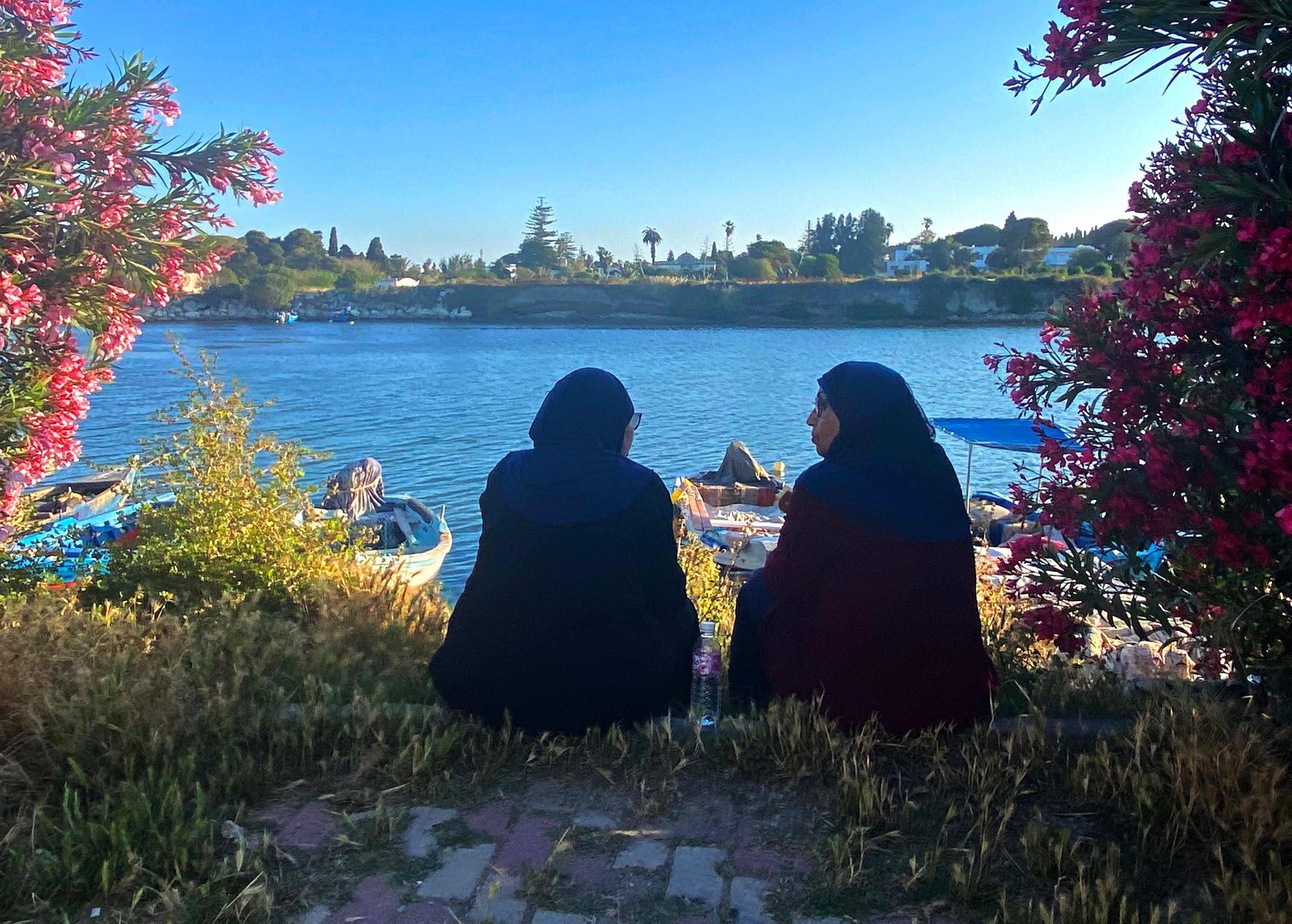

_____________________
I was in Tunisia with best buddy and fellow adventurer Al Willner. We have a long history of adventure travel together starting with our high school days when we braved a blizzard and drove to Toronto in a '66 VW camper during Christmas break. With me retired and Al doing consulting work, we reconnected.
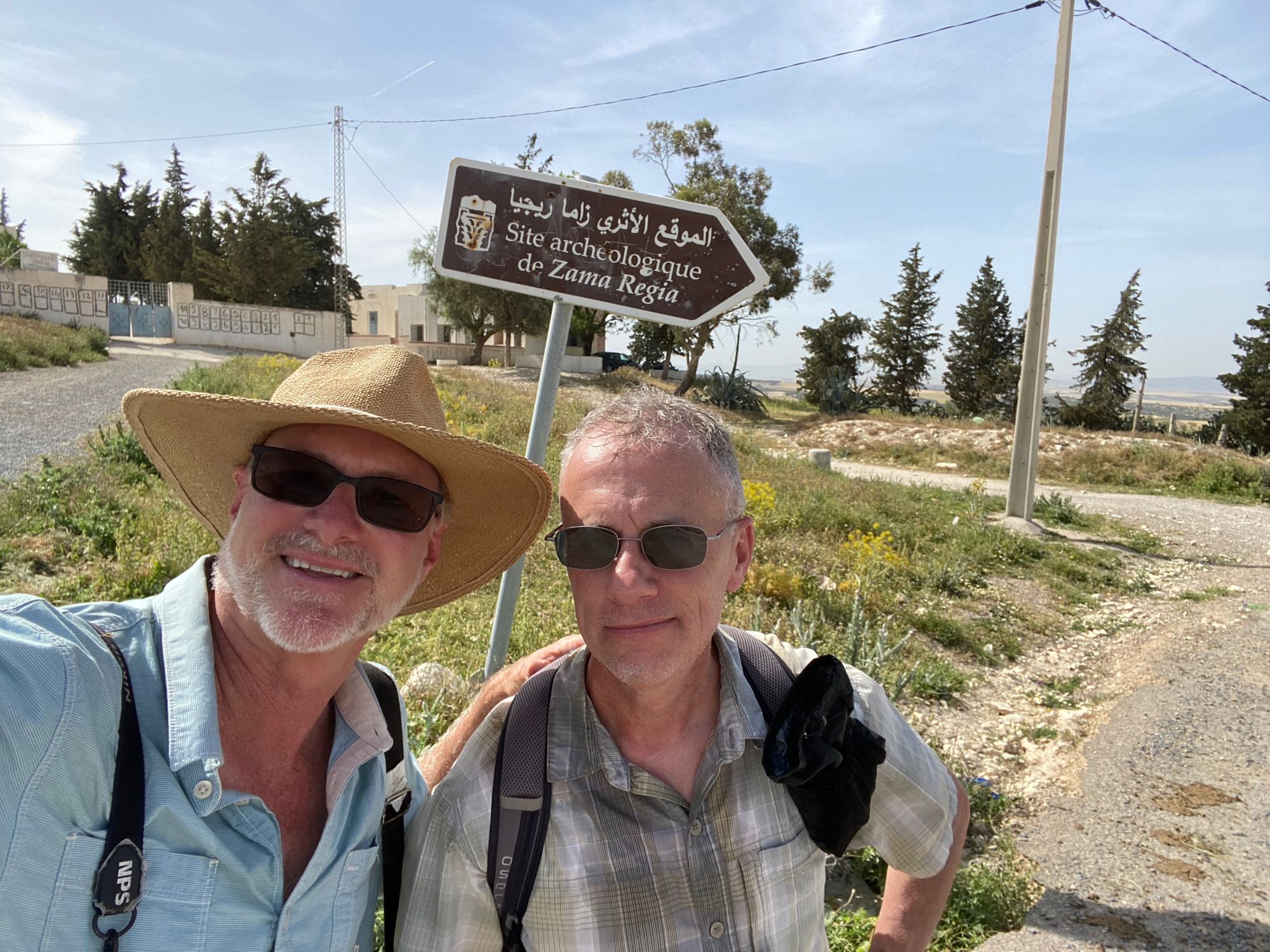
It was 2019 and Al had been researching his father and grandparents' Holocaust story. We set out to retrace their footsteps in August 2019 and I documented the journey in a blog called "Gathering Earth". The next year in January to commemorated the 80th anniversary of the Death March from Auschwitz to Gross Rosen that his father survived, Al and his fellow US Army friend, Mike Bayles, set out to walk the route his father and 4,000 other concentration camp inmates had taken. It was the first time anyone had done such a walk and I documented in a blog called "Walk in Remembrance". Both journeys had been difficult emotionally, physically exhausting, and incredible experiences that impacted us all deeply.


This time it was my turn to propose a journey. Ideas I threw out | Lebanon Mountain Trail, the Outlaw Trail, Sinai Oasis Trail. I thought of a journey down the Mekong, maybe something in India. But in the back of my mind was Carthage and Hannibal. I was born in Carthage and the more I learned about Hannibal Barca, the more intrigued and fascinated I became with his story.
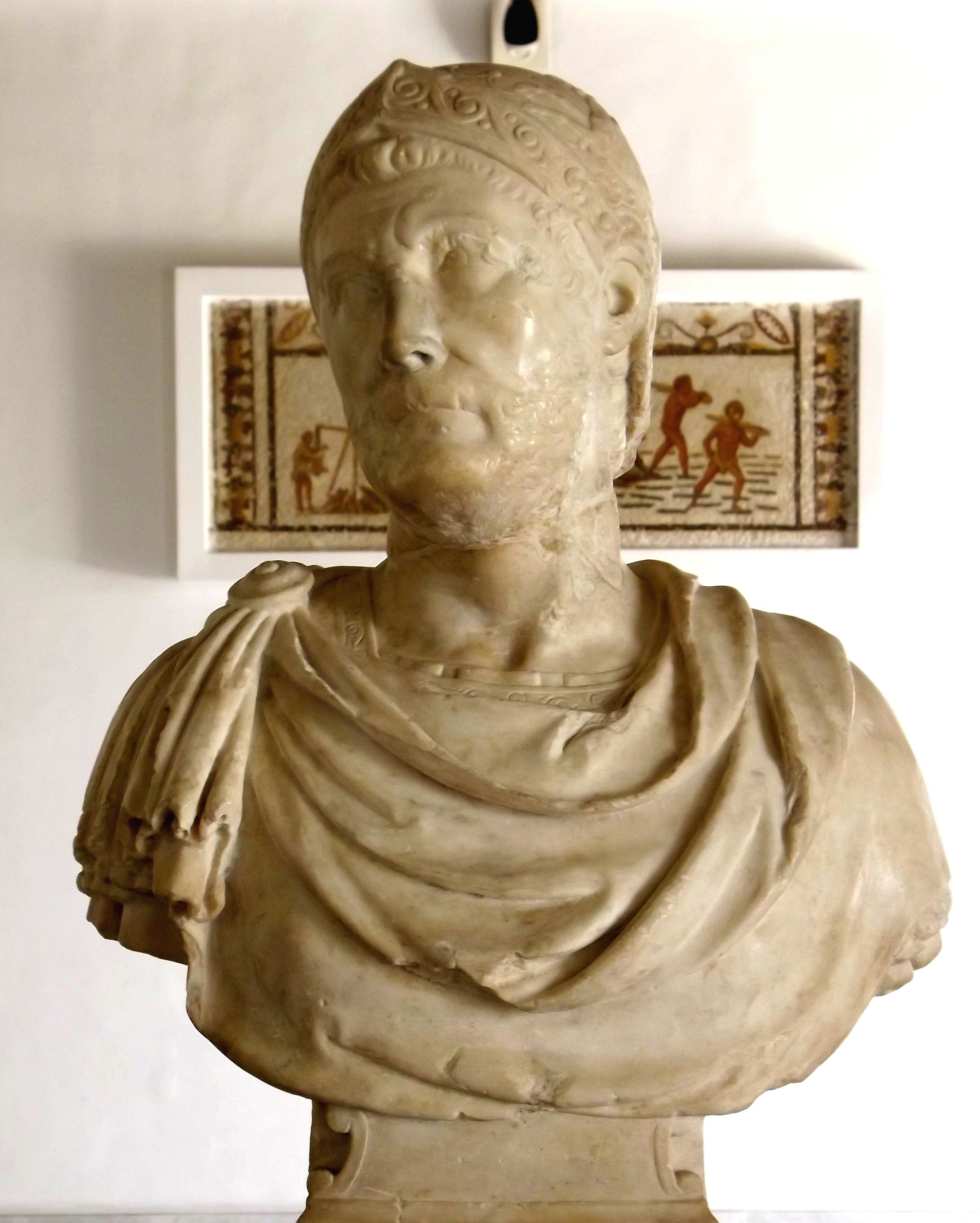
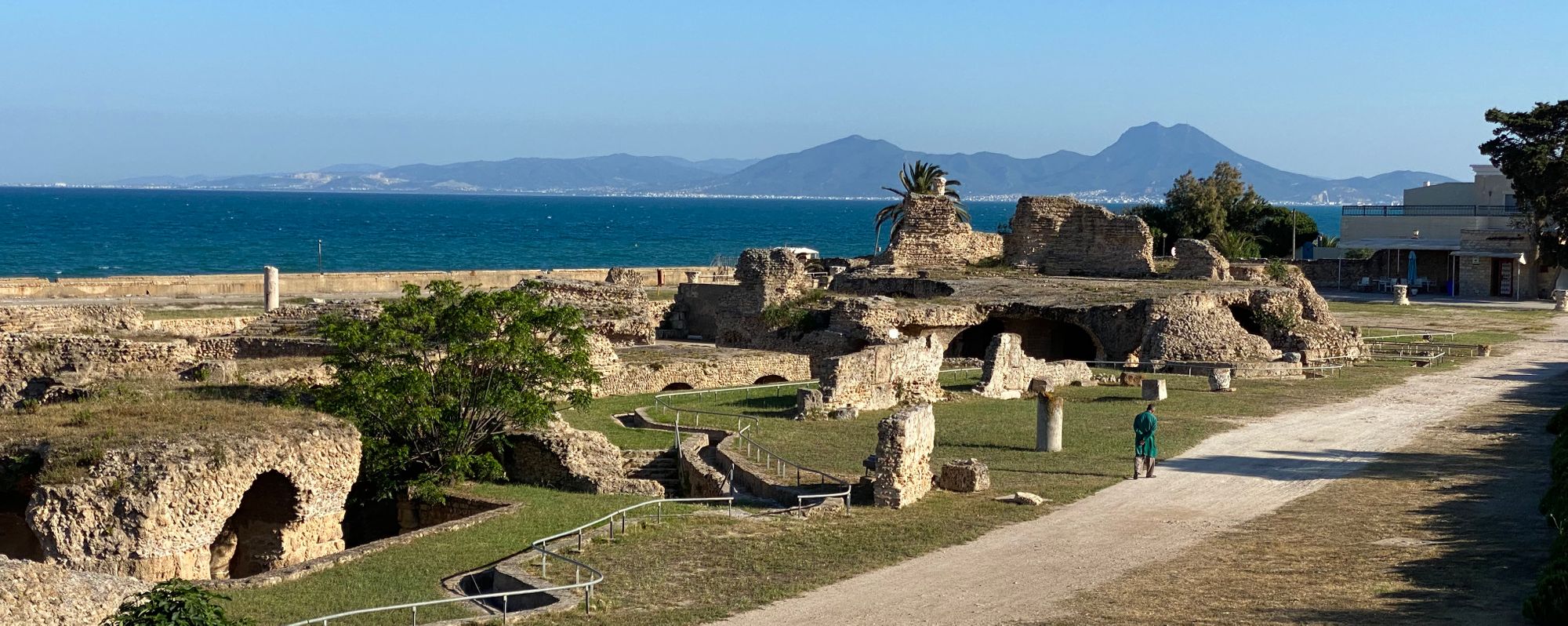
It was decided, Hannibal it would be and we'd set off in late summer 2021. The plan was to follow the Carthaginian general's route from Spain, across France and into Italy. Maybe visit the first couple of battles he won in the Po Valley.
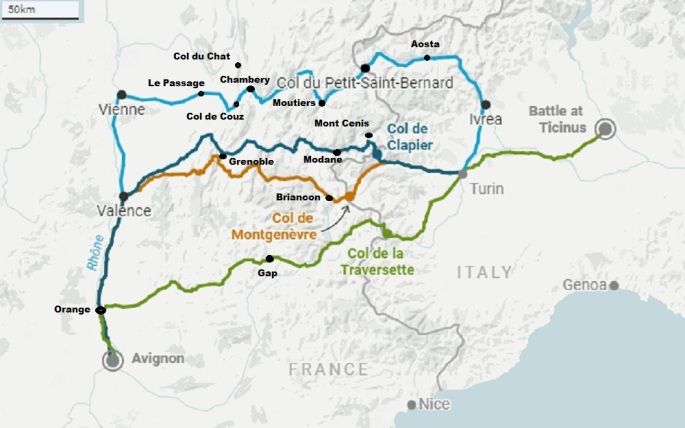
Hannibal is best known for taking his army and 37 war elephants over the Alps in the snow and surprising the Romans in Italy. There has been much research on which pass he took over the Alps. Recent scientific expeditions and comparisons with accounts written by Greek and Roman historians, Polybius and Livy, it is likely that the highest, most direct and southern most Col de la Traversette pass was the one he took into Italy. Hannibal was delayed in his march by hostile tribes and difficult terrain and arrived later than he had hoped in the mountainous region of France controlled by the Gauls. It was late October, possibly early November 218 BC when he finally reached the pass. The pass is generally only hike-able without extreme alpine climbing gear from July to September, so we planned to make the hike in September 2021.
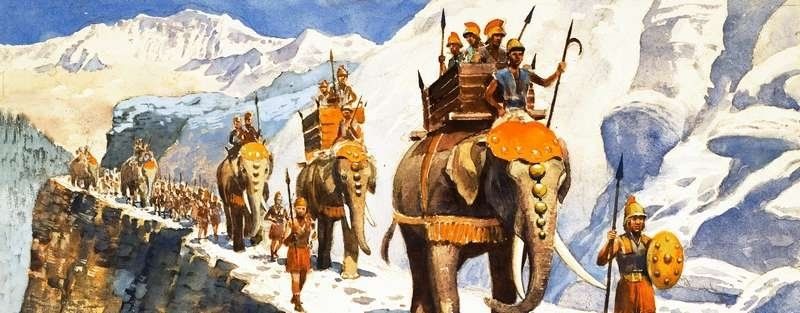
However, with the COVID pandemic still raging around the world in the late spring of 2021, we decided to table the expedition until later.
By early 2022 with the roll out of vaccines, a semblance of normal life starting to resume and with me back in Tunisia in May, we decided to go forward with the Hannibal Trail expedition. Though the timing would not correspond to Hannibal's alpine crossing, it would correspond to the start of his campaign and the crossing of the Pyrenees Mountains.
This journey was going to be more relaxed and we would take our time...not rushing from place to place, adding places of interest and putting in long distance drives between locations ...however rewarding .....as was the case in our earlier trips. That didn't happen. Our Hannibal Trail would sprout | The Battle for Tunisia | The Spanish Civil War | The Freedom Trail.

___________________
Hannibal |
There are no definitely known statues or other depictions of Hannibal Barca. The Romans obliterated almost everything Carthaginian or built over it after the Third Punic War.
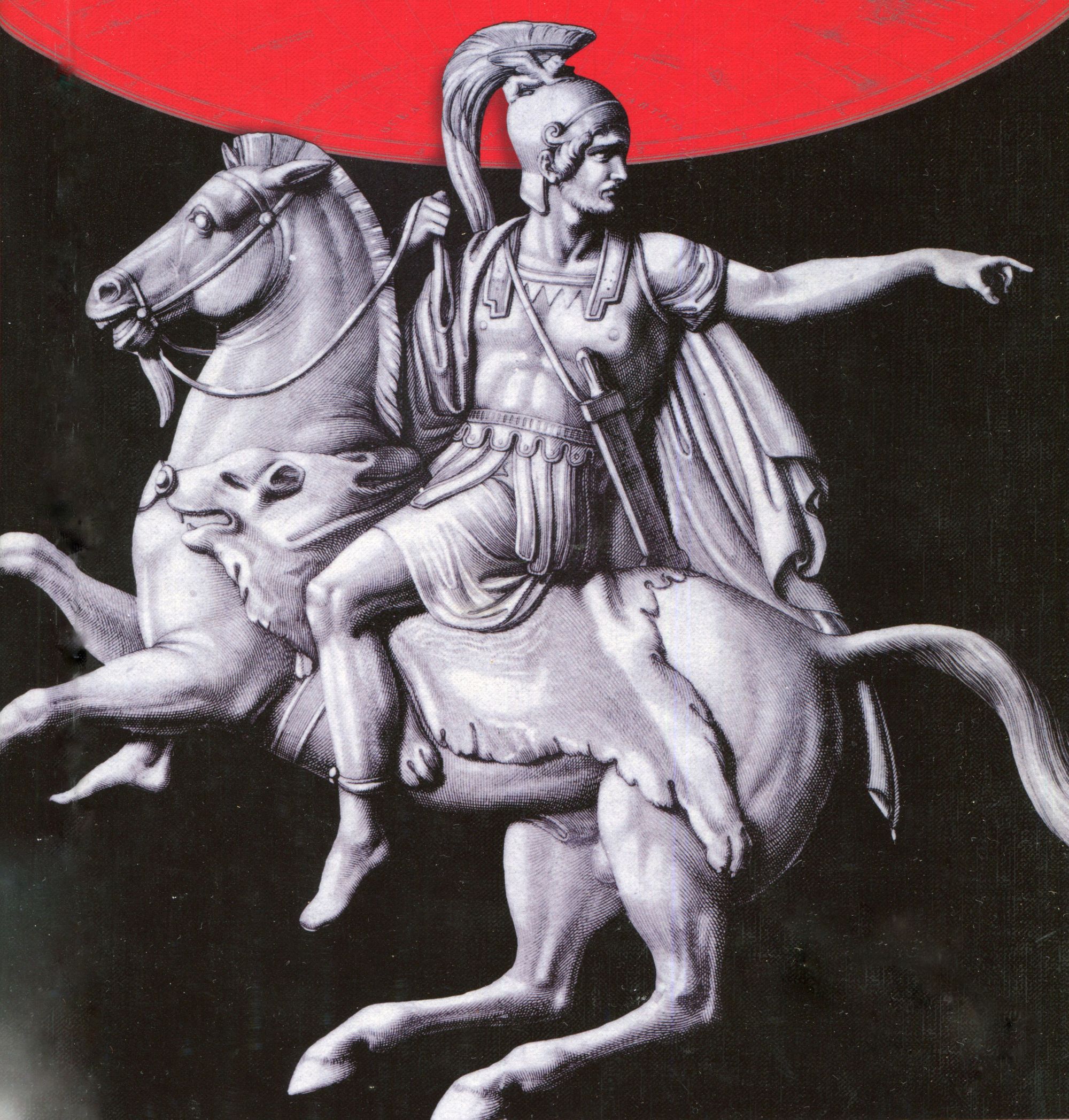
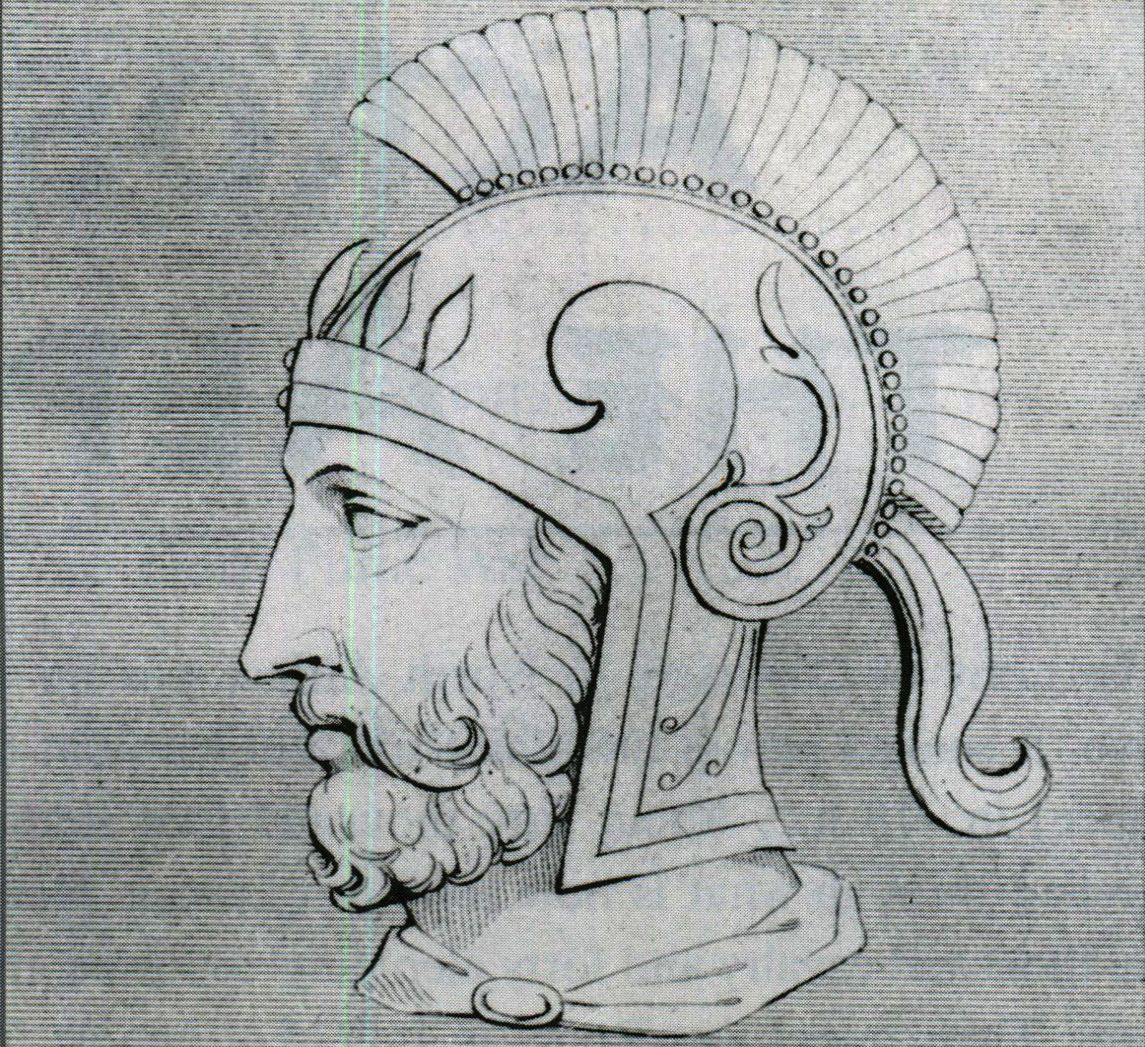
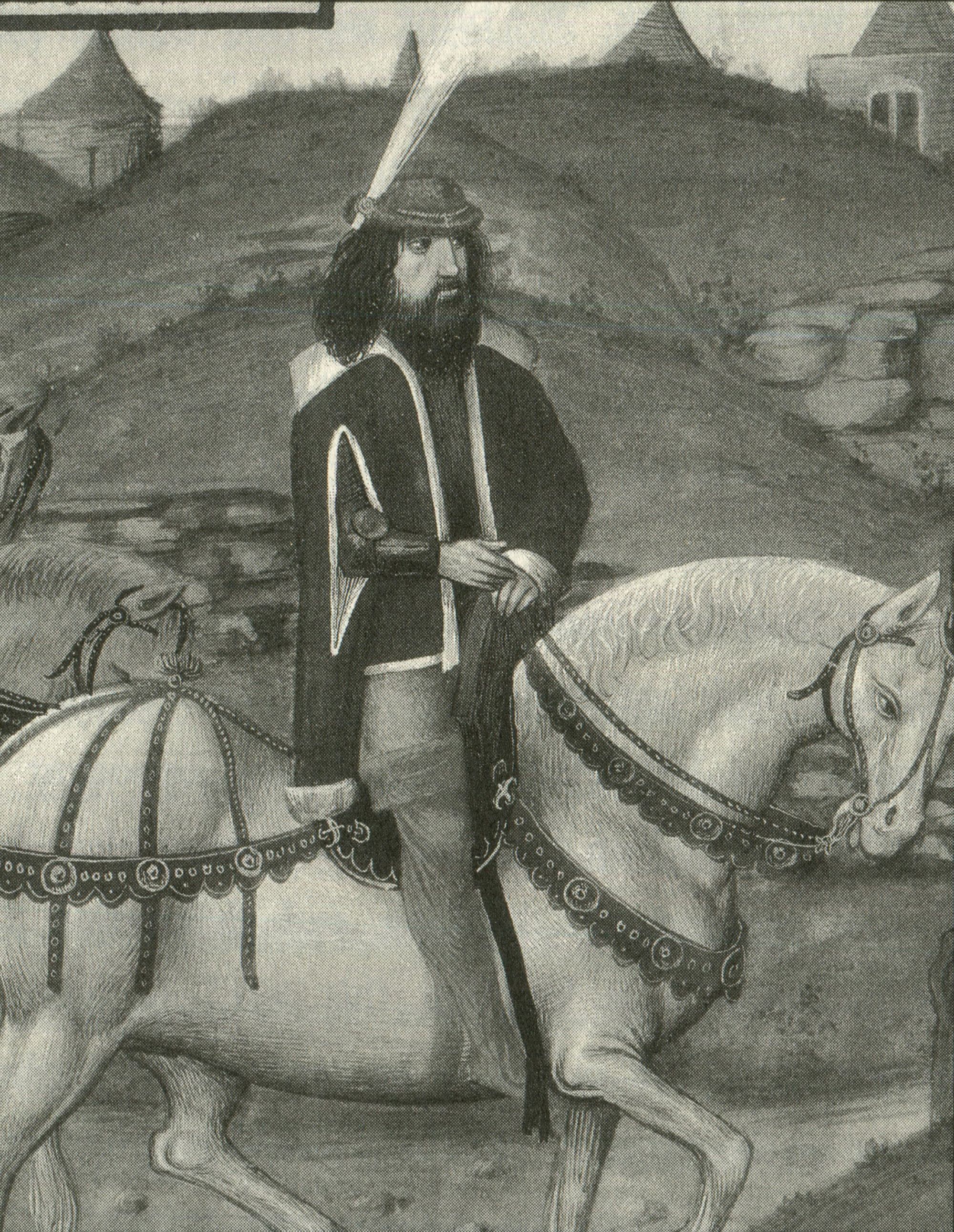
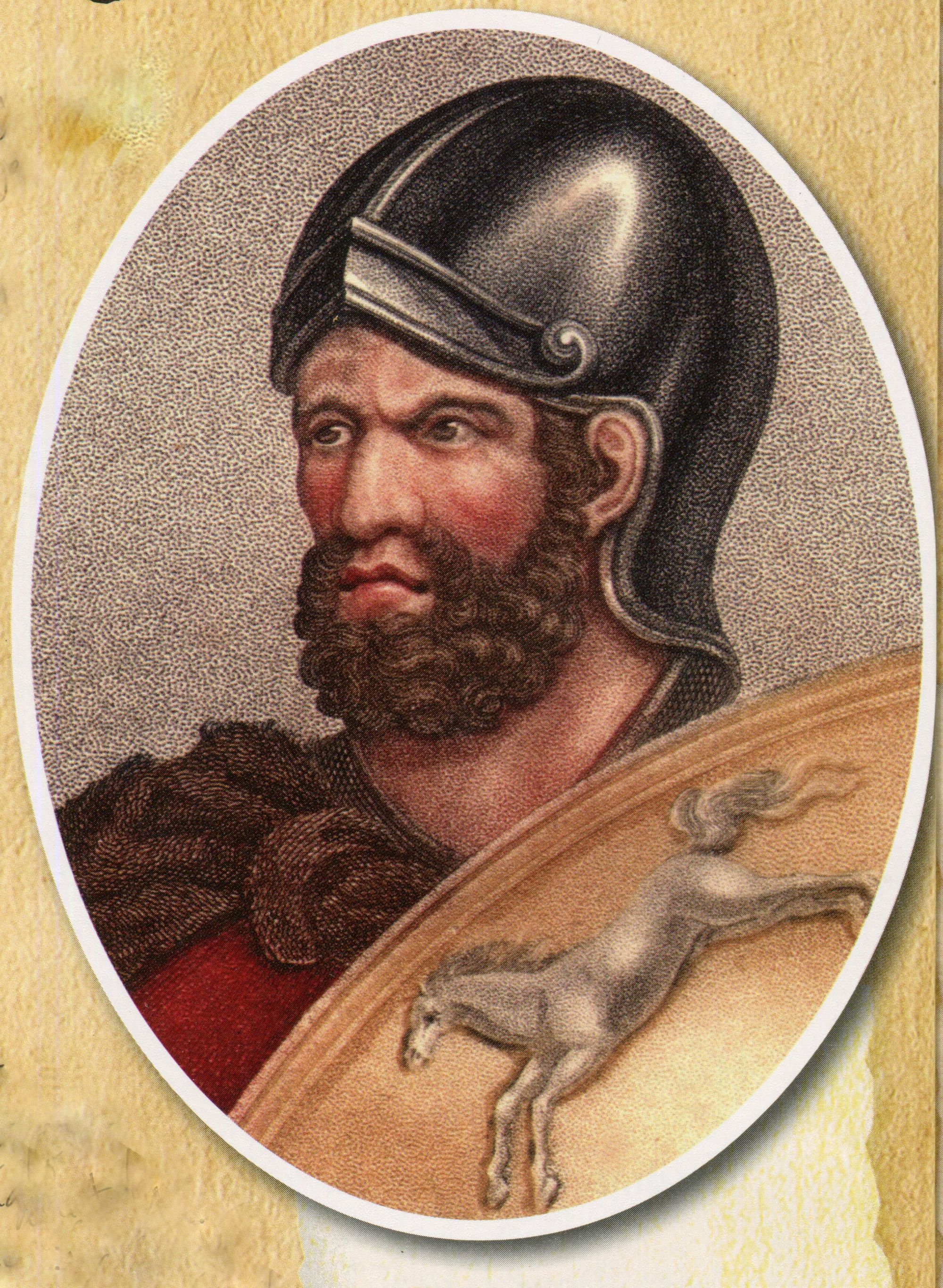
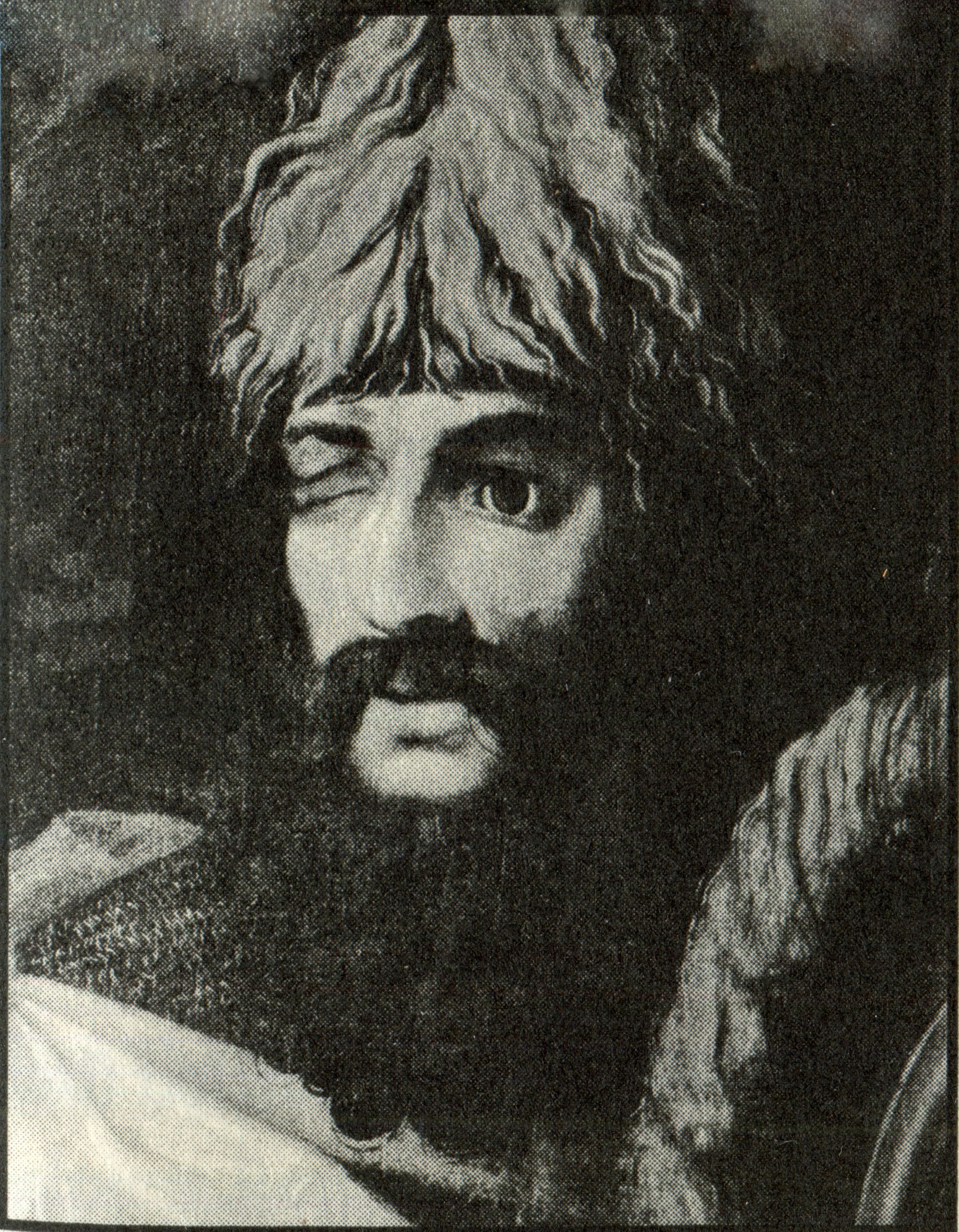
However, the image most often used to depict him is from a marble bust originally found at the ancient city-state of Capua in Italy.
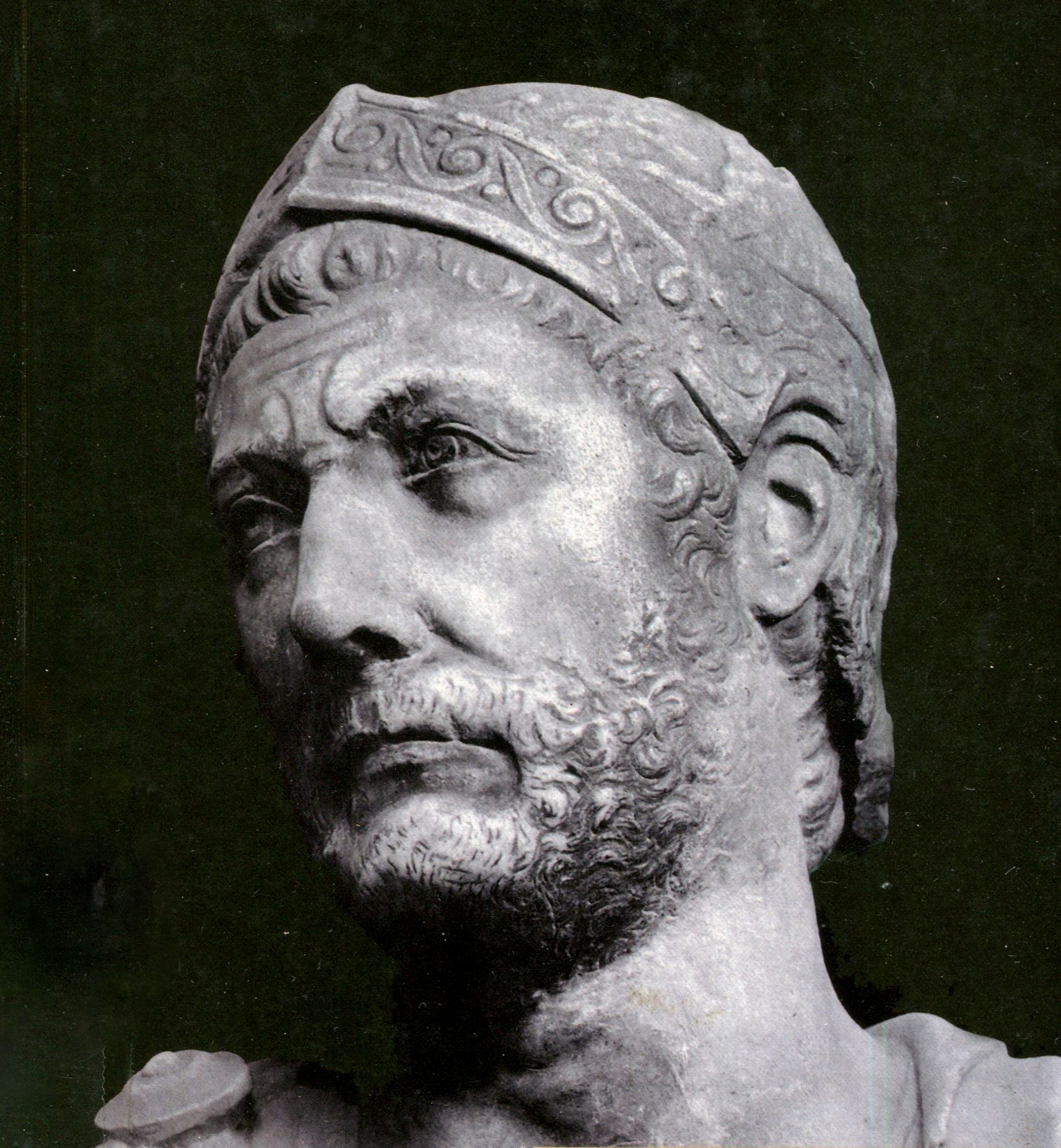
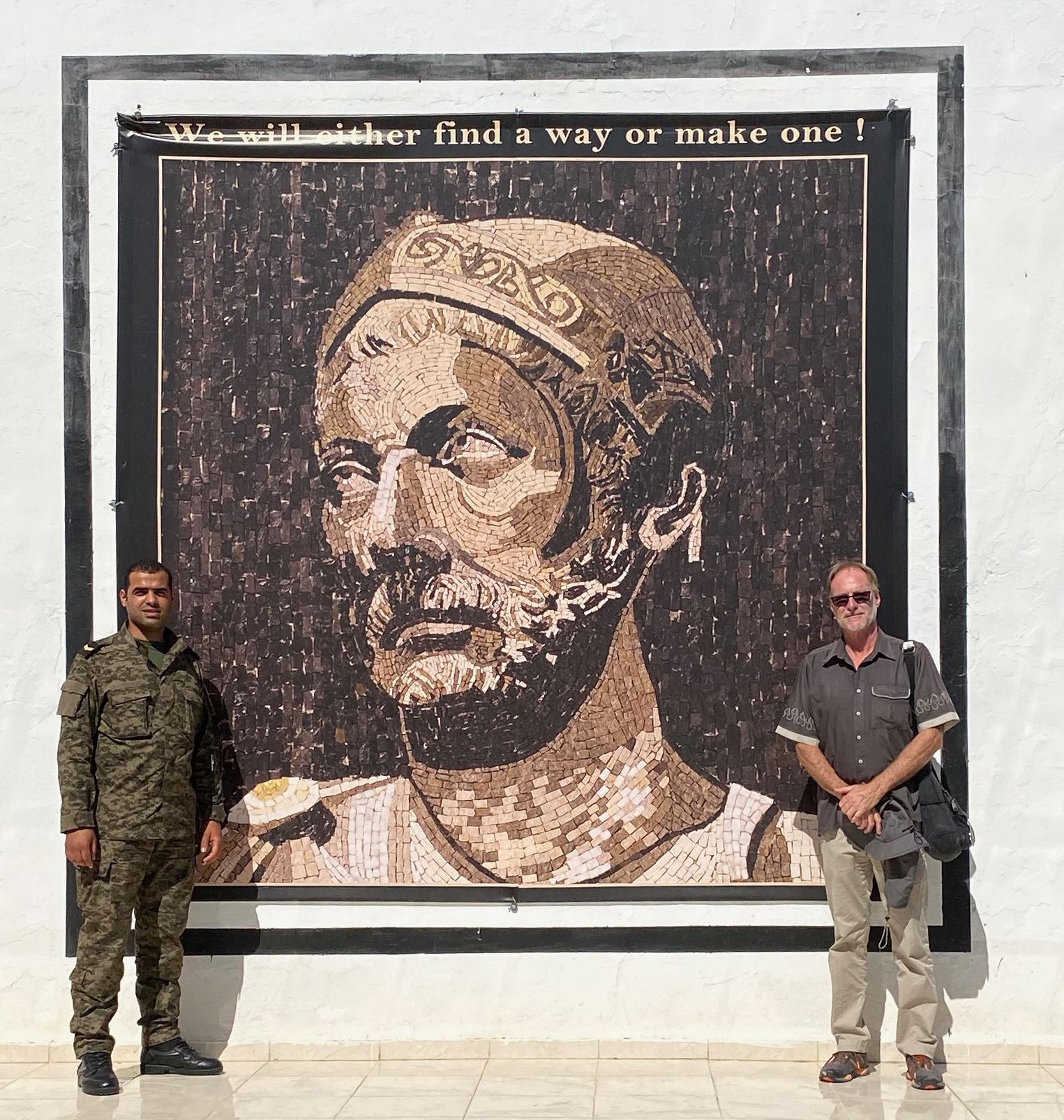
Much of Hannibal Barca's legacy is from accounts by Greek and Roman historians from the period. Greek historian Polybius who witnessed the sack of Carthage in 146 BC depicted Roman history in 12 volumes of The Histories. Though portions of the some of the books only partially survived the two thousand years since they were written, all five volumes dealing with Carthage and the Punic Wars are intact and tell a detailed story of Hannibal and the Second Punic War. Roman historian Livy who was born a hundred years after Polybius also wrote exhaustive histories of Rome and its origins. Much of the story we have of Hannibal and Carthage is from these two historians. Much of Carthaginian history was intentionally destroyed by Rome and the loss of records with the destruction of the ancient Library of Alexandria.
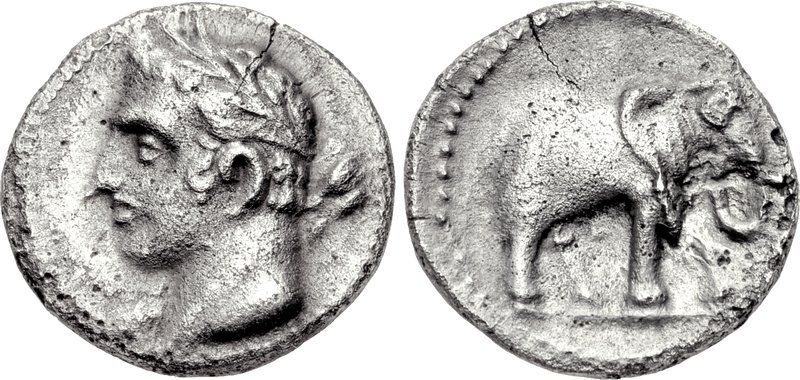
Whether legend or historical truth, at the age of nine Hannibal Barca begged his father to take him along on this campaign in Hispania (Spain) to rebuild Carthage's wealth and empire after the defeat in the First Punic War. His father agreed on the condition that he swear to forever be the enemy of Rome. An account has Hannibal saying, "I swear so soon as age will permit...I will use fire and steel to arrest the destiny of Rome."
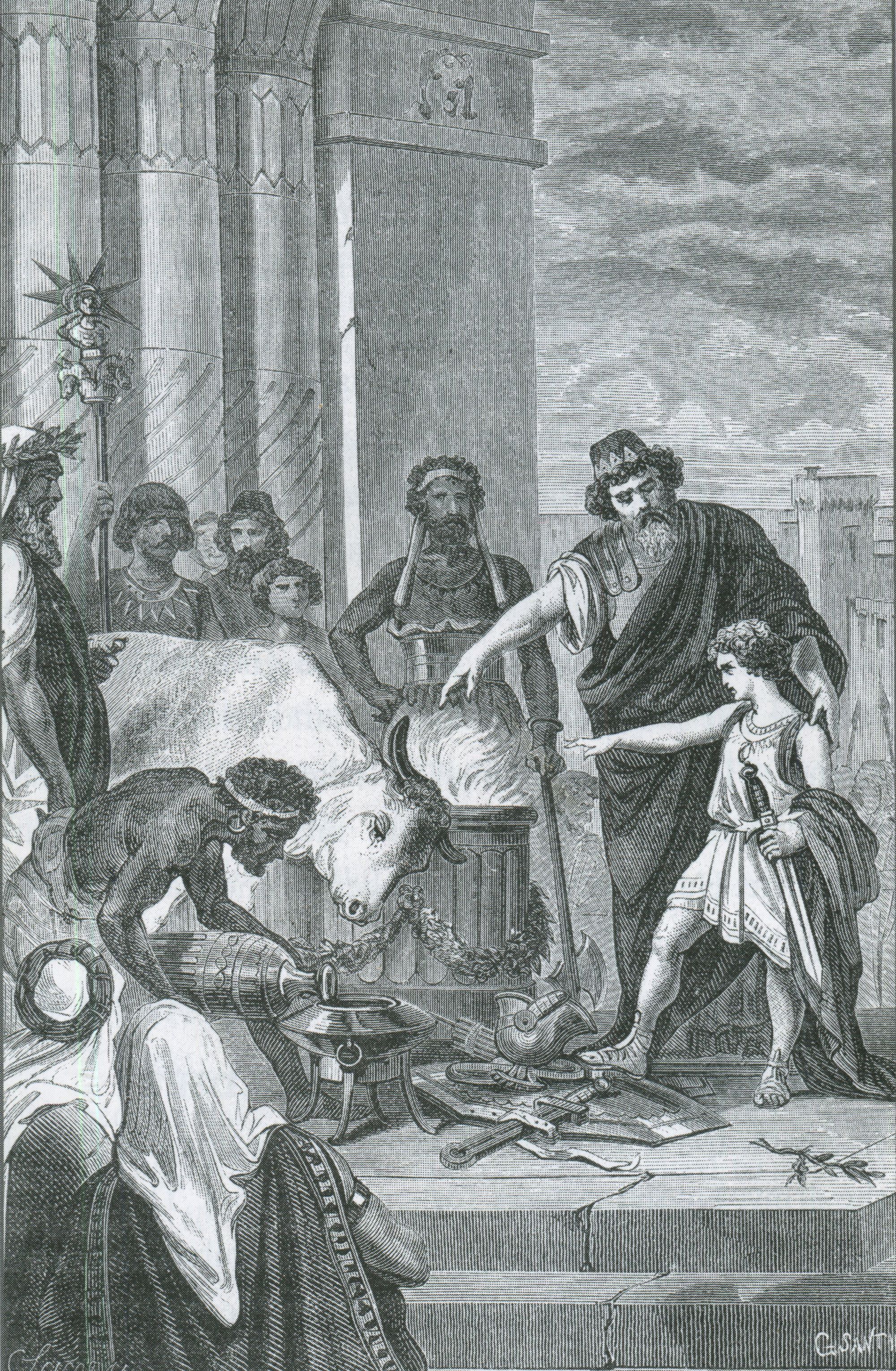
Hannibal, after the death of his father and brother-in-law, Hasdrubal the Fair, would take over leadership of the Carthaginian Army in Spain at the age of 26 in 221 BC.
_____________
After meeting up with Al in Tunisia and visiting the ancient battle site of Zama and what remains of ancient Carthage, we flew to Spain. We would follow as closely as possible the initial part of the story of the Second Punic War - Hannibal's march from Spain with an army and 37 war elephants.
Spain | the Battle of Sagus River
But first, after recent archeological excavations revealed the location of Hannibal's first major battlefield success, we would visit the Battle of Tagus River | 220 BC.
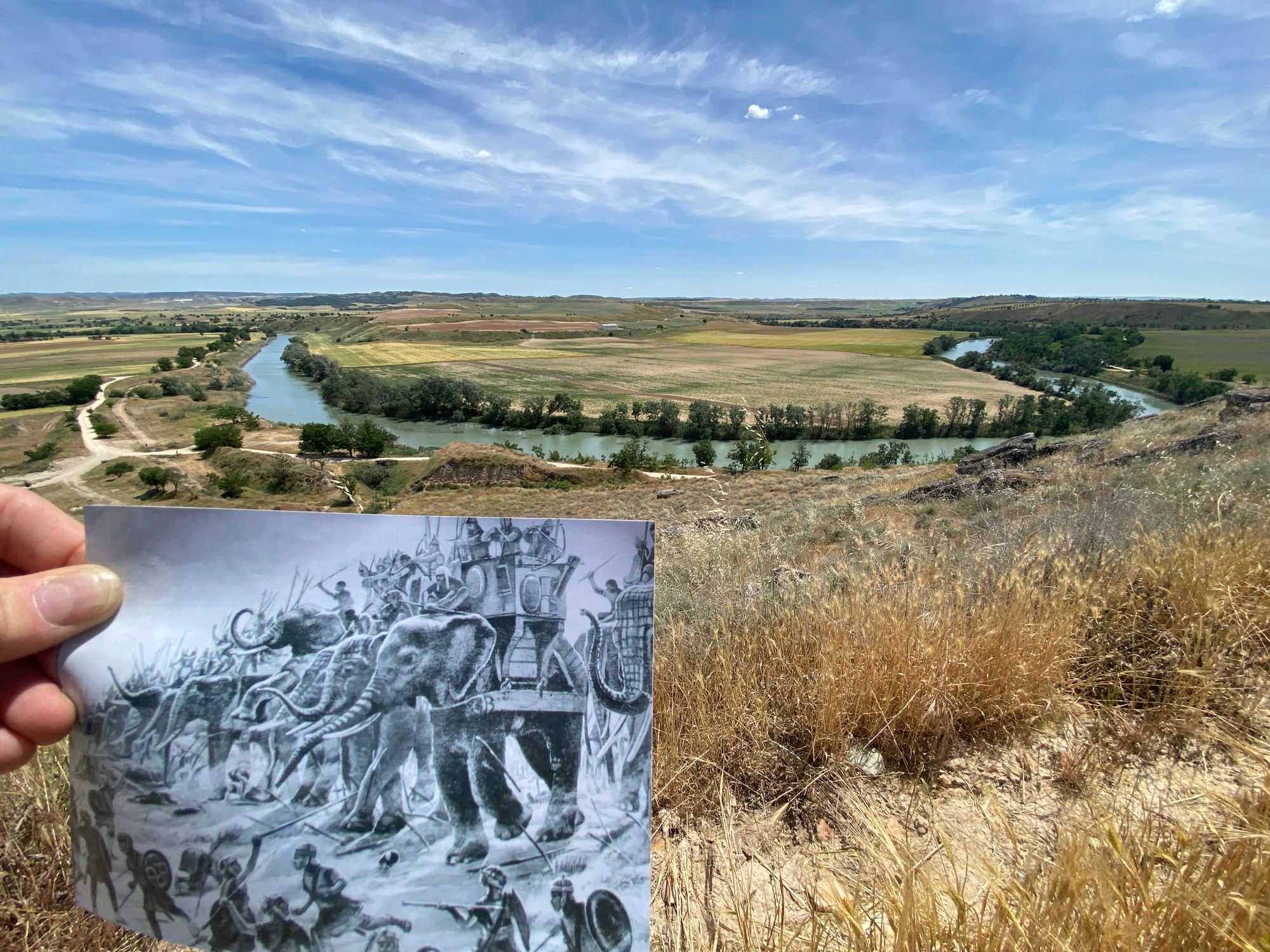
The battle site is only an hour's drive from Madrid. We rented a Chinese knock-off of a Volvo SUV and encountered an "Authorized Vehicles Only" sign at the dirt road cut-off on the opposite side of the river from the village of Rio Llano. We proceeded anyway and once we were past the gravel factory - presumably that was why it was for authorized vehicles only - we felt safe from being stopped and turned around.
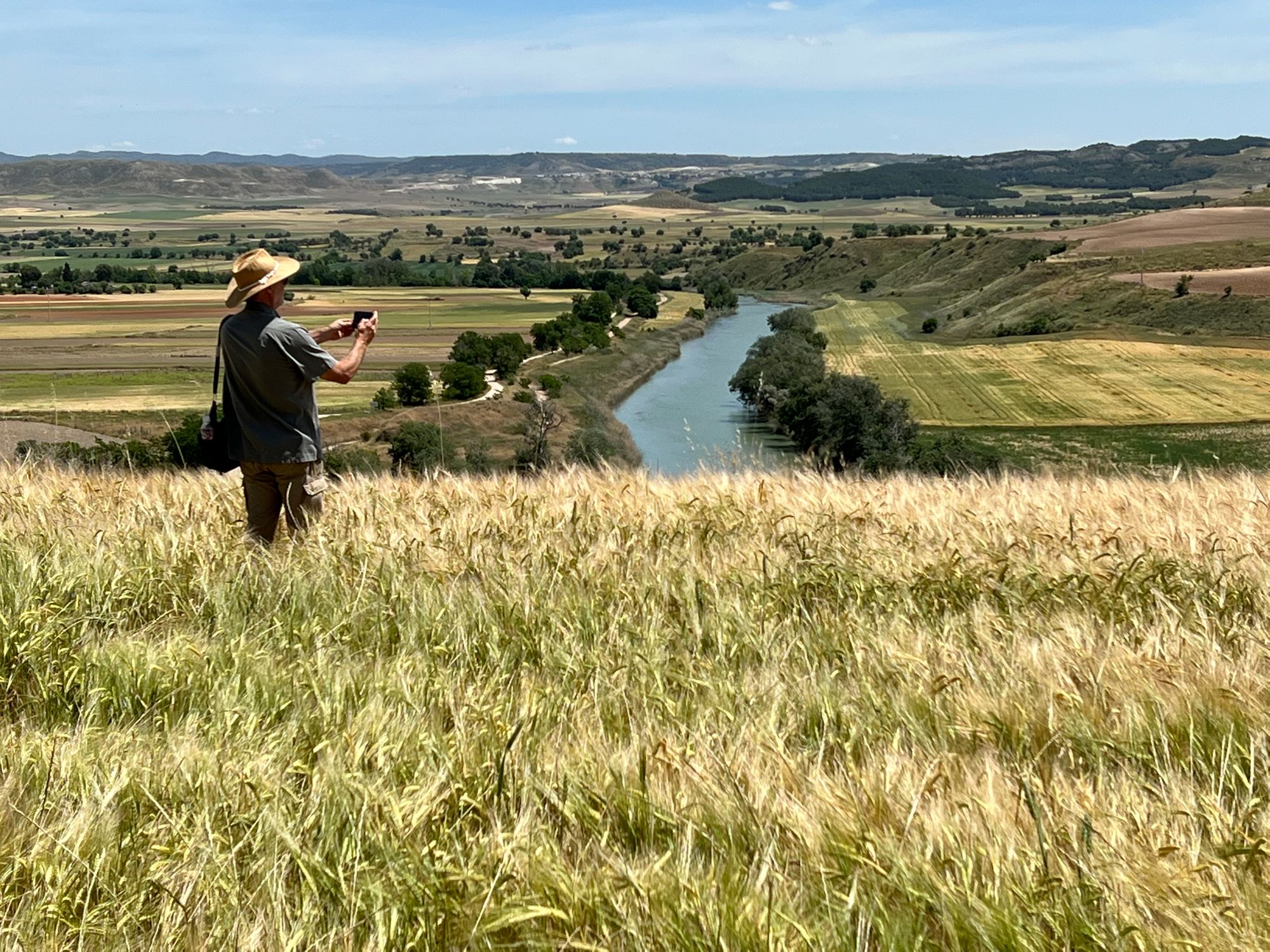
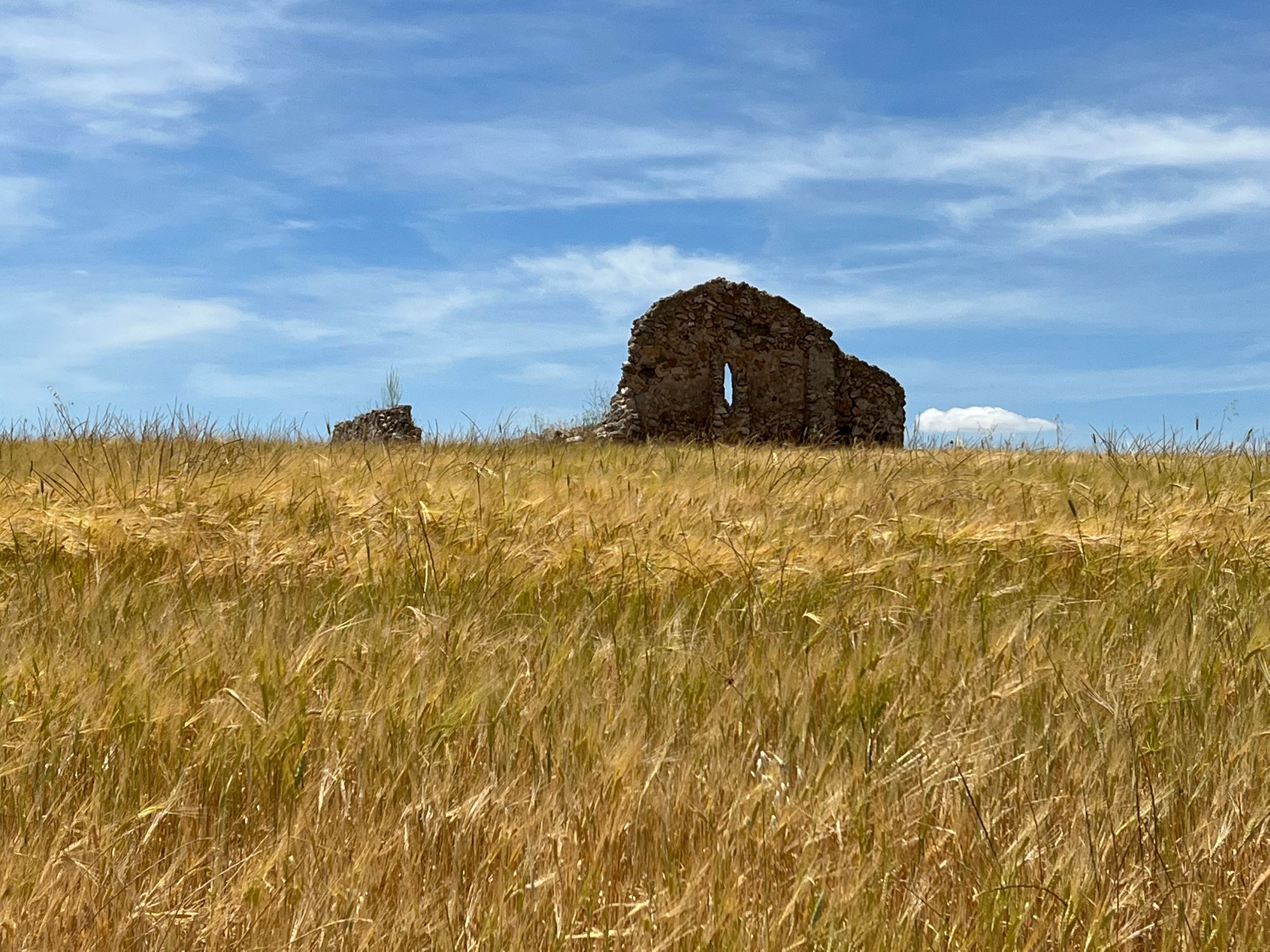
"There in the middle of this wheat field that I walked across to meet up with Al was the foundation ruins of a church and also a tiny Roman archaeological site. Spewed among the wheat fields were many fragments of Roman pottery. It was windy and warm, with a wispy cloud splattered blue sky. I looked out over the battle field from the Spanish tribal coalition perspective and imagined the battle unfolding in front of me". from my journal | 05-23-22
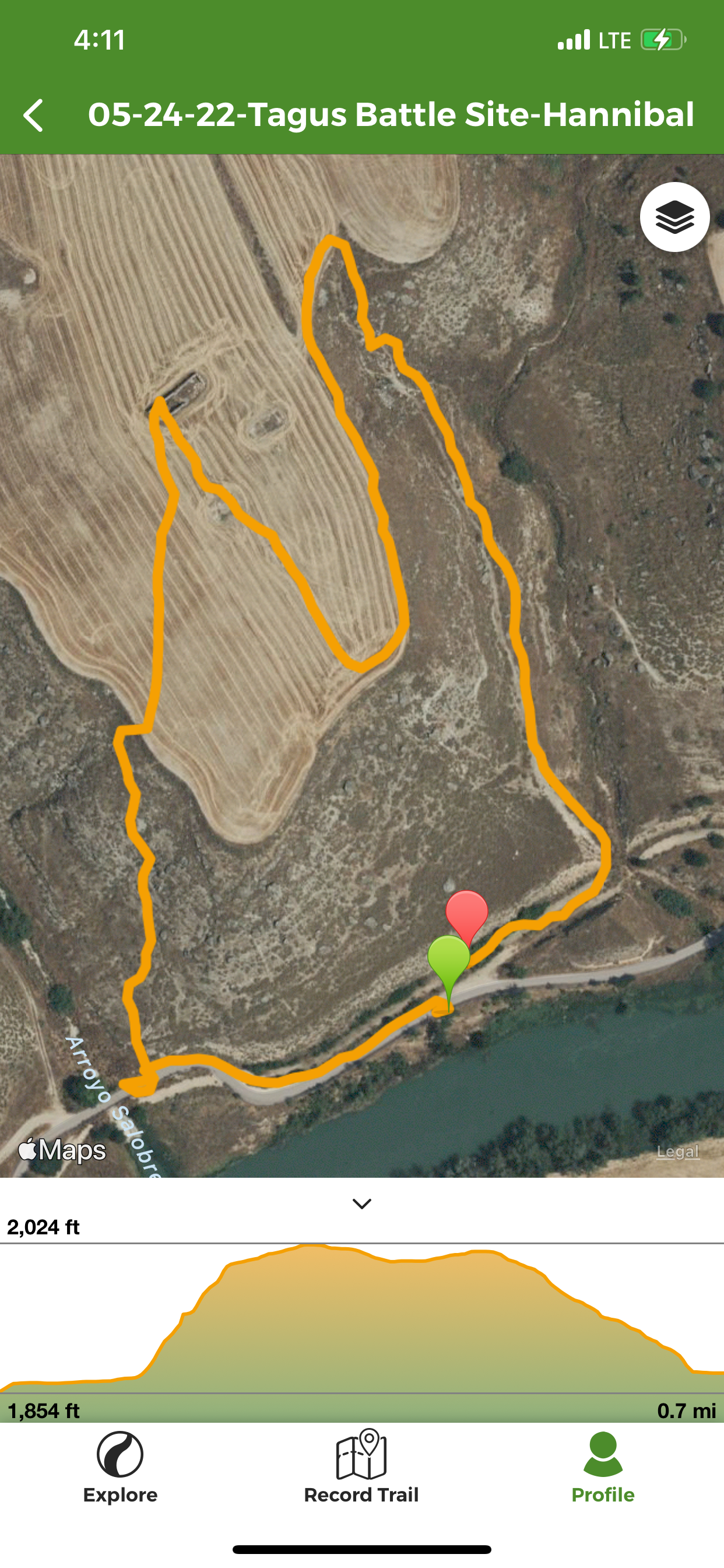

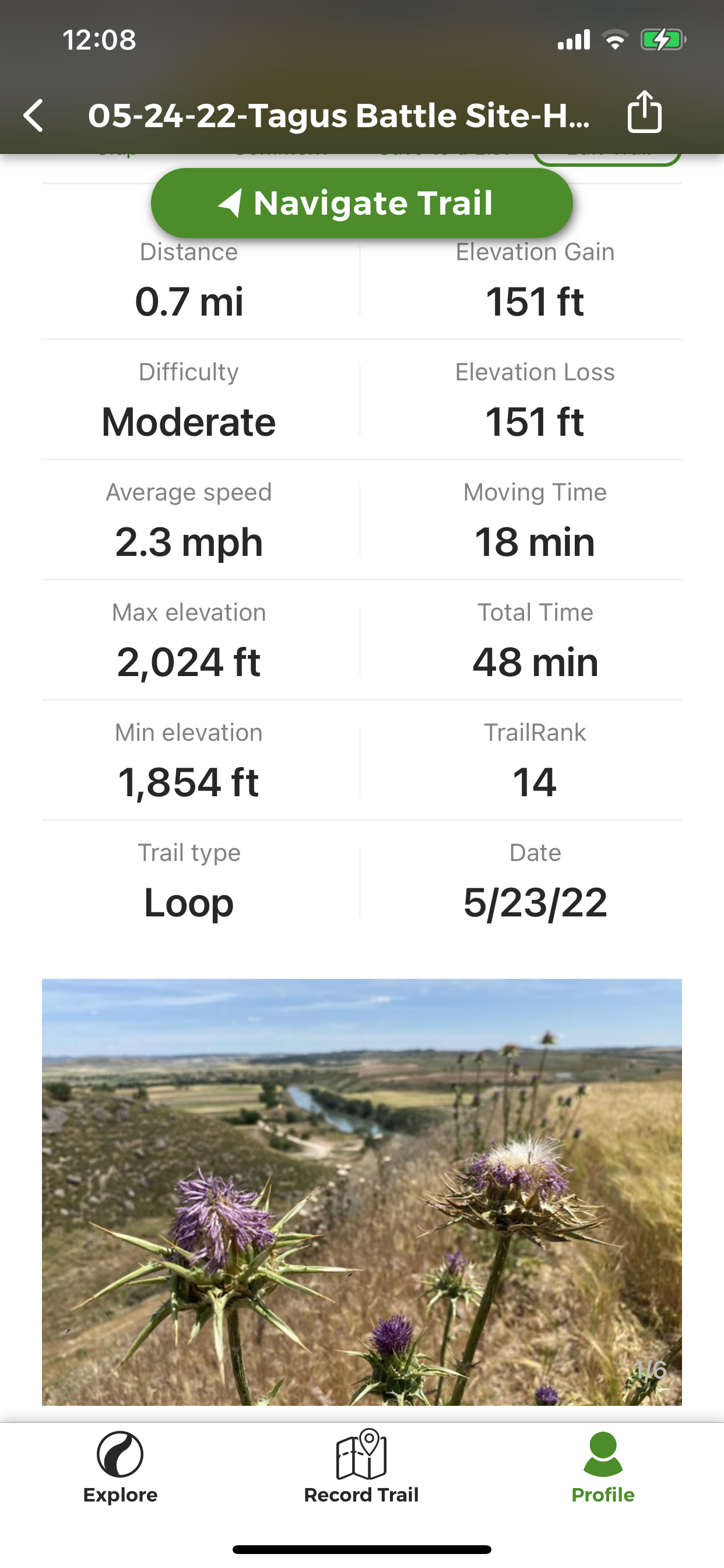
After successfully raiding Spanish tribal strongholds in his effort to consolidate Carthage's hold over the Iberian Pennisula, Hannibal was pursued by a coalition of Iberian tribes. His army of 25,000 soldiers and 40 war elephants was outnumbered four-to-one by the Carpetani-led tribes of Vettone and Olcade.
Knowing that to confront them on an open battlefield mass attack would be disastrous, he chose to position his army on the eastern side of the Tagus River. He fortified sections of the river front with palisades, but left the shallow fording areas open. He expected the angry Spaniards who wanted to avenge the loses of their crops and the destruction of their towns to cross at these shallow fords.
He was not disappointed and the Spaniards did exactly as he had hoped. The attacking tribes where funneled down from the plateaus into the shallow river crossings and those that were not swept away and drown were met by Hannibal's infantry and war elephants. His cavalry which may have been hidden behind small hills where he is likely to have commanded the battle struck next annihilating those that managed to gain a foothold on the other side.
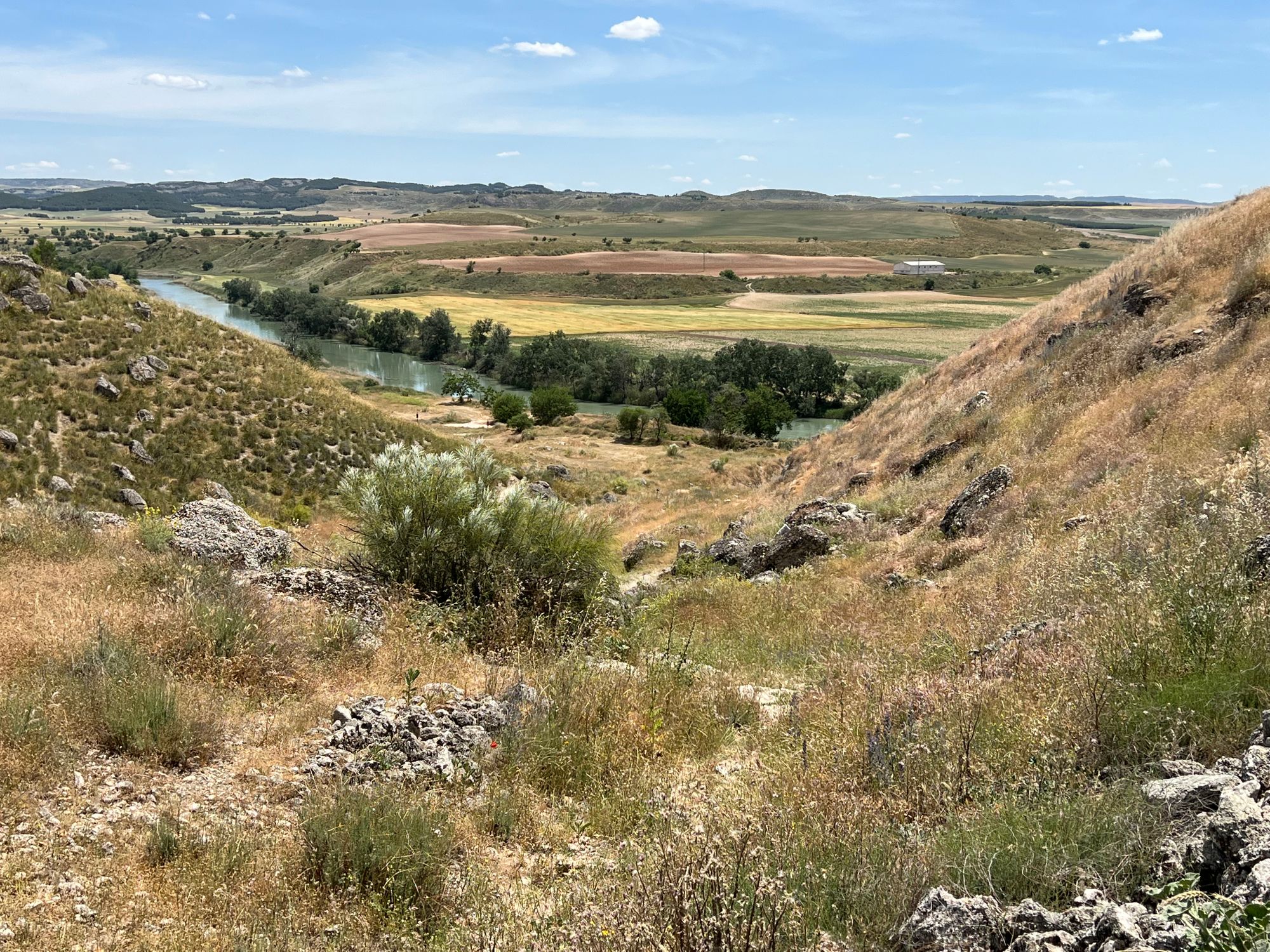
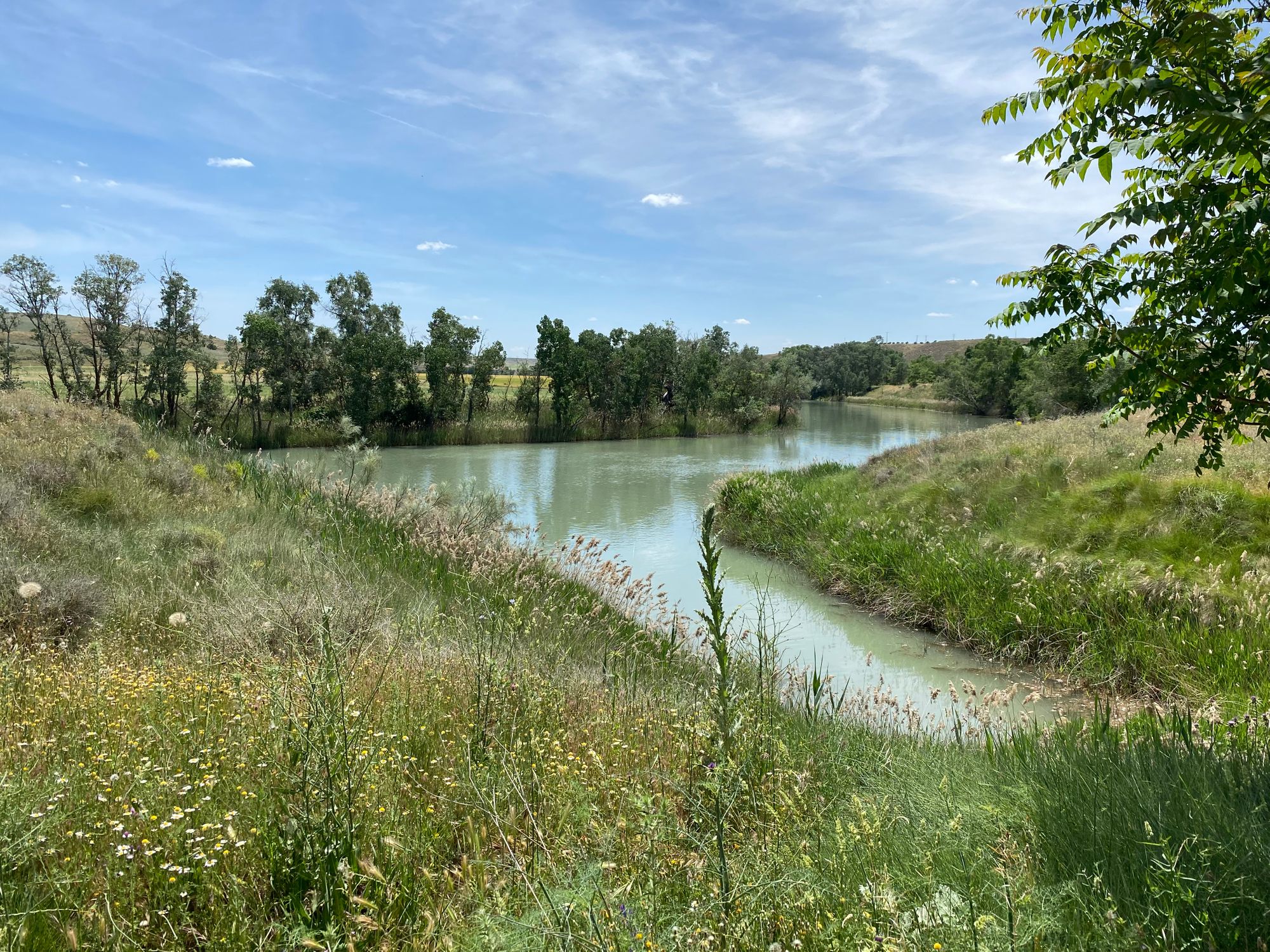
The Spanish tribes had been dealt a death blow and Hannibal's consolidation of the Iberian Pennisula south of the Ebro River was now complete. He would now turn his attention to the master plan of attacking Rome itself.
His uncle Hasdrubal the Fair, had concluded a treaty with Rome that delineated the Ebro River as the demarcation point of sphere's of influence. South of the Ebro belonged to Carthage. North of the Ebro was Roman Republic territory.
However, the Saguntines of Sagumtum - located 160 kilometers south of the Ebro River - had allied themselves with Rome. For Hannibal this was not only a violation of the agreement his uncle had struck, but was also a means to put into action his grand campaign to avenge the Romans and fulfill his pledge.
__________________
The Siege of Sagumtum |
I awoke early at our beachside hotel north of Sagunto - the present day name of Sagumtum - and took a stroll to the beach. It was overcast, windy and cool - a nice contrast to yesterday's hot, dry and blue sky day on the interior plains of Spain.

The present day Sagunto Castle bears little resemblance to the Roman-allied Spanish fort of 219 BC. There is a Roman temple and theatre built after the siege, but most of what remains is the Moorish citadel and some modifications from medieval Christian rule.

Hannibal had to capture Saguntum if he was going to set in motion his plan. The well-fortified city was deep in Carthaginian territory and would present a problem for the forces he planned to safeguard Carthage's Iberian possessions. He also needed the plunder to not only pay off his African and Spanish mercenaries, but also to deal with his political opponents, especially Hanno II in Carthage.
The siege lasted for eight months and the Carthaginians made incremental gains as they successively overran walls of the fort. Hannibal who often led battles from the front was seriously wounded in the thigh from a javelin.
When finally the last wall was set to be breached, Hannibal offered to spare the population on condition that they were "willing to depart from Saguntum, unarmed, each with two garments". The defenders who expected Rome to come to their aid refused, and begun to sabotage the town's possessions and wealth. Upon entering the conquered fort, Hannibal put every adult to death.
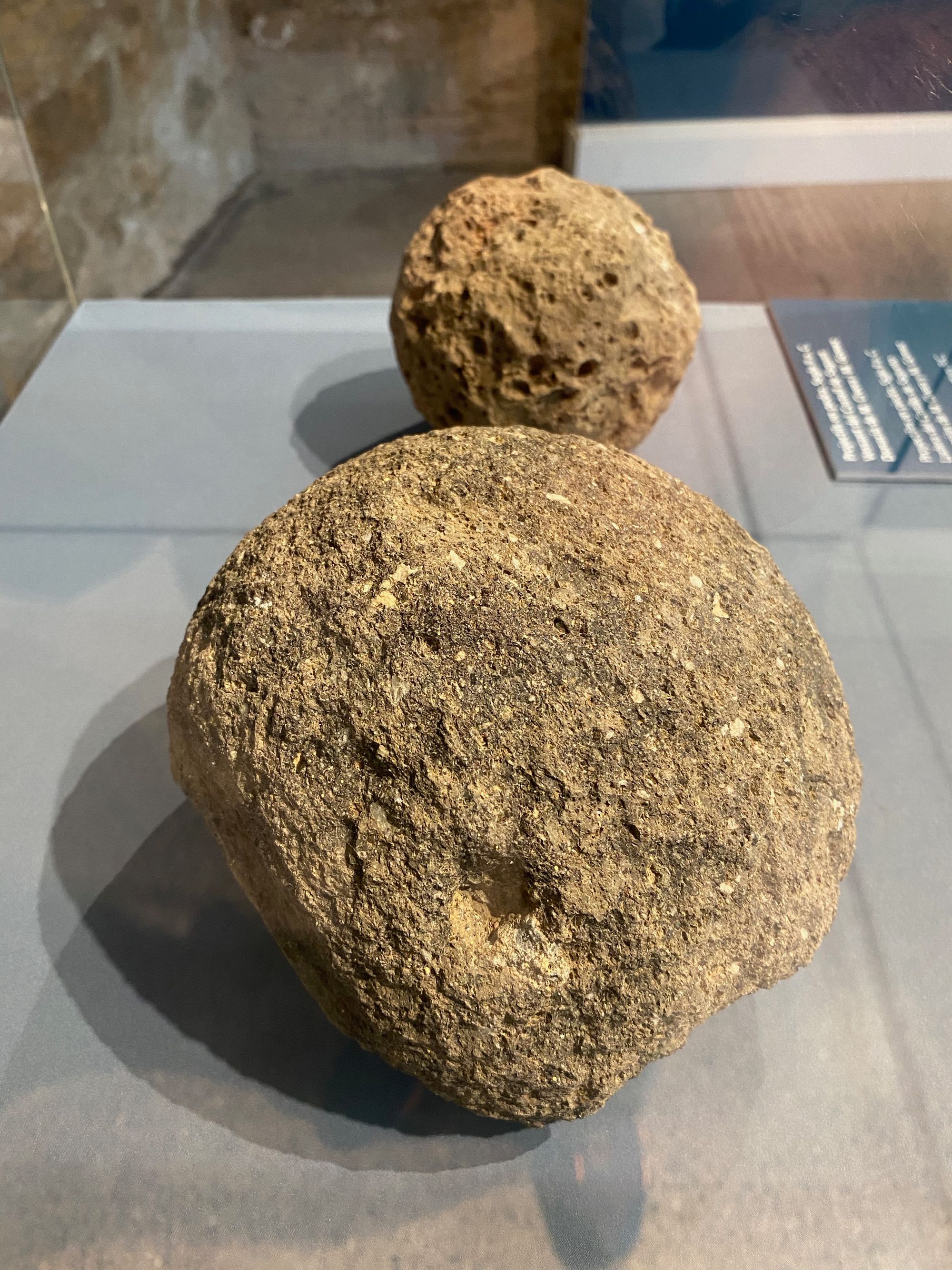
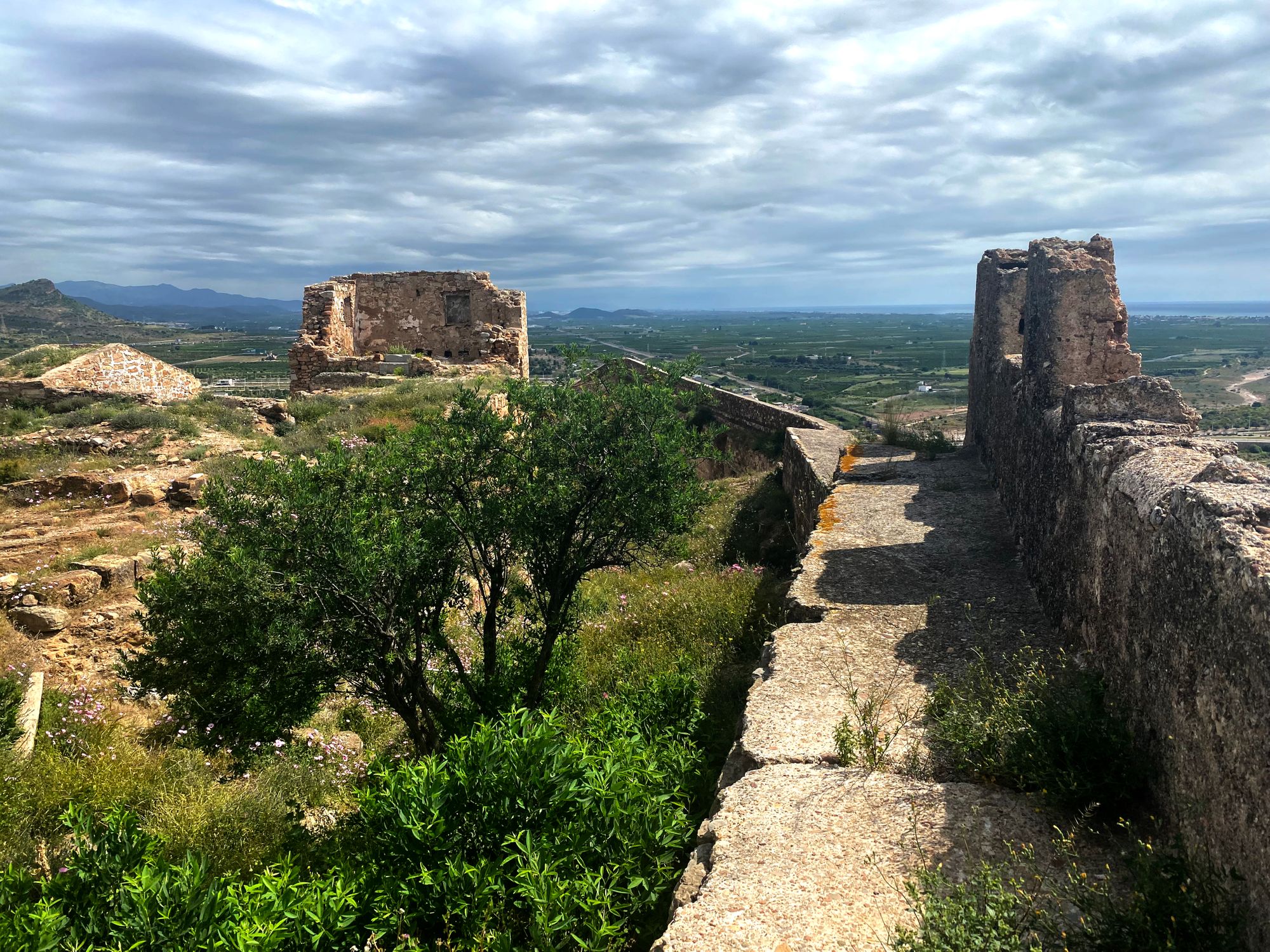
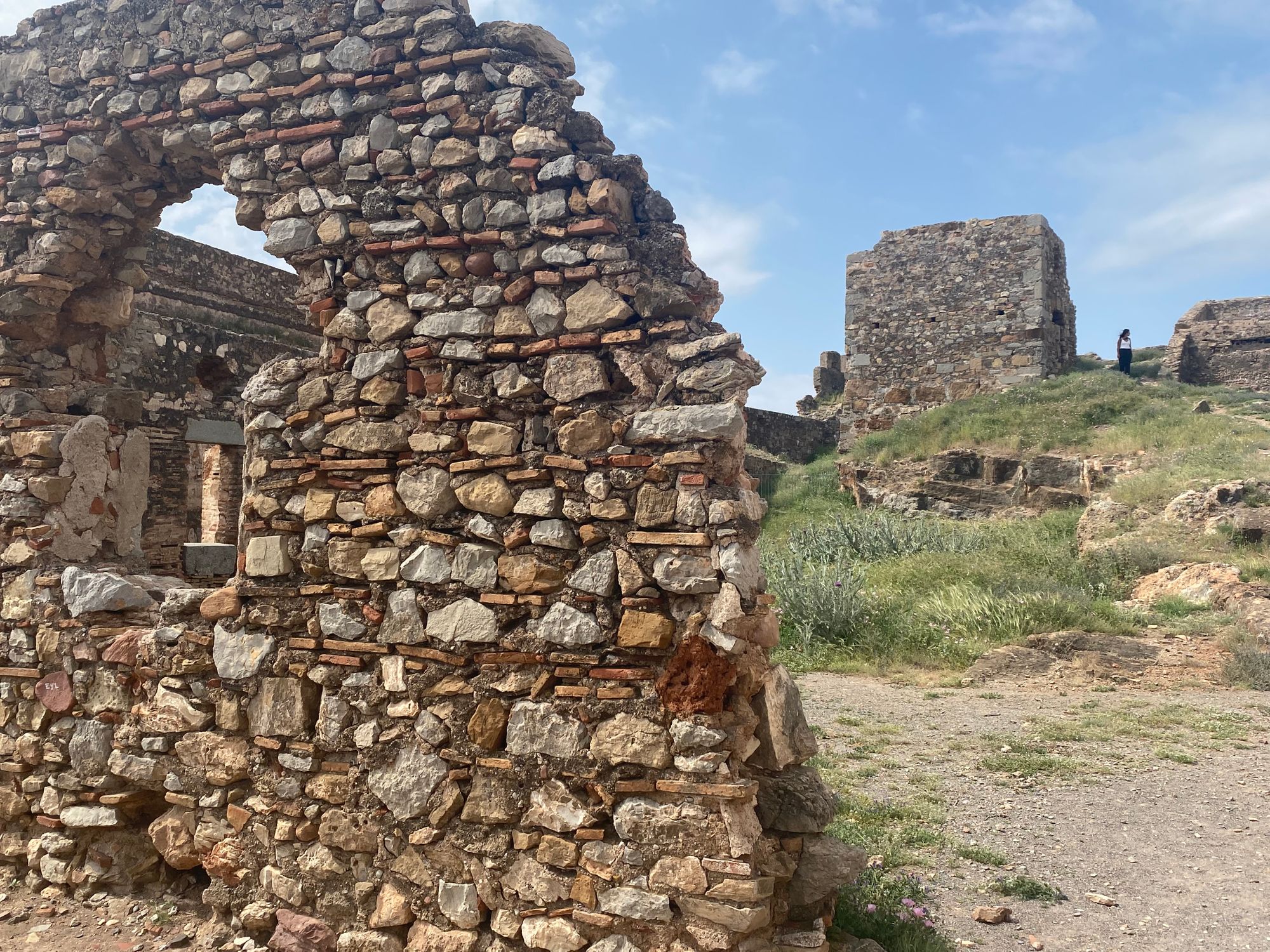
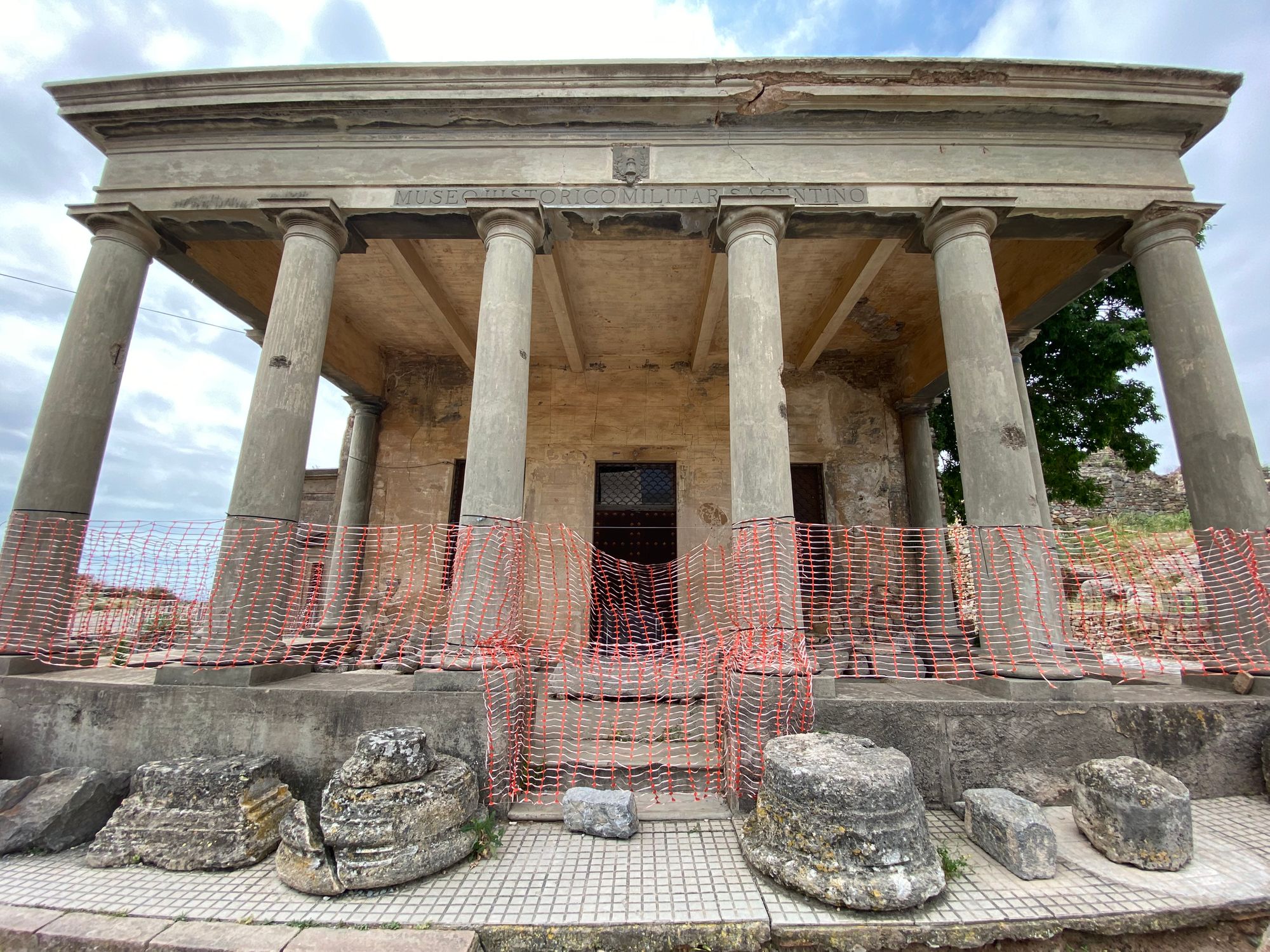
Rome was infuriated and sent a delegation to Carthage to demand they hand over Hannibal or it would be war. The Carthaginian Senate which had received some of the plundered riches of Sagumtum refused and Rome declared war on Carthage. The Second Punic War had started and Hannibal needed to strike fast before Rome could consolidate their belligerent northern Gallic opponents and increase the strength of their legions and navy.
_____________________
Following the victory of Sagumtum we would now be following the same route Hannibal took into Italy.
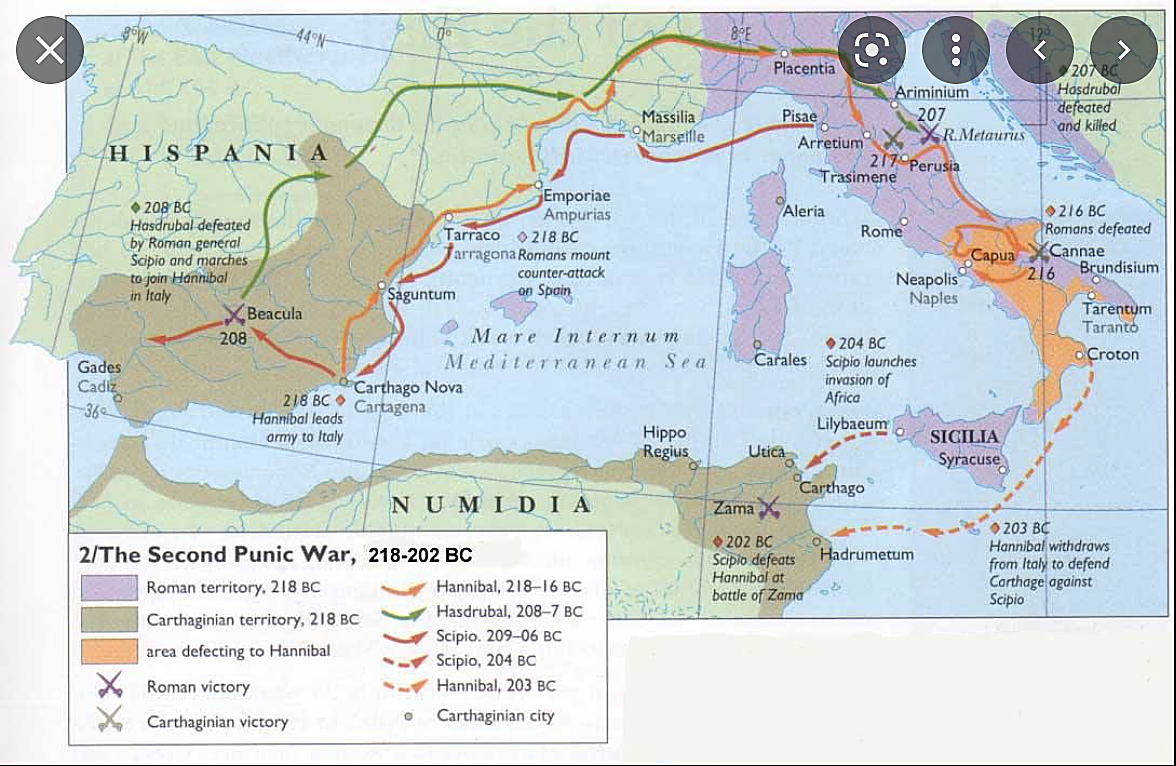
Al had rented the car and would be the driver for the Hannibal Trail. Each day we had a significant site for the story of Hannibal to visit, explore and document. However, as we set out each day with Al at the wheel, I would check other points of interest I had marked on Google Maps. Most had to do with Hannibal and they were marked with a heart. Others including Spanish Civil War points of interest were marked with flags.
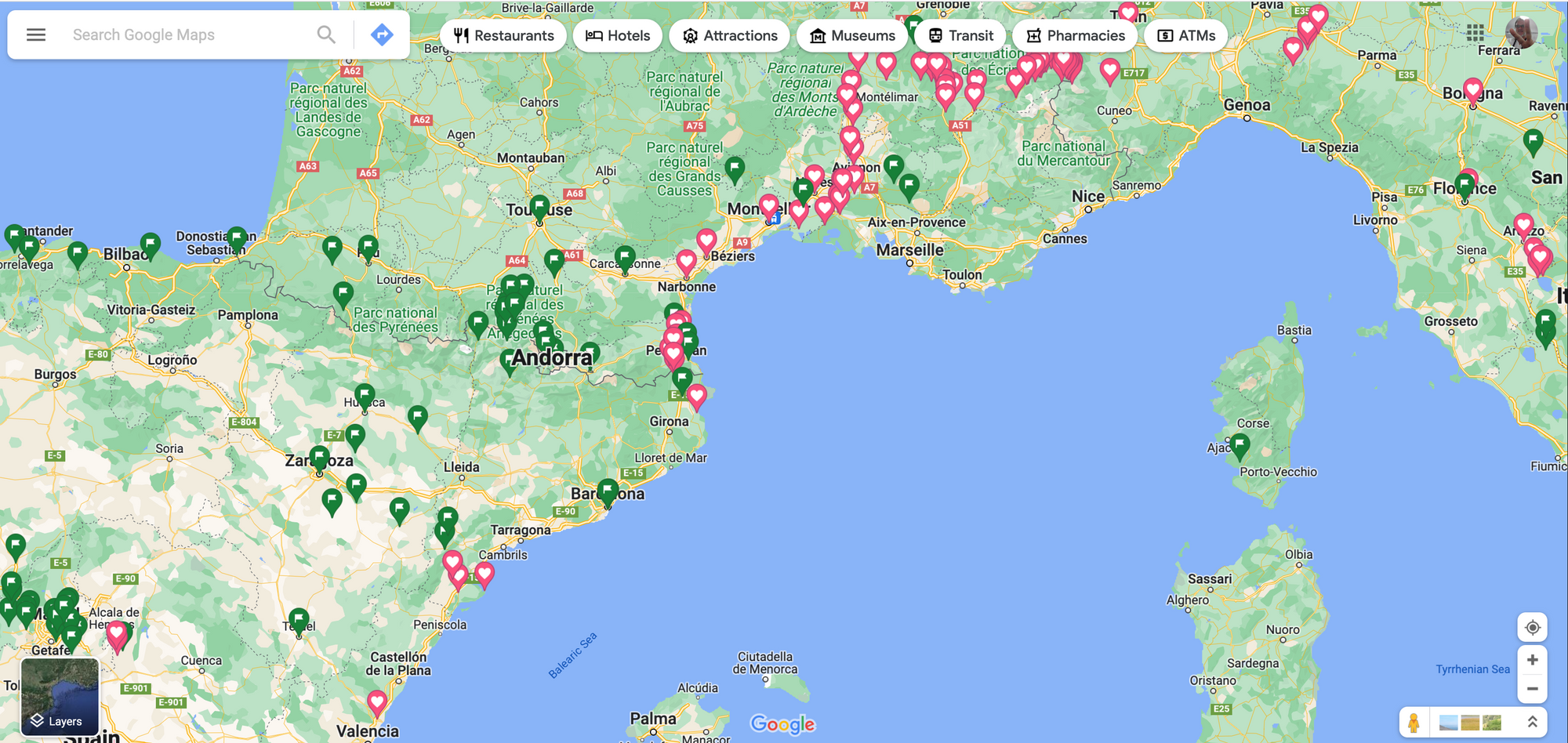
On leaving Sagunto we headed north towards the Pyrenees - the mountain chain separating Spain from France. I checked Google Map heart markers and one on the Ebro River estuary jogged my memory as a naval battle between Carthaginian General Himilco and the Romans.
"Clouds were accumulating and the sky darkening as we drove the long flat river estuary road where the famous Ebro River (also of significance in the Spanish Civil War) that divided Carthaginian and Roman spheres of control flowed into the Mediterranean Sea.
"It was now raining pretty hard when we parked at the end of the road. I had seen a tower on Google Maps and strange art type displays and thought that we could park there. Just was we opened the back hatch to don rain gear a tremendous thunder and lightening bolt struck in the vicinity. It was scary and both Al and I were concerned about proceeding in the open to the tower hundreds of meters away.
"Al had seen the lighting bolt and described it as thick and bright. Later as we left we saw a fire burning a few hundred meters away and we speculated this was where the bolt had hit igniting the fire. I don't think I have ever been closer to a lightening strike than this one. The travel angels with certainly with us today. So off to the tower I jogged. Al having already suited up with rain pants and jacket. It was pouring rain, but we were determined to see the naval battle site come what may. Up the rain slicked stairs of the wooden structure. A few quick and dull photos (image-wise) of the scene.
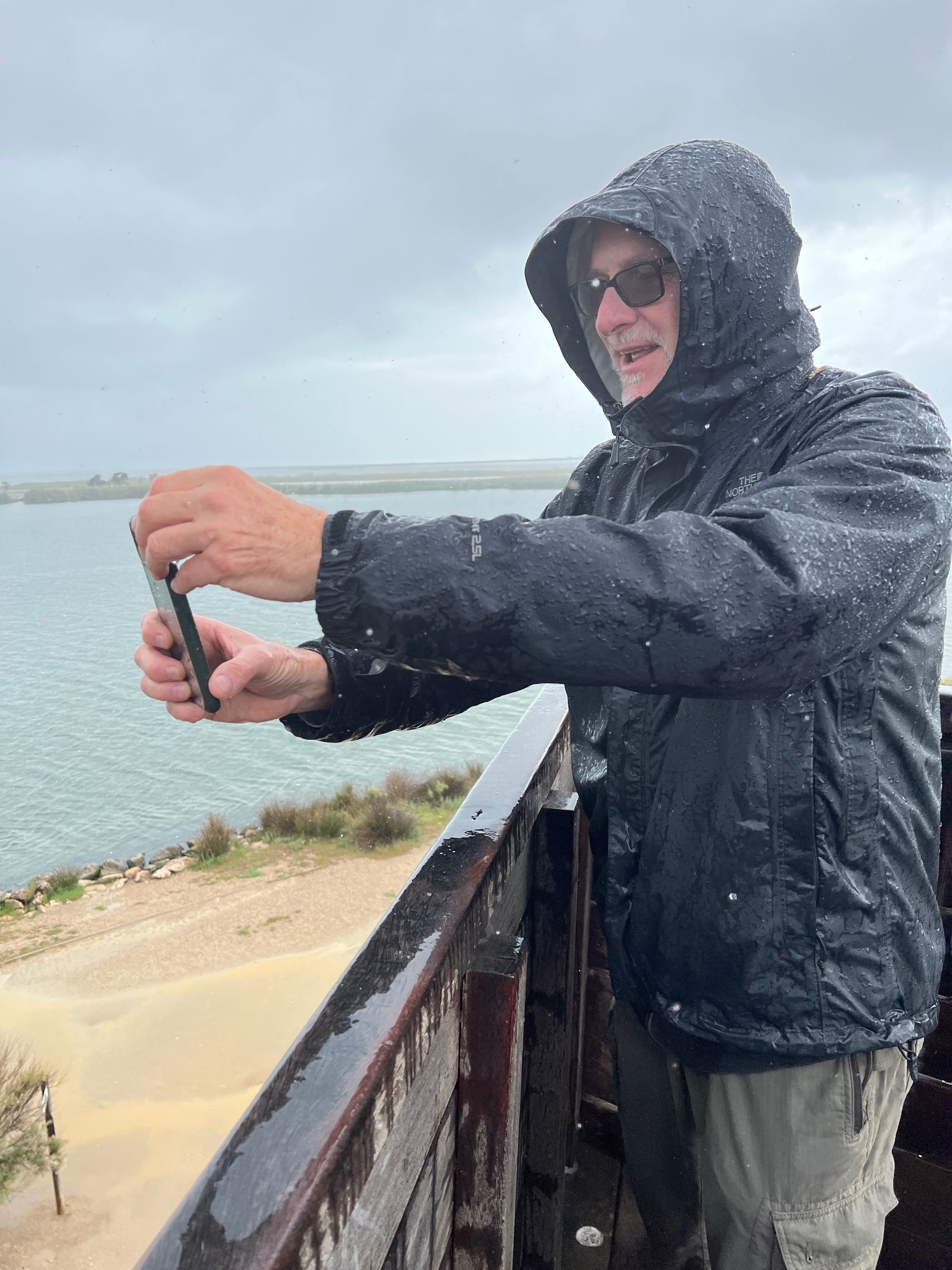
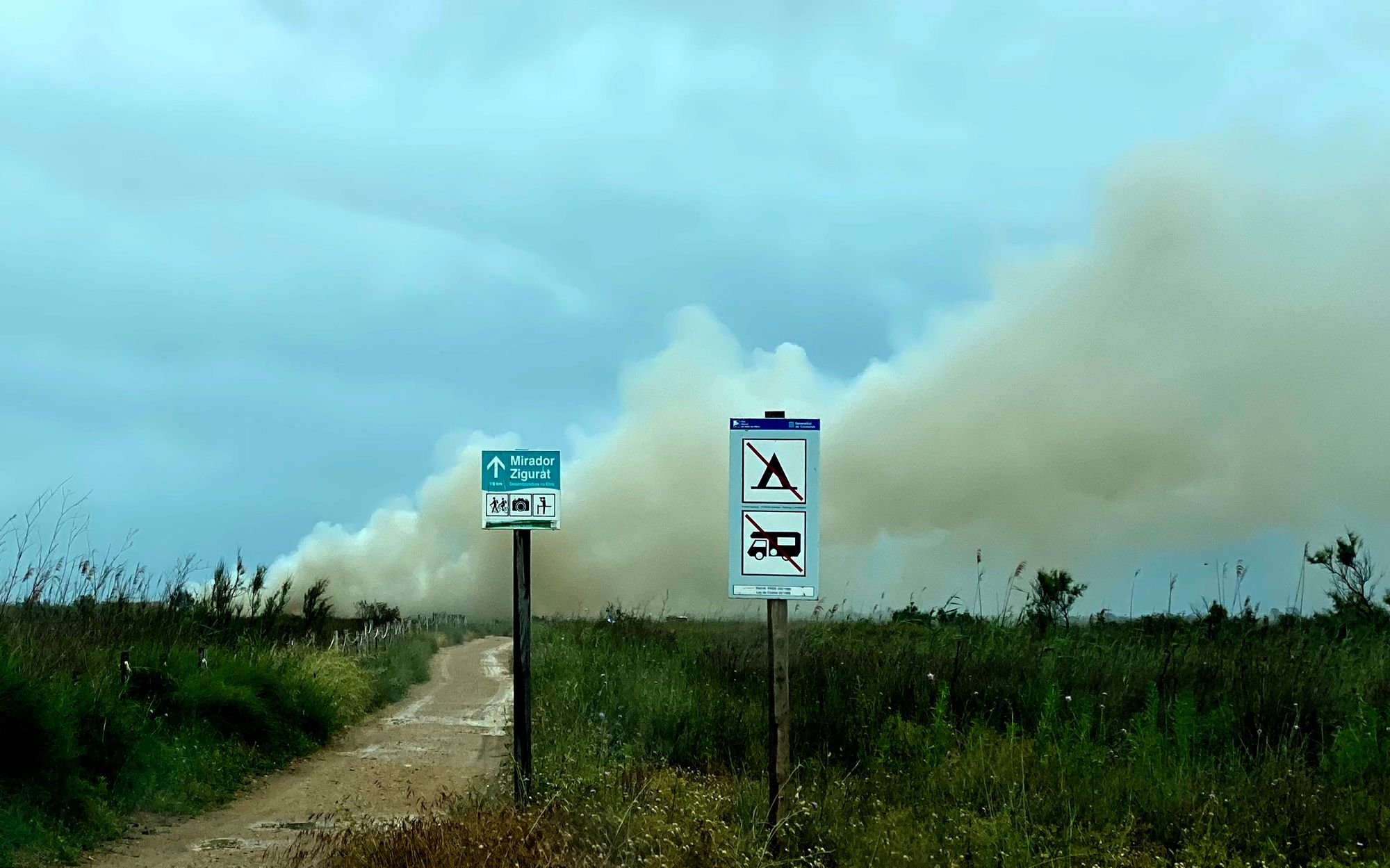
"Panoramas and then a jog back with Al again ahead and urging me on with shouts of “get going recruit..hustle up” as if he were one of his Ranger training instructors (Al, as with many things he had done in the military, had gone through the US Army Rangers six week training course)." from my journal | 05-24-22
_________________
The Battle of the Ebro River |
Hasdrubal Barca, the brother of Hannibal, lead a joint force into Roman controlled territory moving up the Mediterranean coast. He commanded the land army and Himilco was in charge of the Carthaginian fleet of approximately 40 quinqueremes. As the Carthaginian crews, many of them hastily trained Spanish sailors, foraged along the estuary, Massalian-allied ships spied the anchored fleet and managed to evade Carthaginian shore patrols undetected and reported the siting to Gnaeus Scipio, the Roman commander.

Though the Roman fleet was undersized and fearing a land attack on his outnumber forces, Gnaeus immediately manned his 35 quinqueremes and triremes ships with handpicked legionaires and set sail accompanied by the skilled maritime allies - the Massilians. They were spotted by Hasdrubal's land army who lite signal fires - probably much like the lightening ignited one that was visible for miles on the completely level coastal delta - to alert his fleet.
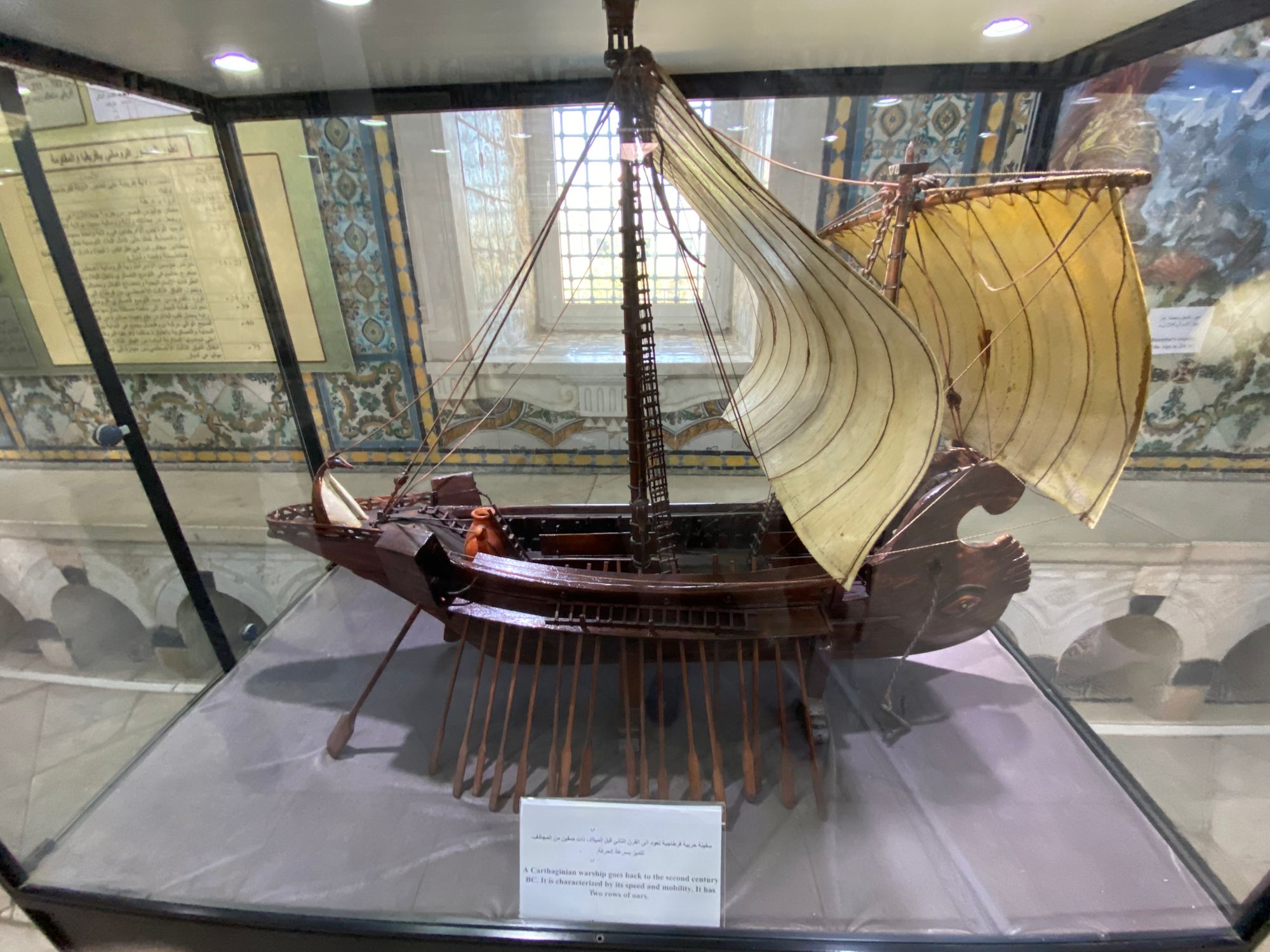
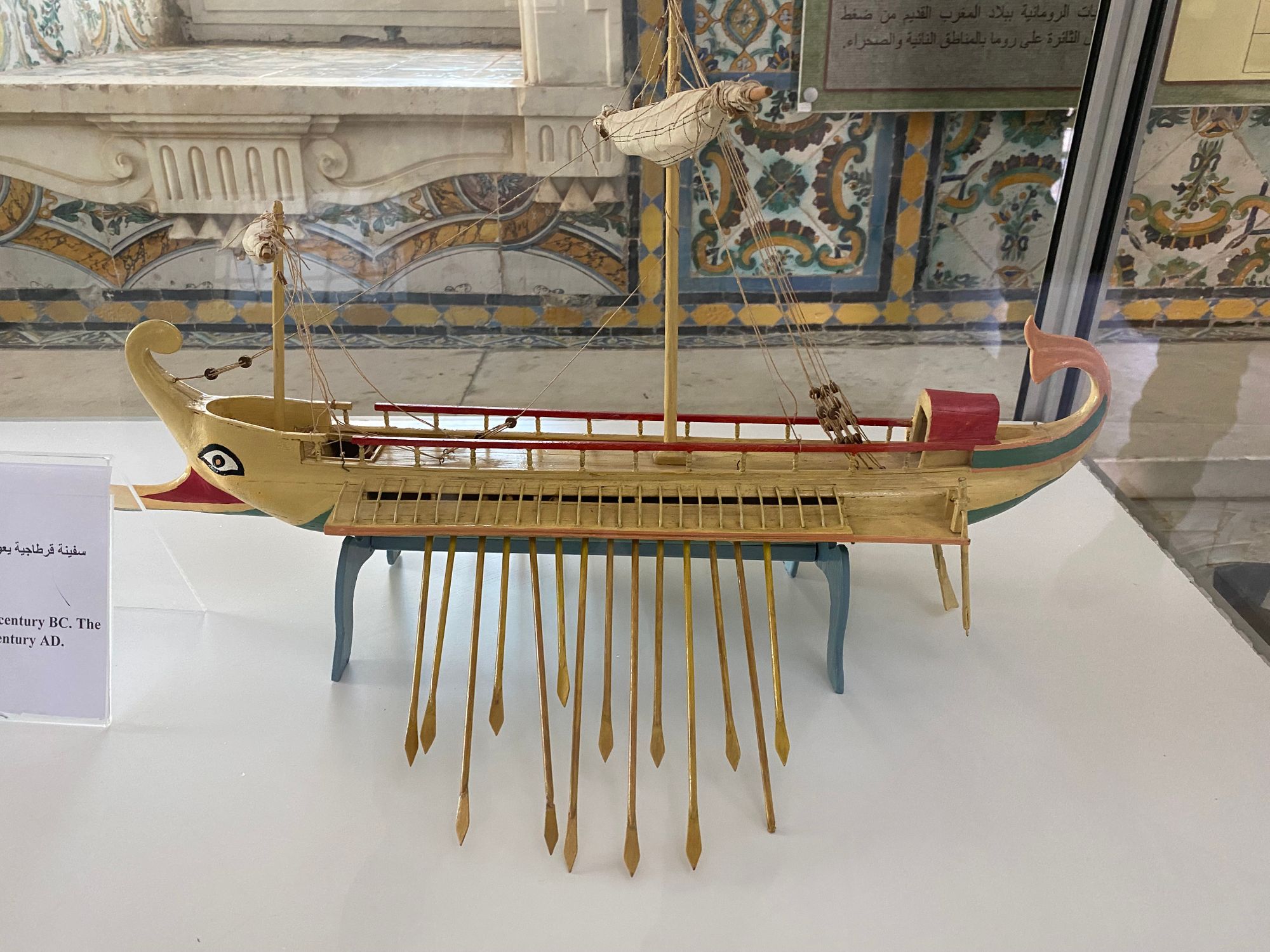
The forging Carthaginians hastily pushed off in a disorganized manner and were soon face-to-face with two lines of Roman ships barreling down on them. Four ships were rammed and sank. Two others were boarded by legionaires who quickly overpowered the crews capturing the ships. Hasdrubal's army had drawn up on the shore and shouted encouragements. But it was too late. The Spanish recruits had lost heart and beached their ships and fled. The Romans grappled and hauled away 23 of the abandoned ships.
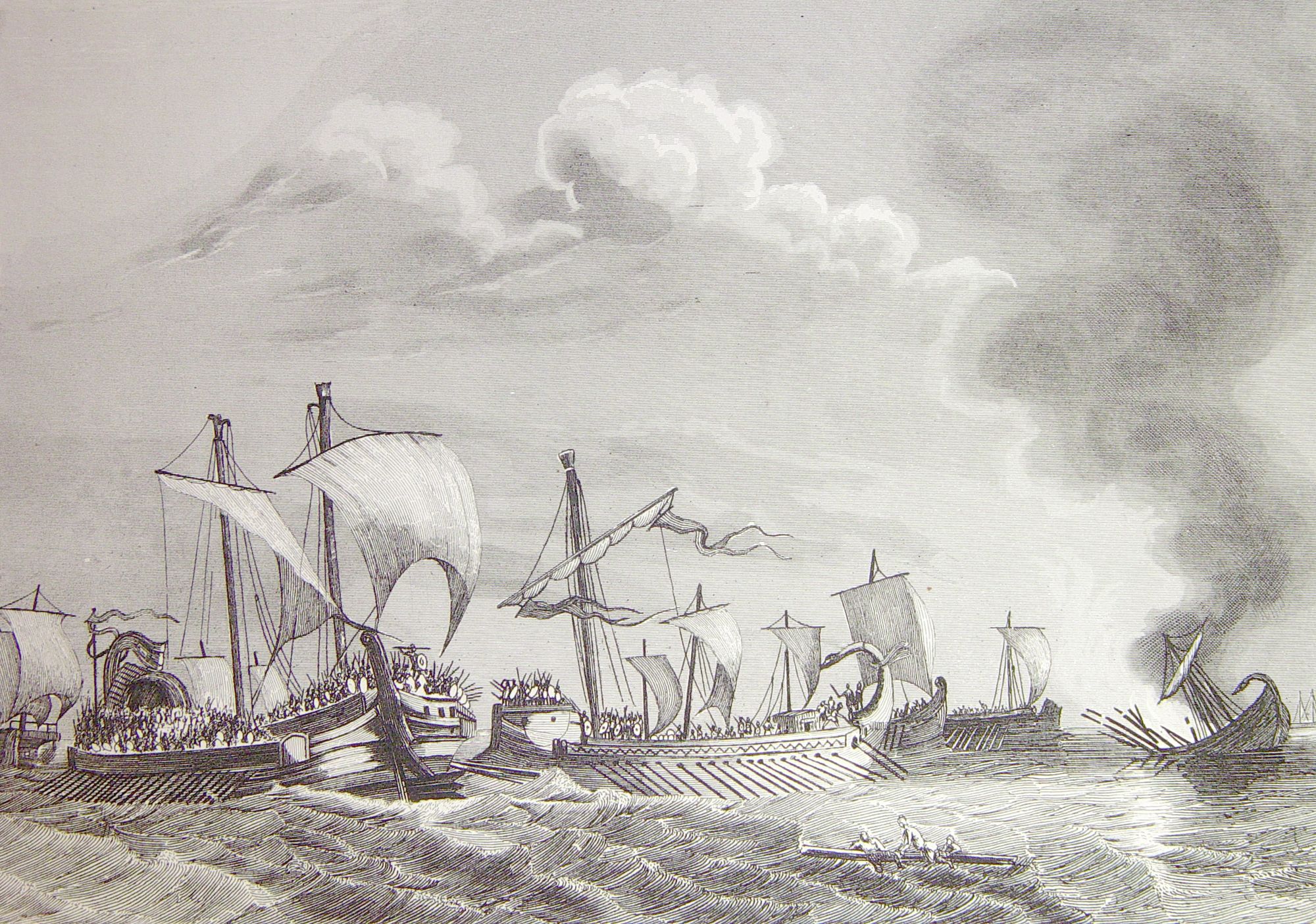
Though the Battle of Ebro was of relatively small scale it had significant repercussions for Hannibal who was in his second year of his Italian campaign. The battle effectively gave control of the Iberian coast to the Romans. Hasdrubal whom Hannibal had anticipated would come to Italy to push a final victory against Rome was now needed to protect the Carthaginian Iberian coast which was at the mercy of the Roman navy. Even badly needed supplies could not make it through the Roman sea blockade.
It would be 13 years later when his other brother, Mago, would succeed in landing an army by sea in Italy from Iberia. By that time it was too late and Mago would be defeated and die at sea returning to Carthage.
_______________
Our next stop on the Hannibal Trail would be the Le Perthus pass over the Pyrenees that he negotiated with his 80,000 man army in 218 BC.
It was also the pass where the majority of the 500,ooo Republican refugees fled to France to escape the fascist take-over of Spain by Generalissimo Francisco Franco Nationalists forces in 1938.
During my research of Hannibal in Spain, I came across Spanish Civil War stories and points of interest, that intrigued me and I started to read up about them - particular that of the International Abraham Lincoln Brigade of American volunteer fighters. Writers such as George Orwell and Ernest Hemingway had participated and written about the bloody struggle that pitted a coalition of Spanish Republican forces against the Nazi-supported disaffected army officers dominated Nationalist forces under Franco. We were approaching Barcelona - Camp of the Barcas - and decided if we were going to visit the Catalonian capital and hotbed of Republican Civil War politics and confrontations, it had to be now. We would do a morning walking tour of Spanish Civil War sites and then resume the Hannibal Trail.

After a fascinating visit to some of Barcelona's Spanish Civil War sites - beware a blog may be coming - we were back on the Hannibal Trail. Next stop Le Perthus.
Le Perthus | Spain | France border | Pyrenees |
"We followed Google Maps, as we have throughout our adventures. It has been incredibly reliable, but in this case it led us up a narrow degraded very steep asphalt-broken and gravel road on the Spanish side of the border. After a few hundred meters, we turned around and debated whether we should press on to the site.
I found another road on the French side that seemed passable and after a crawling along in a long line of cars through the border and into the packed French town we started up the road and drove around a barrier saying “Residents Only” and up to the pass. Still a narrow twisting road but paved and passable.


At the top was an enclosed French war graveyard (primarily to victims of WWI as most of them are). It was windy and eery with an ancient tower marking the border. We wanted to find the ruins of a Roman village at the summit where the Roman roads Via Domitia and Via Augusta met. We decided on a small trail that ran along the border and I discovered a small underground bunker complex that looked like it could have been a heavy machine gun emplacement. We made it to the Via meeting place and it was more expansive than what I had seen in photos online. I posed for a meditative zen pic in an arched enclosure and contemplated Hannibal and his army of 80,000 and elephants crossing this narrow, but relatively low pass on his way towards Italy." from the journal | 05-25-22
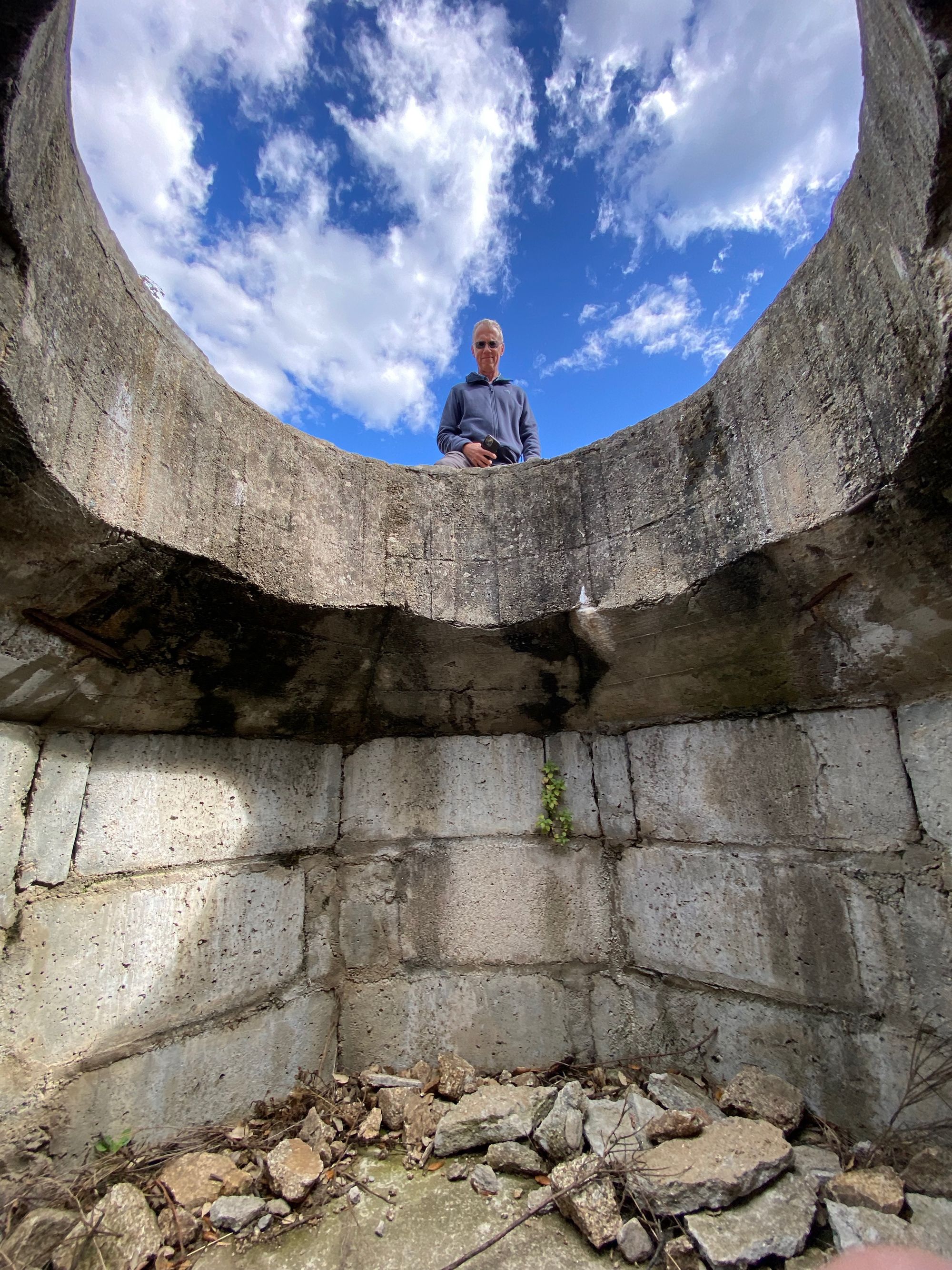
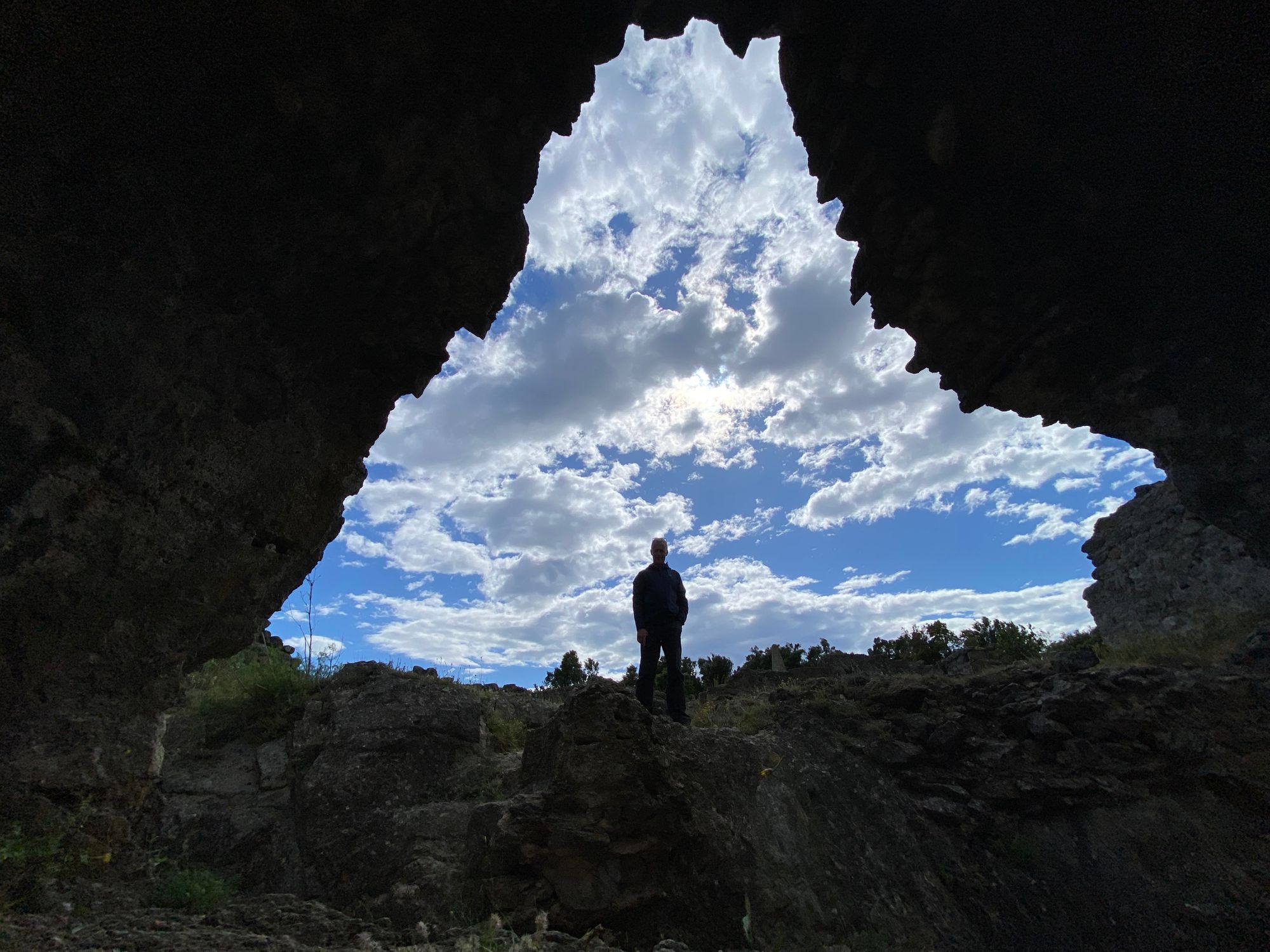
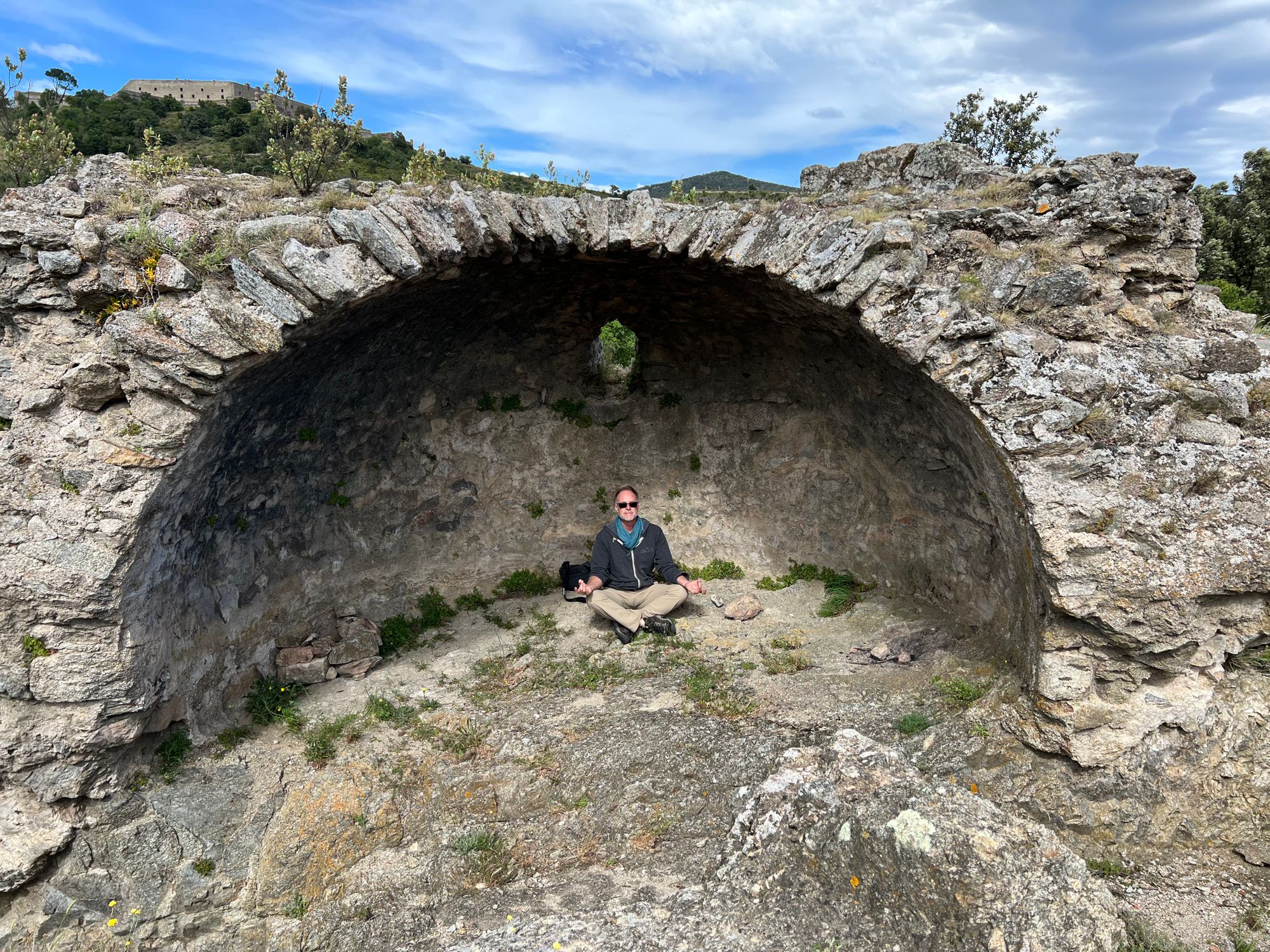
____________________
After the seige of Sagumtum, Hannibal's next obstacle was the Pyrennees. Though the Le Perthus pass is along 950 feet in elevation- making it one of the lowest of the mountain chain that runs from the Atlantic Ocean to the Mediterranean Sea - he had to content with hostile Spanish tribes. After subduing them and summiting the pass and entering into the land of the Gauls - current day France - he was faced with a potential mutiny among his Spanish levies who were reticent about leaving their homeland. Instead of usual means of subduing insubordination with harsh punishments and executions, which he feared might spread discontent and degrade moral, he instead chose to announce that he was sending back 11,000 soldiers to safeguard the newly won territories of northern Spain.
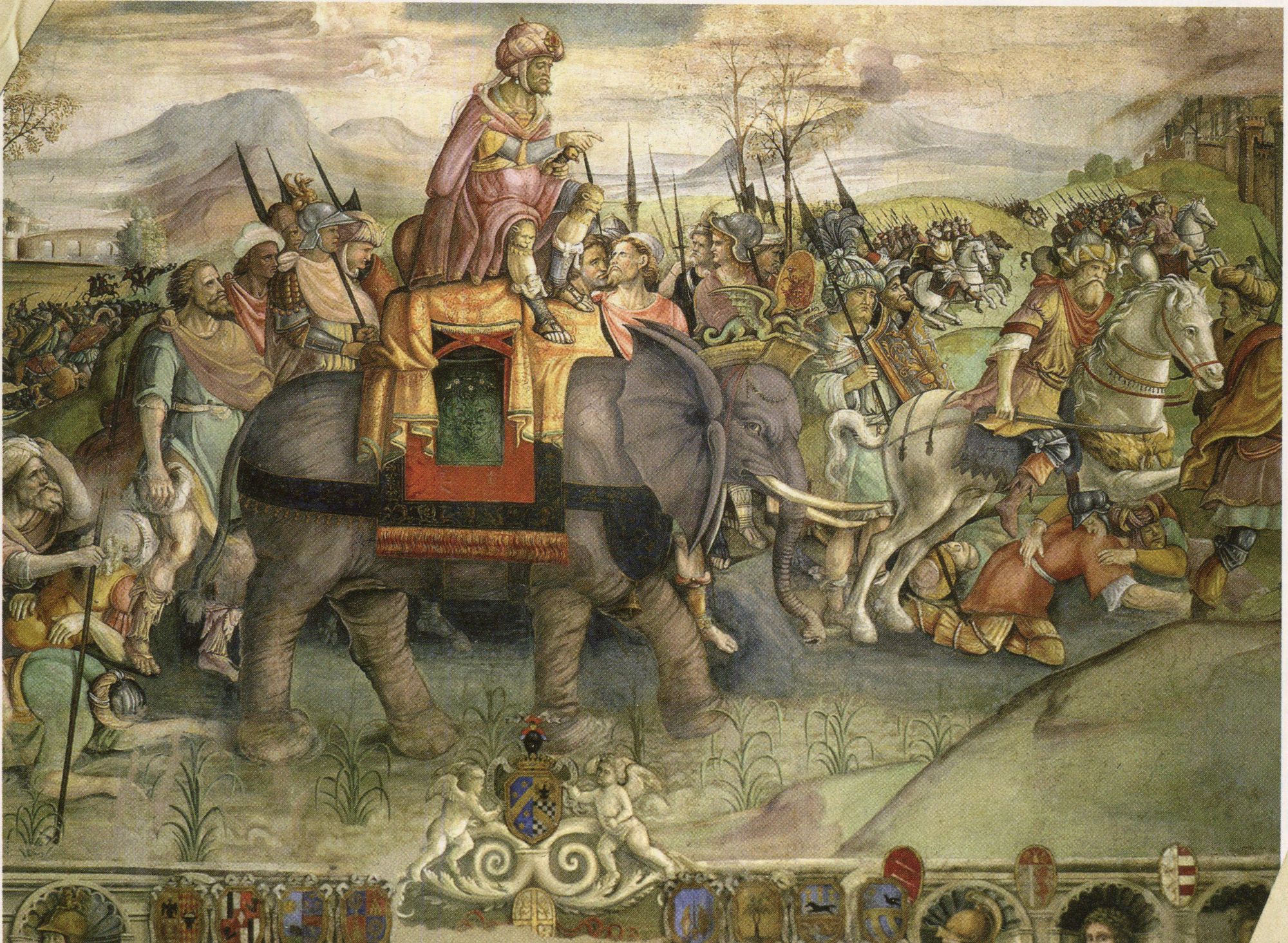
From this point on there was no turning back for his column. He not only needed his soldiers to be committed, but he knew he needed to whittle down his army to a truly disciplined and experienced fighting force. The now estimated 52,000 man force with 37 elephants and hundreds of pack animals and horses would be completely reliant on forging the land, buying provision or if necessary fighting for them and their passage.
It was summer 218 BC, the clock was ticking down on a passage over the Alps. He still had more than 600 kms to go - crossing rivers and over the lower Alps - before he was in Roman territory.
________________
France | The Crossing of the Rhone River
The next great obstacle in Hannibal's march to Rome would be the Rhone River.
"Back in the car, we raced towards the Rhone River crossing. We passed Rivesaltes internment camp which we would revisit in a few days and then as the sun was low in the sky we approached an area north of Arles at Fourques where the most logical estimates put the difficult and dramatic river crossing. I had selected what I thought would be an accessible place and possible crossing place where we could park the car and overlook the river. Well as it turns out there are two levies before the river and in between, the area is overgrown and not meant to be walked through. We had little choice as the sun was about to set and finding another more accessible place might take us further from the likely crossing area. So over one levy and into the underbrush which was sometimes 8 feet high and full of barbs. . Our socks and pants were covered with them. We fought through the brush and climbed a forested embankment and in front of us lay the slow flowing Rhone River." from my journal | 05-25-22
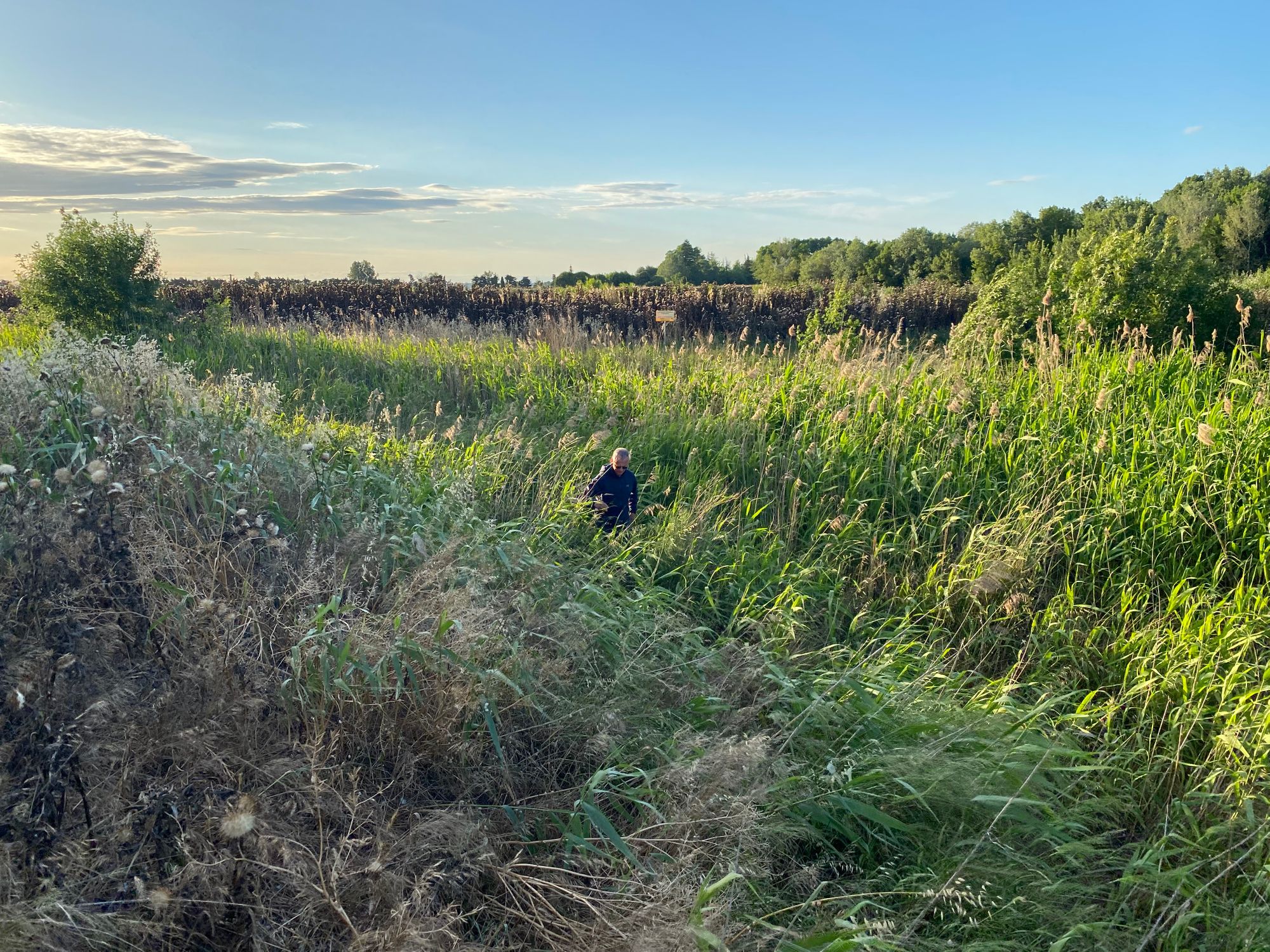
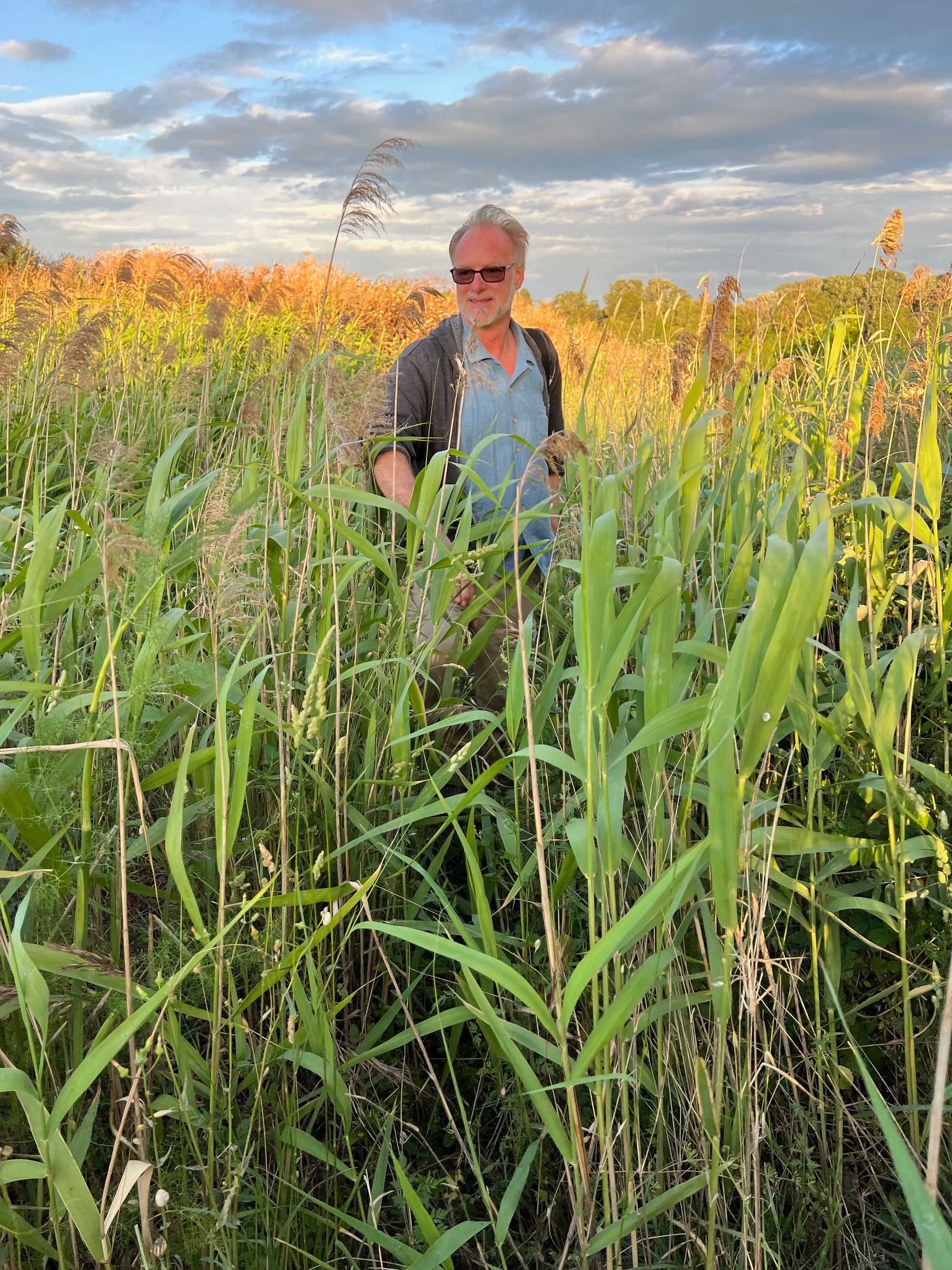

Hannibal had secured safe passage through the Gallic territories west of the Rhone River by assuring the chieftains of his peaceful intentions and also with generous gifts. He reached the Rhone in September with 38,000 soldiers. The Gauls were divided into two Volcae tribes with one group opposing Hannibal's intrusion into their territory. They crossed over to the eastern bank of the Rhone River and prepared to give battle when Hannibal tried to cross.
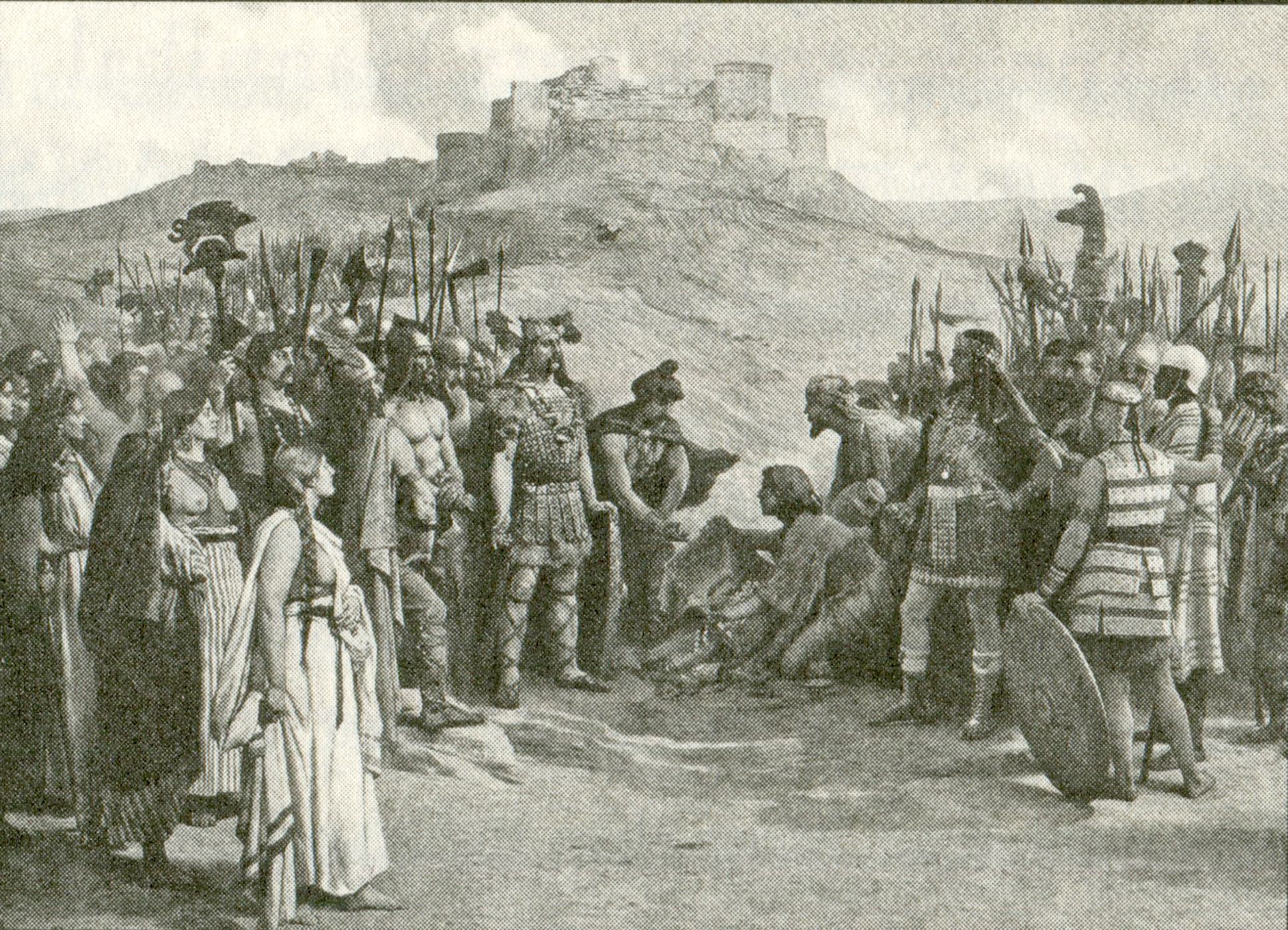
Hannibal, realizing a direct river assault could fail, decided to send this second-in-command, Hanno, on a secret mission to attack the Gauls from the rear. As Hannibal constructed and purchased boats for the river crossing and studied the river, Hanno took a sizable force north at night and clandestinely crossed the river. After four days of preparing for the crossing Hannibal was ready. Hanno had moved into position behind the Gauls camp and lite a fire and smoke beacon to alert Hannibal that he was in position.
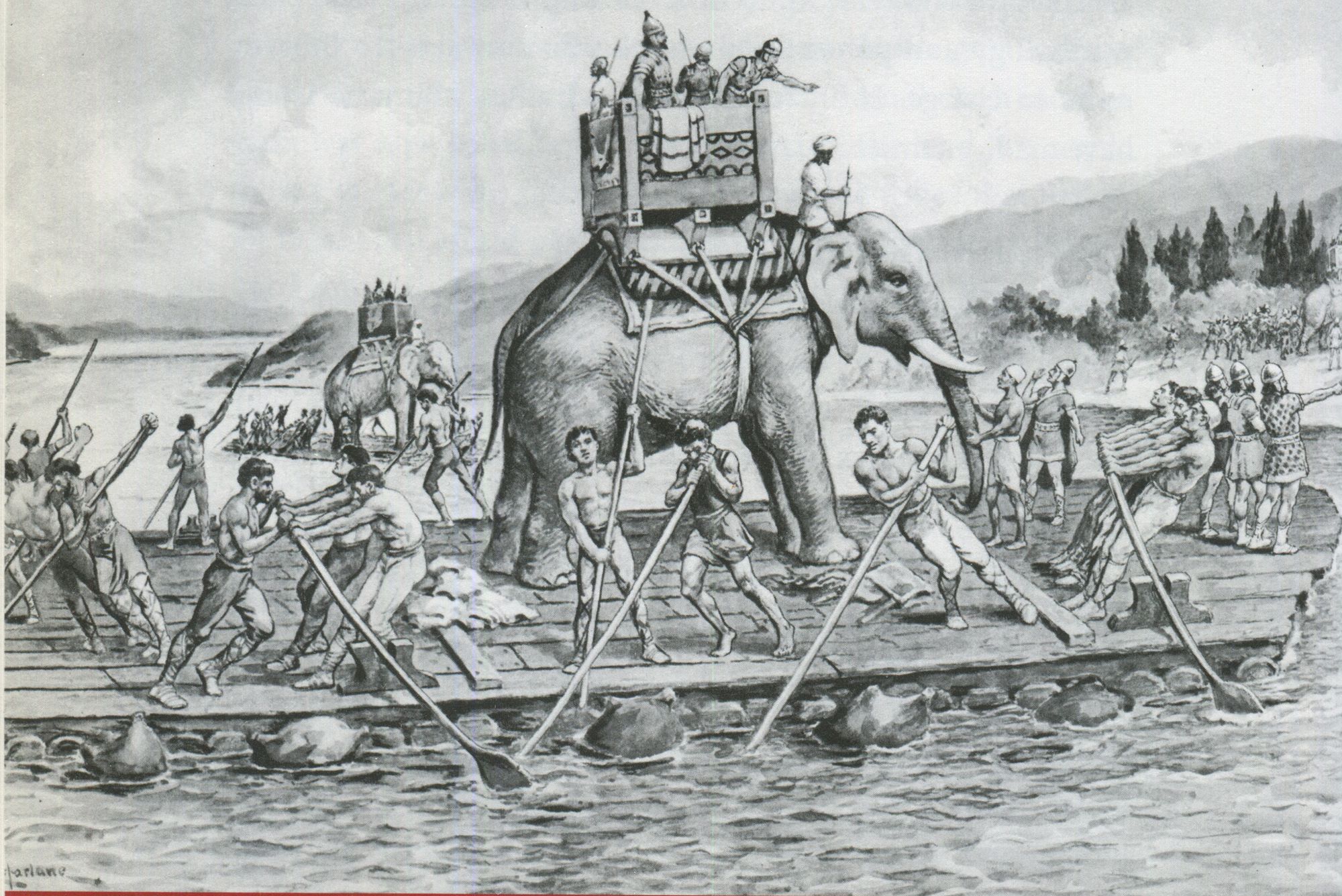
Hannibal started his crossing and the Gauls who had been waiting days for their opportunity beat their shields, brandished their swords and gathered at the edge of the river yelling war cries. Infantry were send across in canoes. Cavalry some already mounted were dispatched upstream ready to spring into action once on the other side. With the first wave of the amphibious assault, one of the largest in ancient history, underway, Hanno started his attack.
He swept in from his hidden position with his Spanish cavalry and proceeded to burn the Gaul camp. The surprised and confused Gaul broke ranks. Some ran to defend the camp, others tried to defend their rear now that Hanno's calvary and infantry was bearing down on them. Hannibal who was with the first wave landed and the disorganized and disoriented Volcae tribe were struck down and destroyed in the pincer movement.
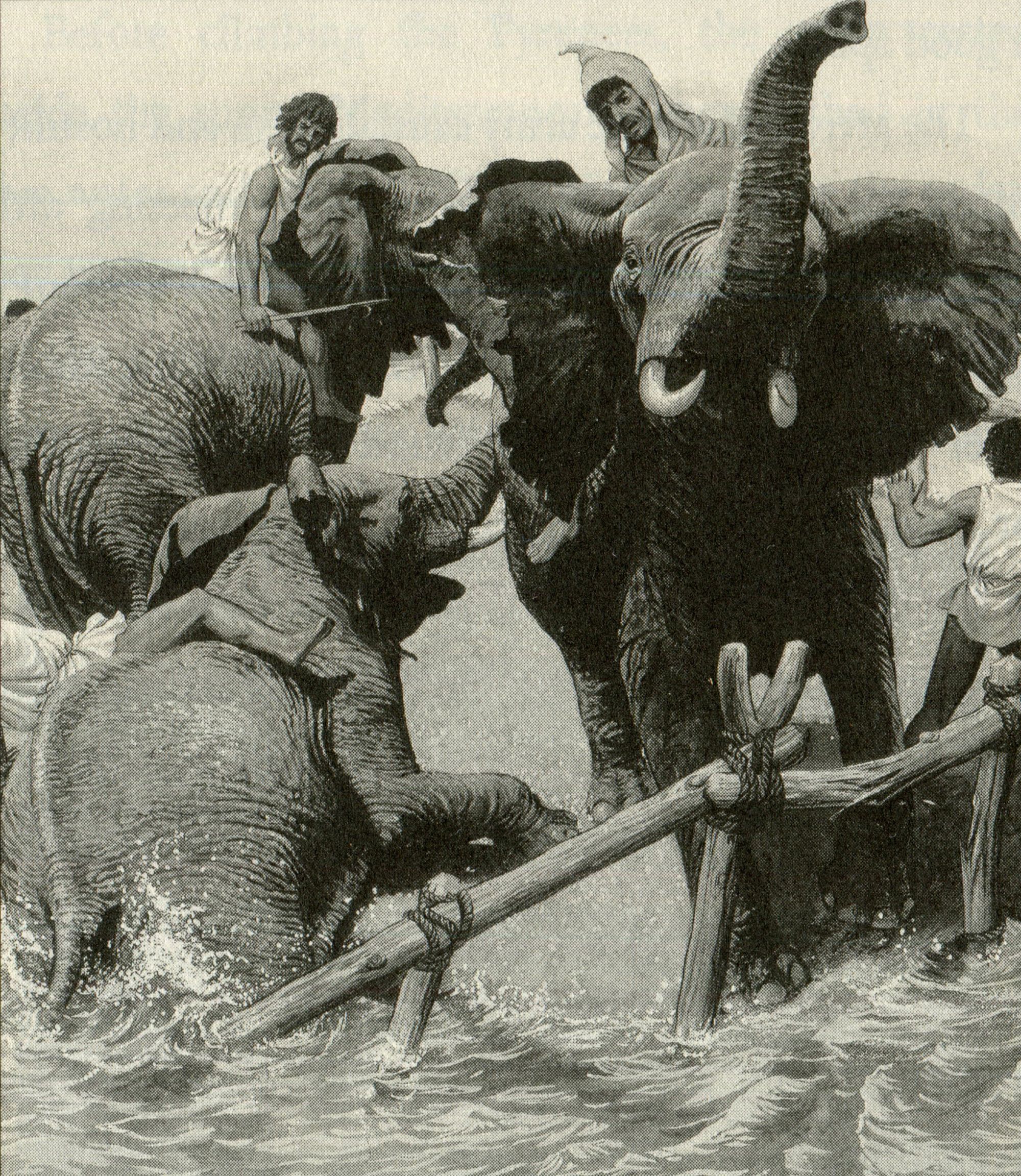
The rest fled and Hannibal successfully brought his remaining army including the elephants which were ferried across in earth covered barges. Some panicked and capsized the large wooden rafts drowning their handlers. All 37 elephants managed to cross.
_________________
Meanwhile, the Roman legions under the leadership of Consul Publius Scipio had landed at Massilia at the mouth of the Rhone River, only 90 kilometers to the south. He sent a cavalry detachment up the east bank of the Rhone River to scout a possible crossings or to find a defensive position to confront Hannibal. He had learned that the Carthaginian Army had crossed the Ebro River and might he heading over the Pyrenees. Hannibal learned of Scipio's presence and sent a cavalry patrol to investigate. The two cavalry detachments met and fought a brief battle with the Carthaginians pursued by the Romans back to the main camp of Hannibal.
They reported back to Publius Scipio and he decided not to pursue the Carthaginians and dispatched a portion of his army under command of his brother Gnaeus Scipio to Spain. He returned to Italy to organize a force to quell rebellious Gallic tribes in the Po Valley and to be prepared for an invasion from Hannibal in the unlikely possibility that he was able to cross the Alps at the onset of winter.
Hannibal, also had a choice - to engage Scipio and risks further depleting his army and delaying crossing the Alps into Italy until spring or head away from from the Roman army that may be sent to fight him and head towards a pass in the Alps and then into Italy. He chose to avoid battle, and try make it over the Alps where his envoys had indicated the Gauls were eager to join him in his fight against the Romans.
_______________
Ambush at Col du Grimone | France
"Today was going to be a long tough drive for Al. We were going to follow the route of Hannibal on the east side of the Rhone River north as he evaded the Roman Army stationed in Massilia (Marseille).
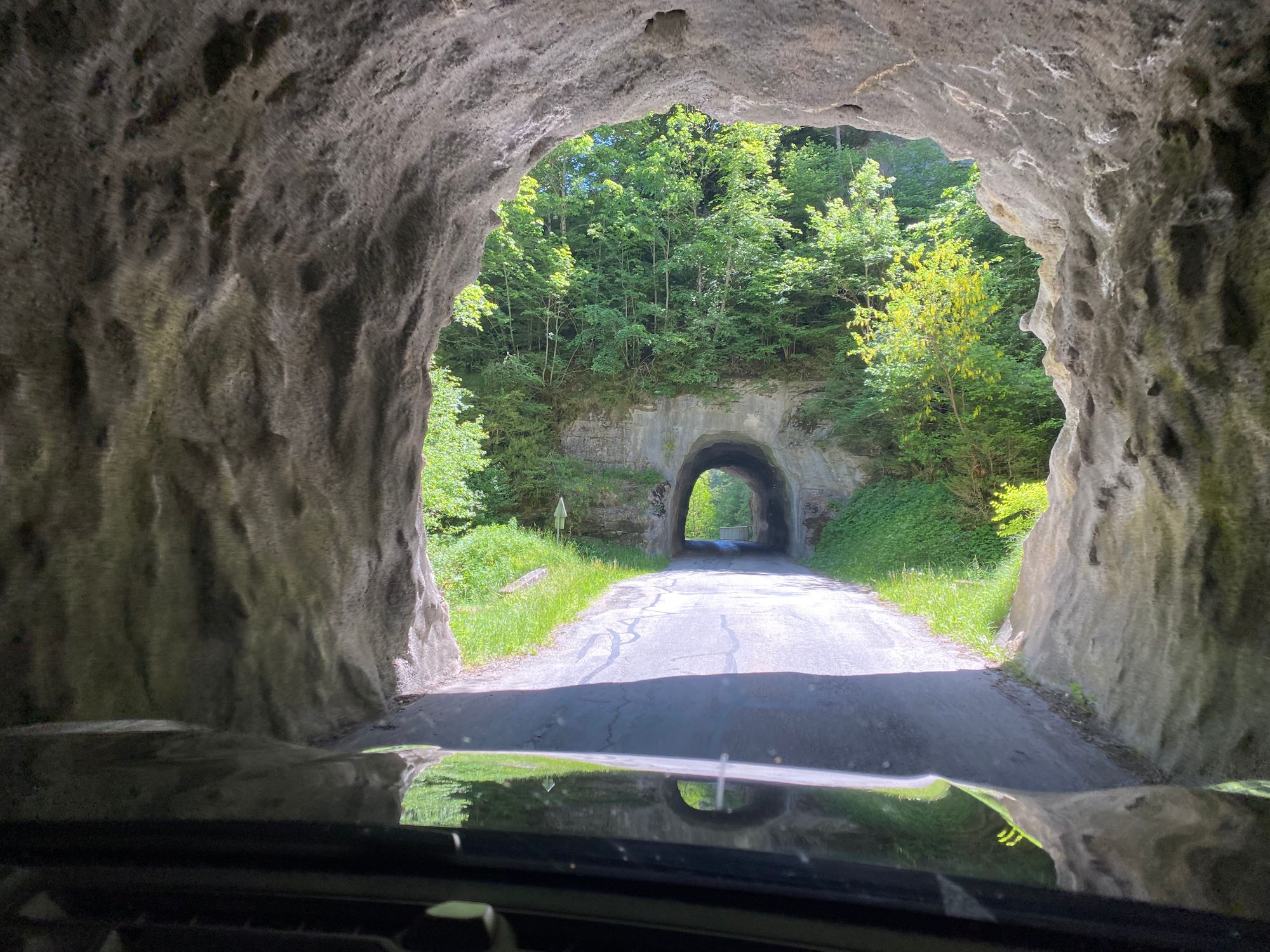
We followed the river and eventually headed eastward toward the Alps at Loriol-sur-Drome where the Drome River converges with the Rhone. We had fueled up and bought picnic provisions...our usual..baguette, cheese, some sort of luncheon meat, garlic flavored mayonnaise in a tube, Pringles flavored potato chips, olives (anchovy stuffed ones in Spain were awesome) and juice boxes.
The French countryside here, as in so many places we traveled through, was so beautiful. Fields, hills, forests, mountains, rivers, vineyards, greenery, old stone places covered with ivy and vegetation being reclaimed by nature. We reached the foothills of the Alps and climbed precipice routes along narrow river gorges and to where Hannibal's army was first ambushed by the double crossing Gauls...somewhere near Col de Grimone. A super narrow gorge where vertical rock walls forced Hannibal to march exposed from above though this perfect ambush spot." from my journal | 05-26-22
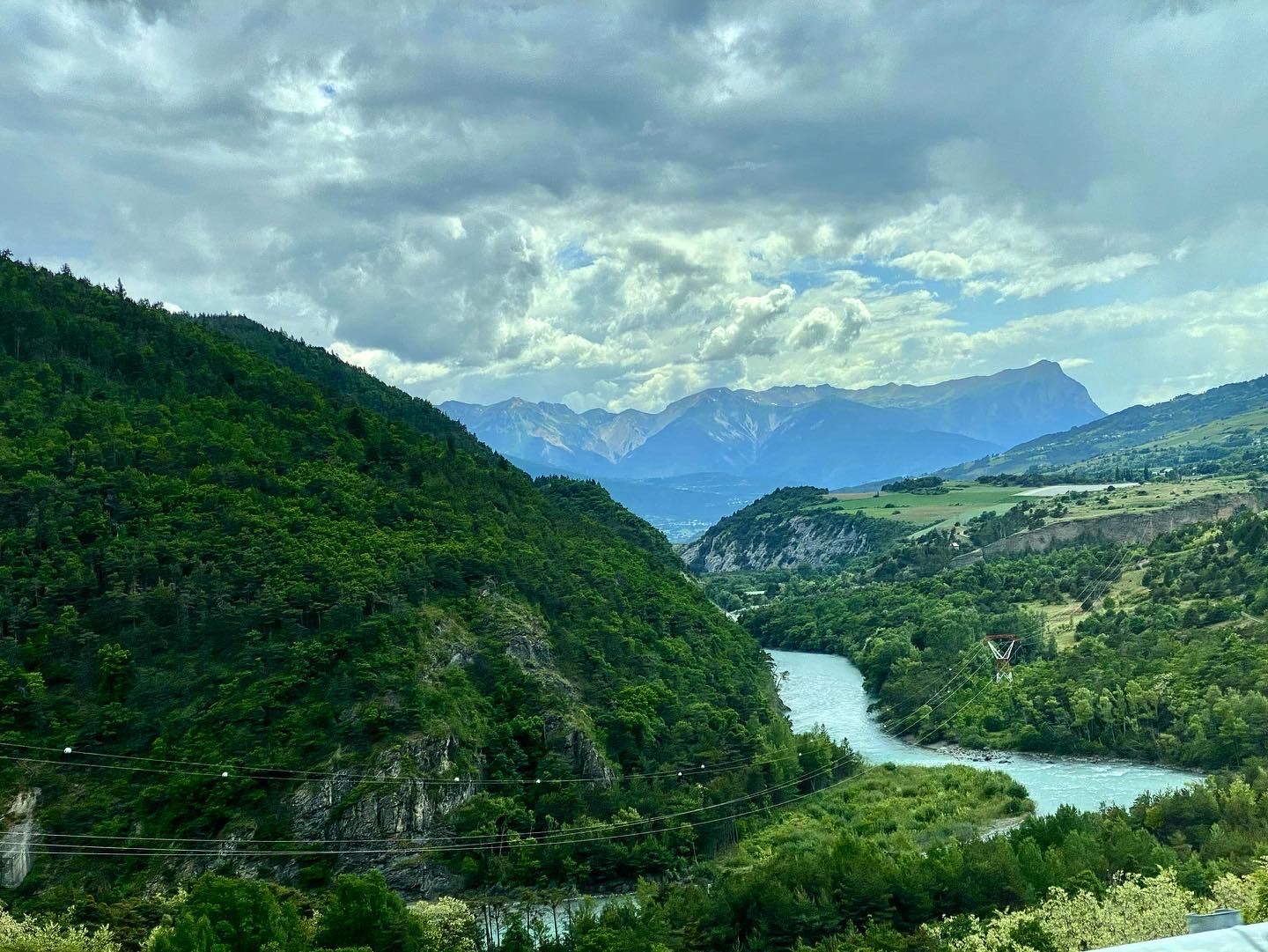
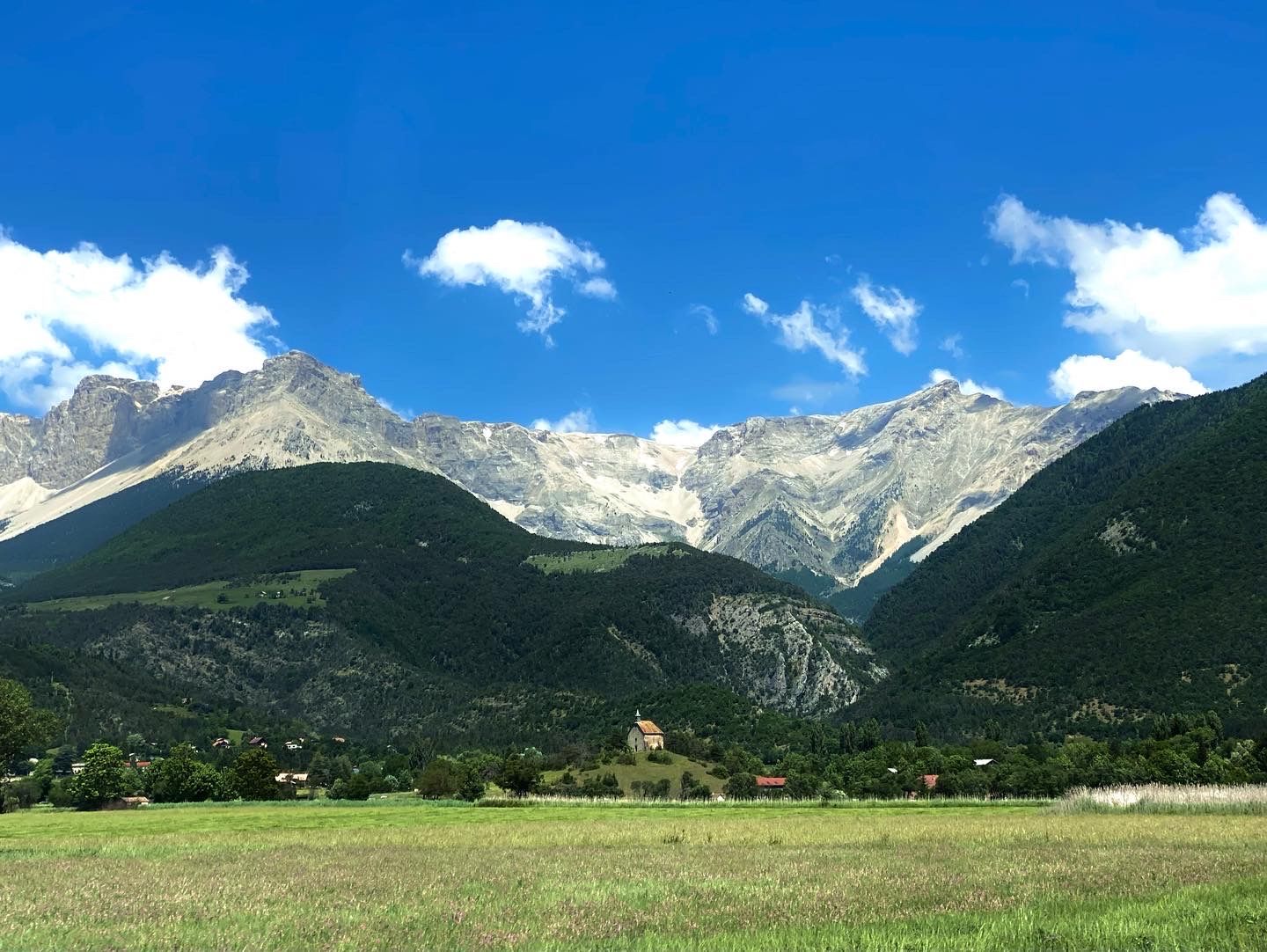
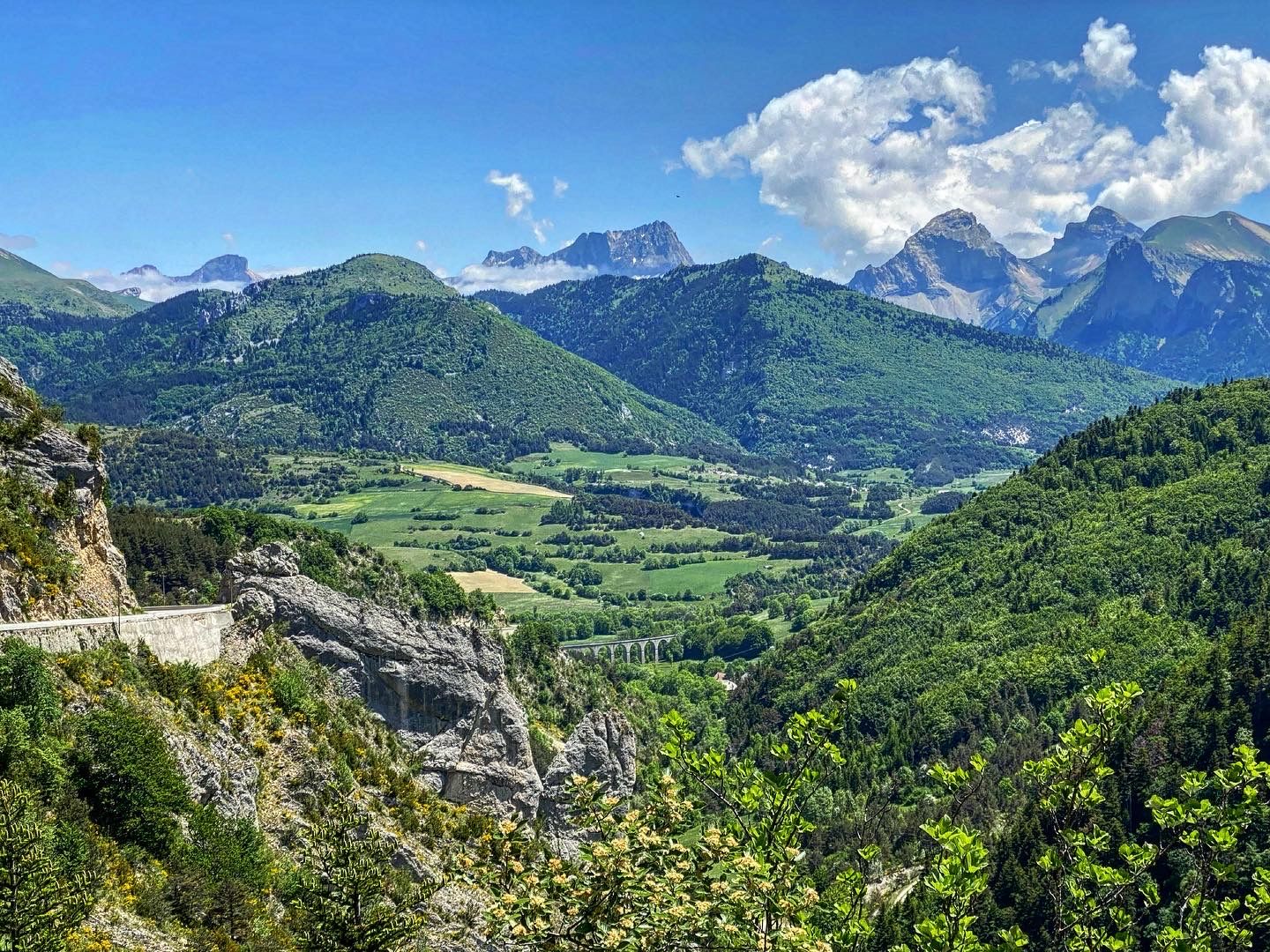
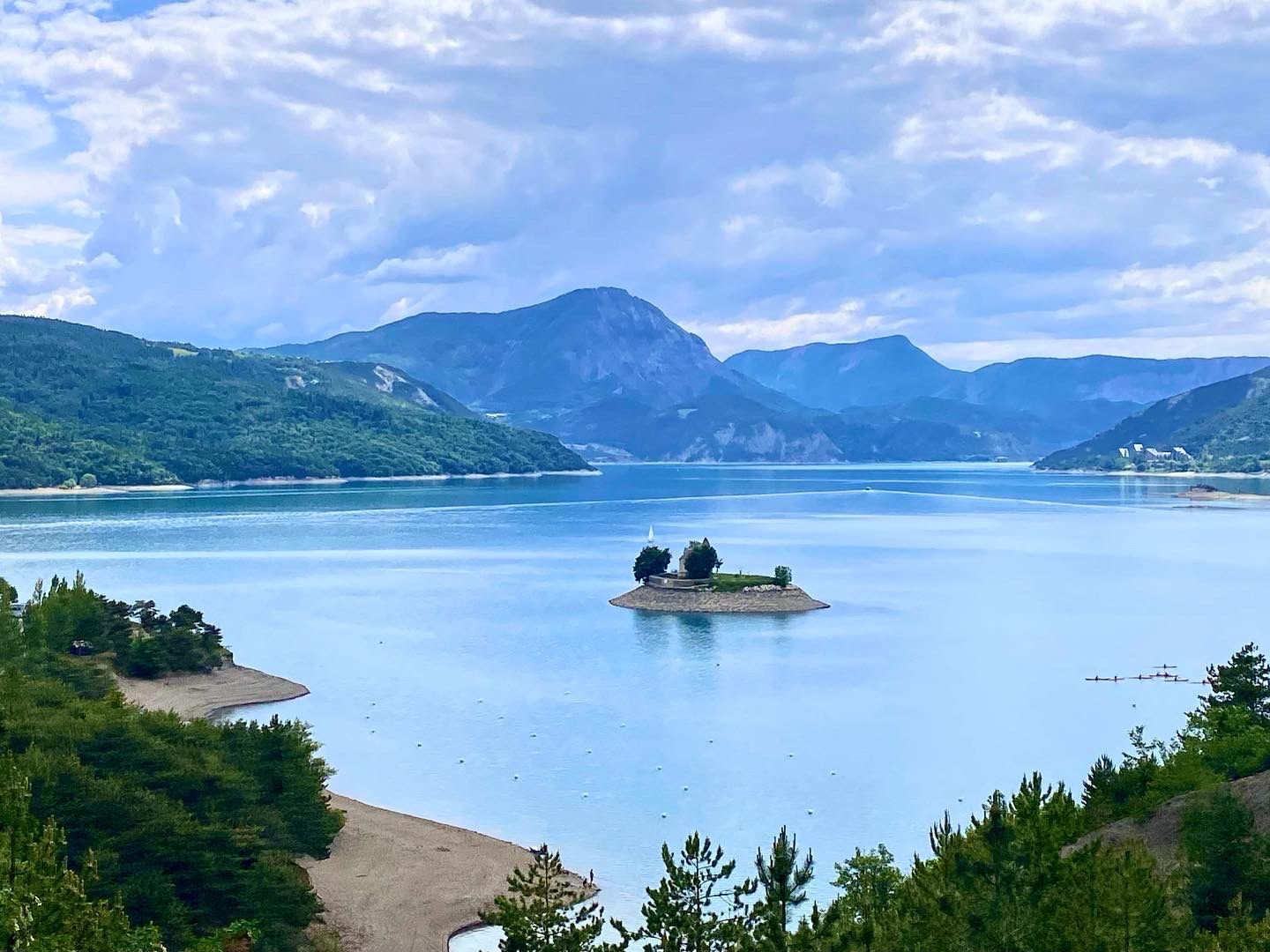
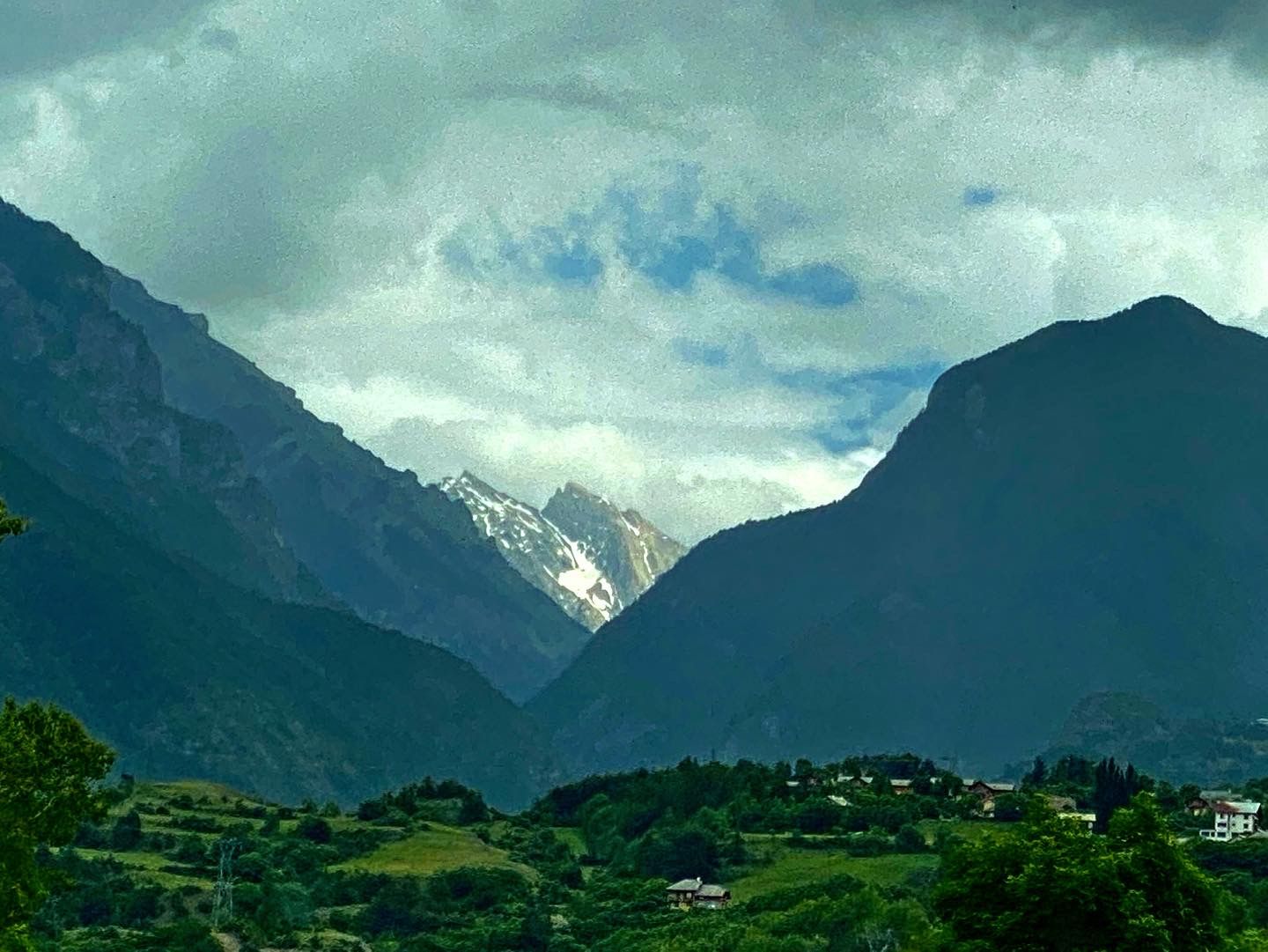
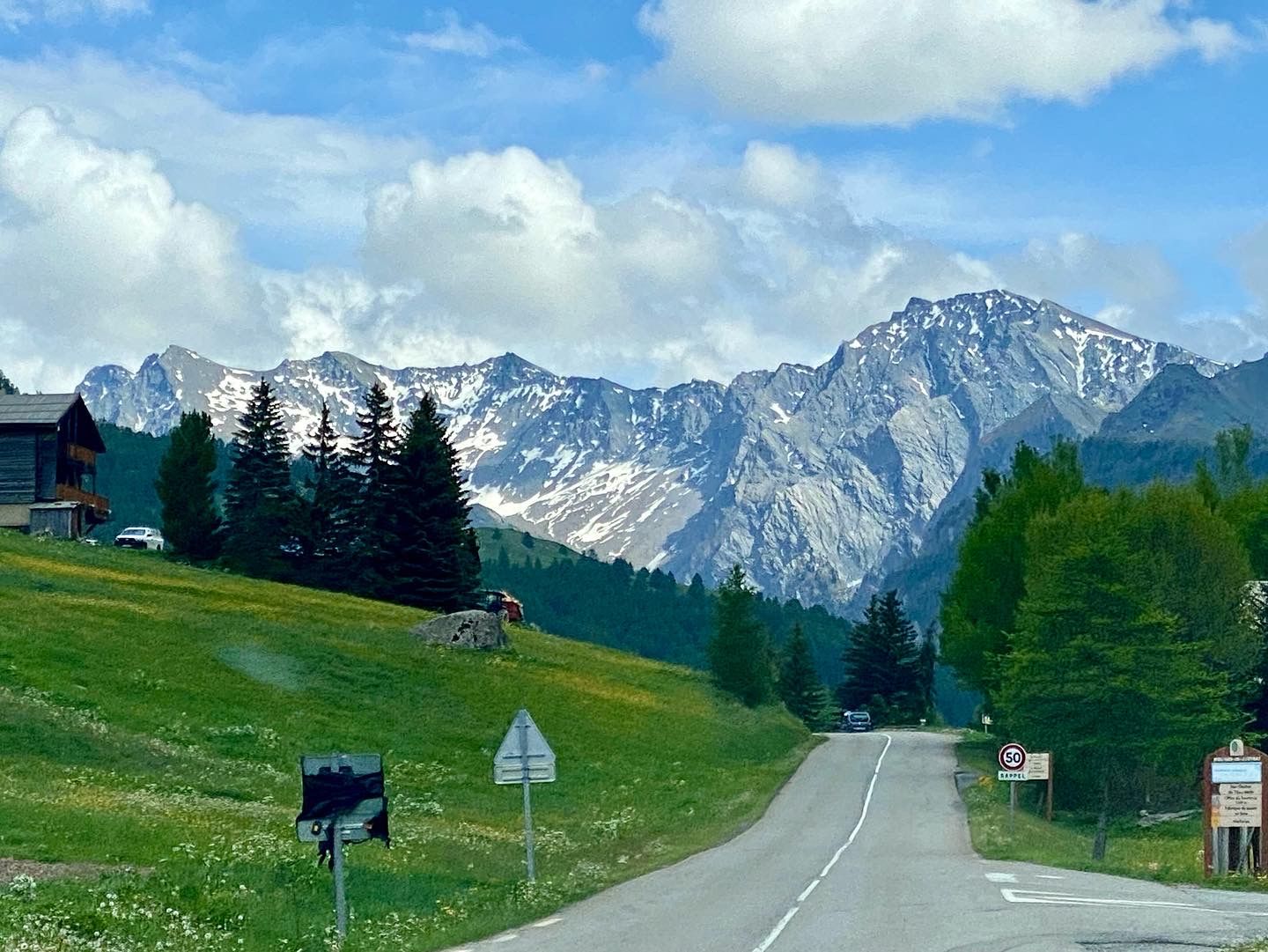
___________________
Hannibal headed north along the Rhone River and cut inland where the Drome River flows into the Rhone. Word of his handy defeat of the rebellious Volcae had spread and he was able to persuade guides to lead his army and safe passage through the foothills of the Alps.
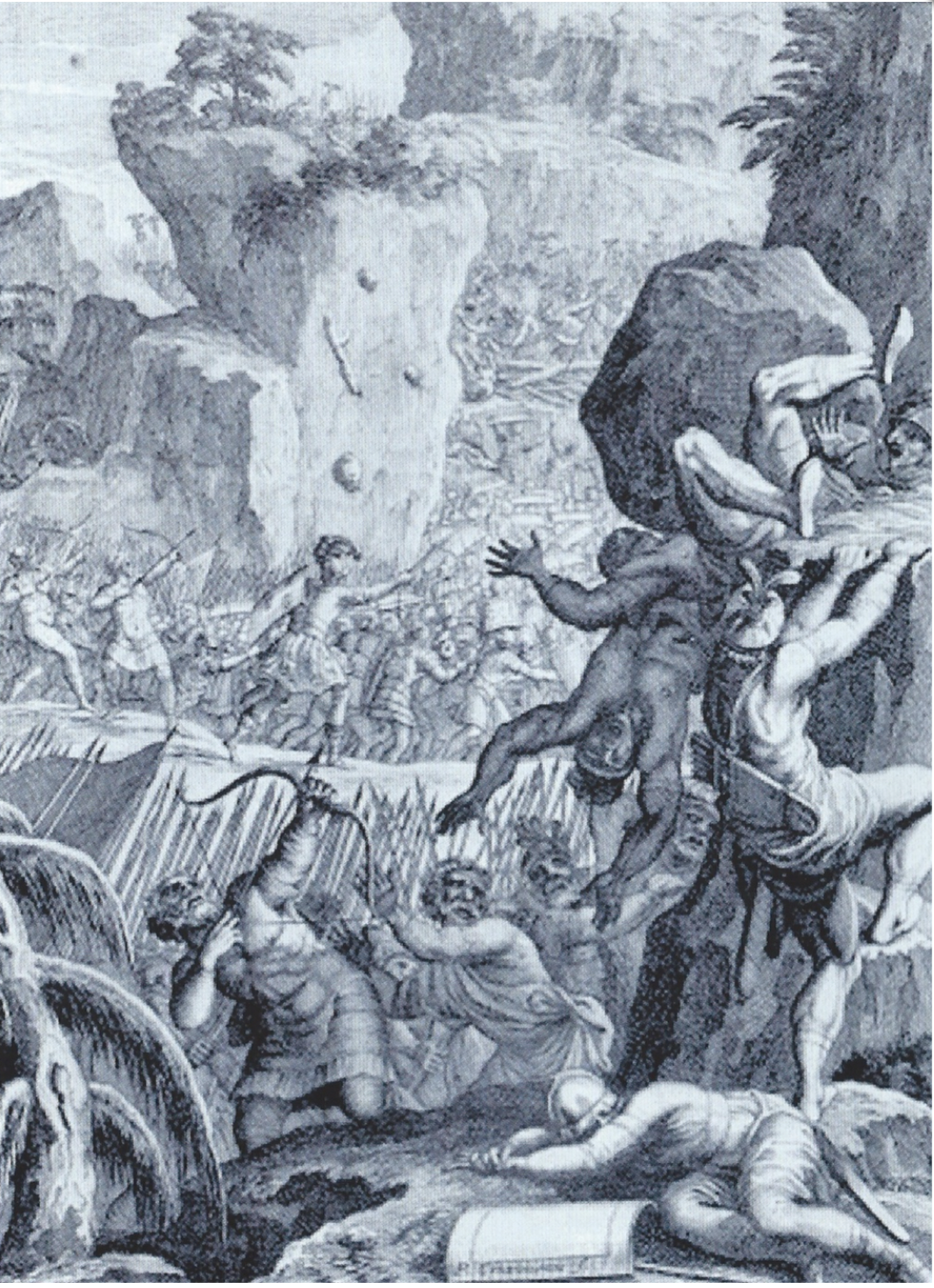
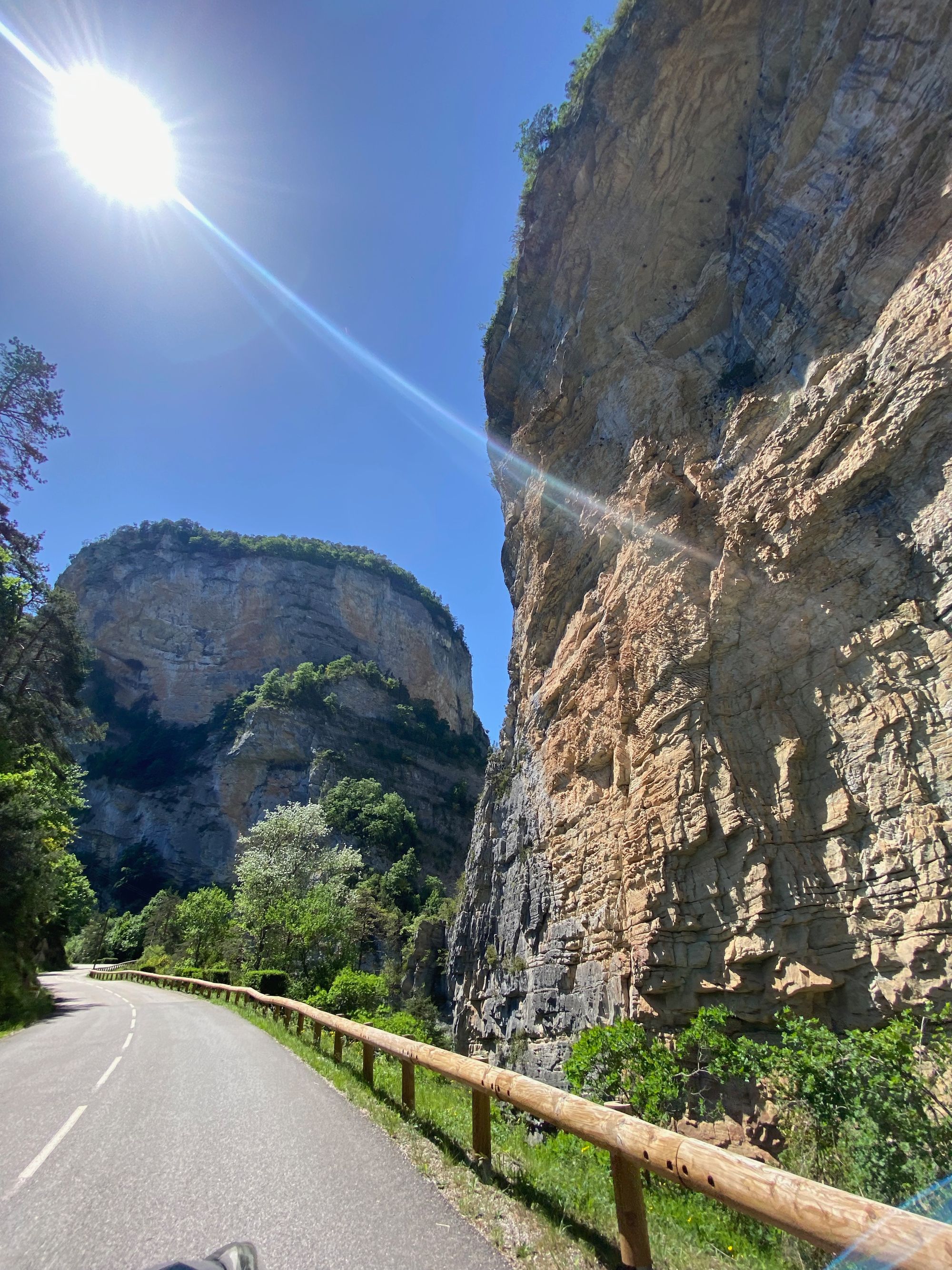
However, as he progressed through the mountains he was obligated to pass through narrow gorges that would be excellent ambush sites. Though he had been provided with hostages by the seemingly cooperative Allobroges Gallic tribe whose territories he now passed through, Hannibal was wary and took precautions when he entered the Ruisseau des Gas gorge by placing his baggage train in the middle of the column and his heavy infantry at the end.
The Gauls did indeed betray him and attacked the rear of his column as tribesman rolled boulders and threw stones from above. There was nothing that could be done other than withstand the barrage and continue through the hail of deadly projectiles. With heavy loss of life both of soldiers and animals, he weathered the attack and forged ahead.
____________
"We stopped briefly at one of the only pull outs on a road carved into the rock and built adjacent to the fast flowing Drome River. It wasn't hard to imagine how horrible it was to be ambushed in such a place with nowhere to escape to. Depictions tell how soldiers and camp followers tried to hug the rock walls to try and avoid the boulders and stones being pelted down on them. The carnage was so bad that the river ran red." from my journal 05-26-22
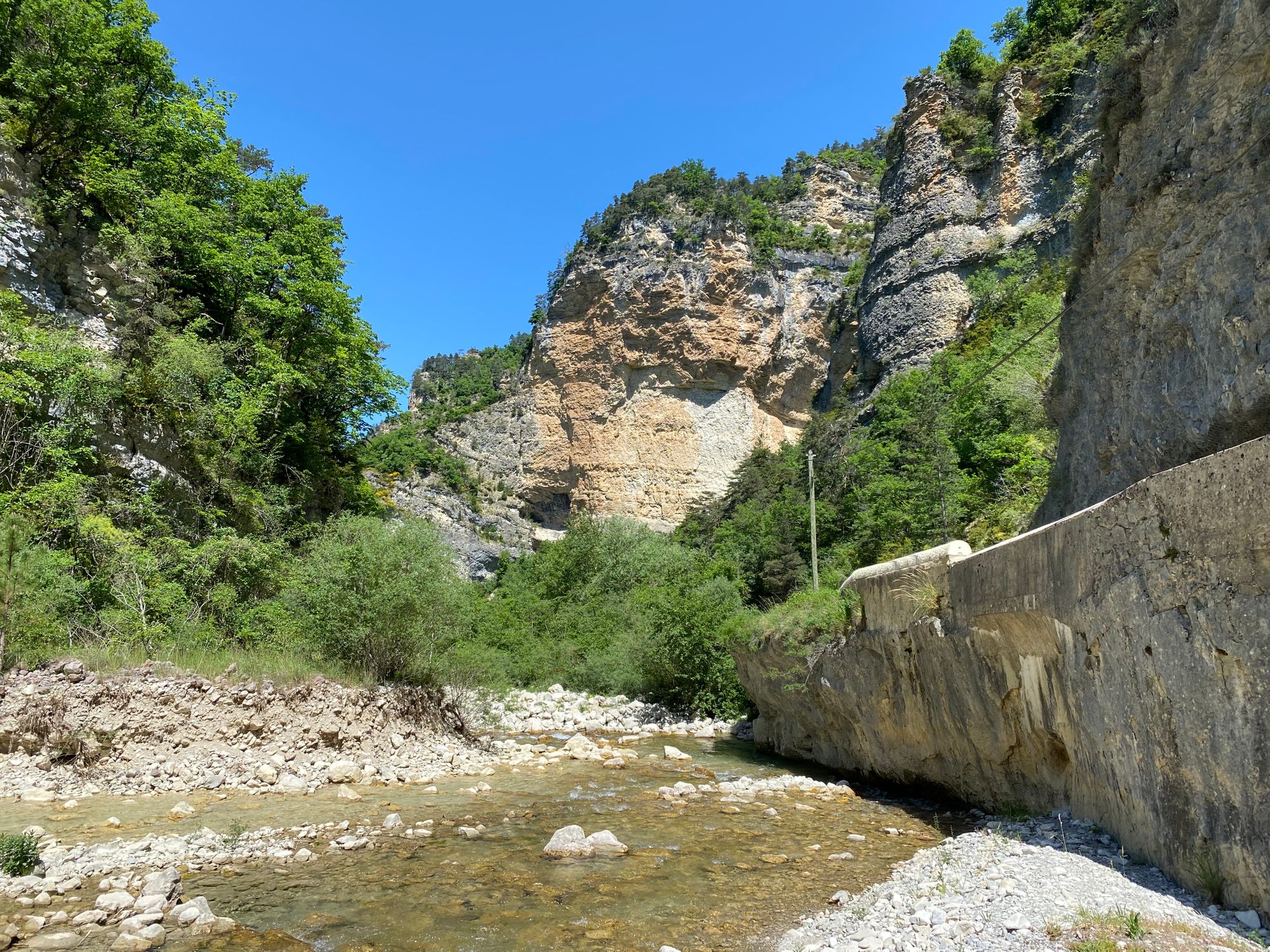
_______________
It was October, and from the Grimone Pass, he was able to see the imposing peaks of the Alps for the first time, and they were covered in snow. In such inhospitable terrain both from its inhabitants and geography, Hannibal's army was unable to forage for food. Their provisions were now depleted and the men were hungry and the animals weak from malnutrition. He pressed on and the treacherous Gauls would try once again to plunder his column.
This time he planned to bring the battle home to them.
Attack at Combe de Queyras | France
"We continued on and summited the Col de Grimone and I prepared the first of our almost daily picnic lunches.
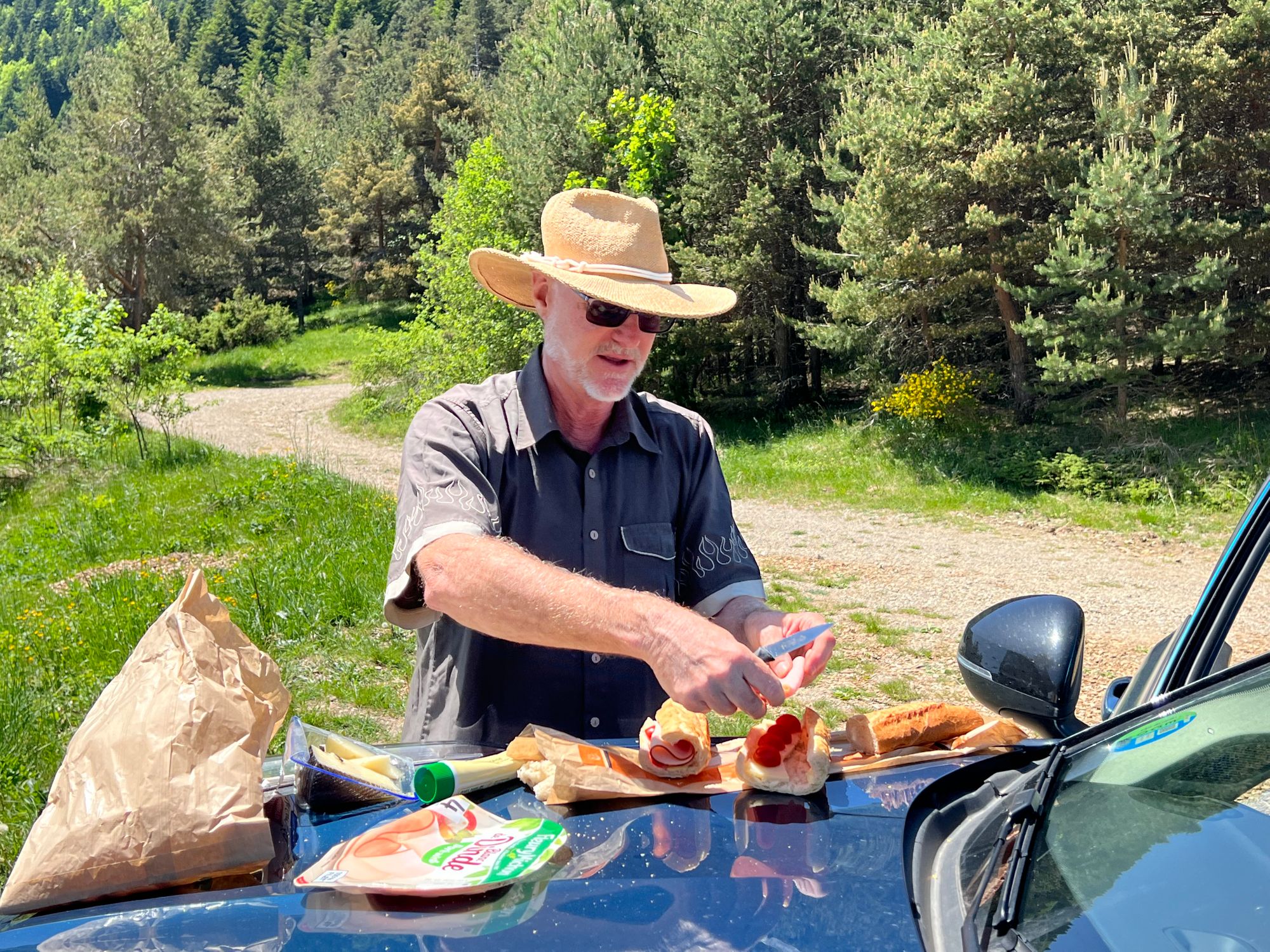
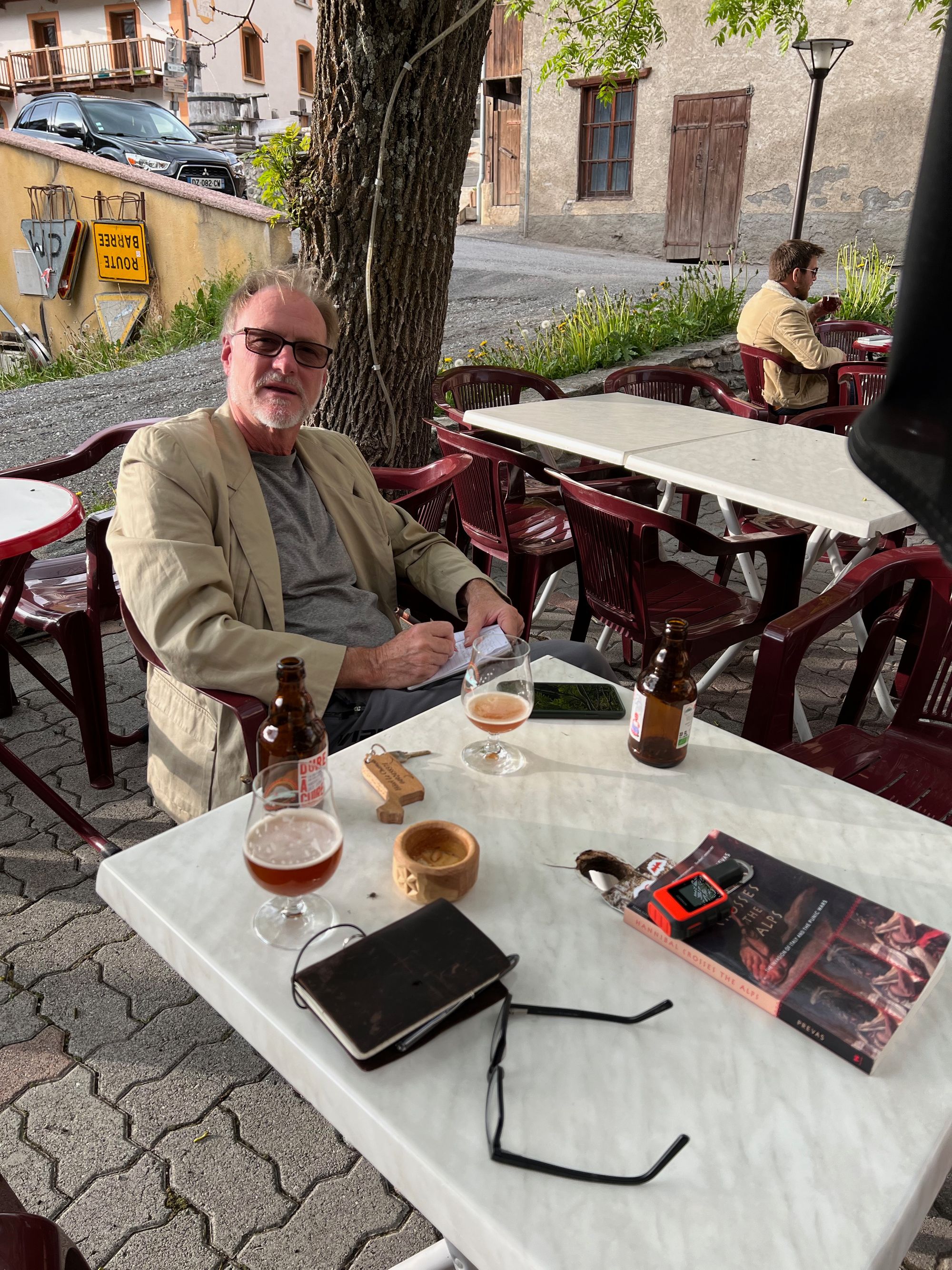
On Al drove, fueled by Le Mike, olives, chips and a juice box, towards these already impressive mountains.
We talked about tomorrow's planned climb up and over the Alps at the Col de la Traversette. Weather was beautiful today, but weather apps indicated rain was in the forecast for the mountain peak region along the Italian border. Al was prepared for all contingencies...rain, wind, even snow. He was concerned with my lack of warm weather and water proof pant gear, so we decided if we could find a hiking or camping store open today (it was Monday I think but was a Catholic holiday...Saints Day or something like that), we would stop. I called ahead to a number of places including the hotel we had booked on-line. Nothing open." from my journal 05-26-22

This time the Allogroges Gauls were joined by Celtic groups and a more coordinated assault on Hannibal's multi-kilometer long enfilade would take place in the Gorges du Guil. The attack took place in the narrowest part of the gorges where not only was Hannibal's army spread on the banks of the fast flowing Guil River but also on narrow paths along the steep granite cliff ledges.
Huge boulders were rolled down in front of Hannibal's column and the Allogroges attacked the back of the column.
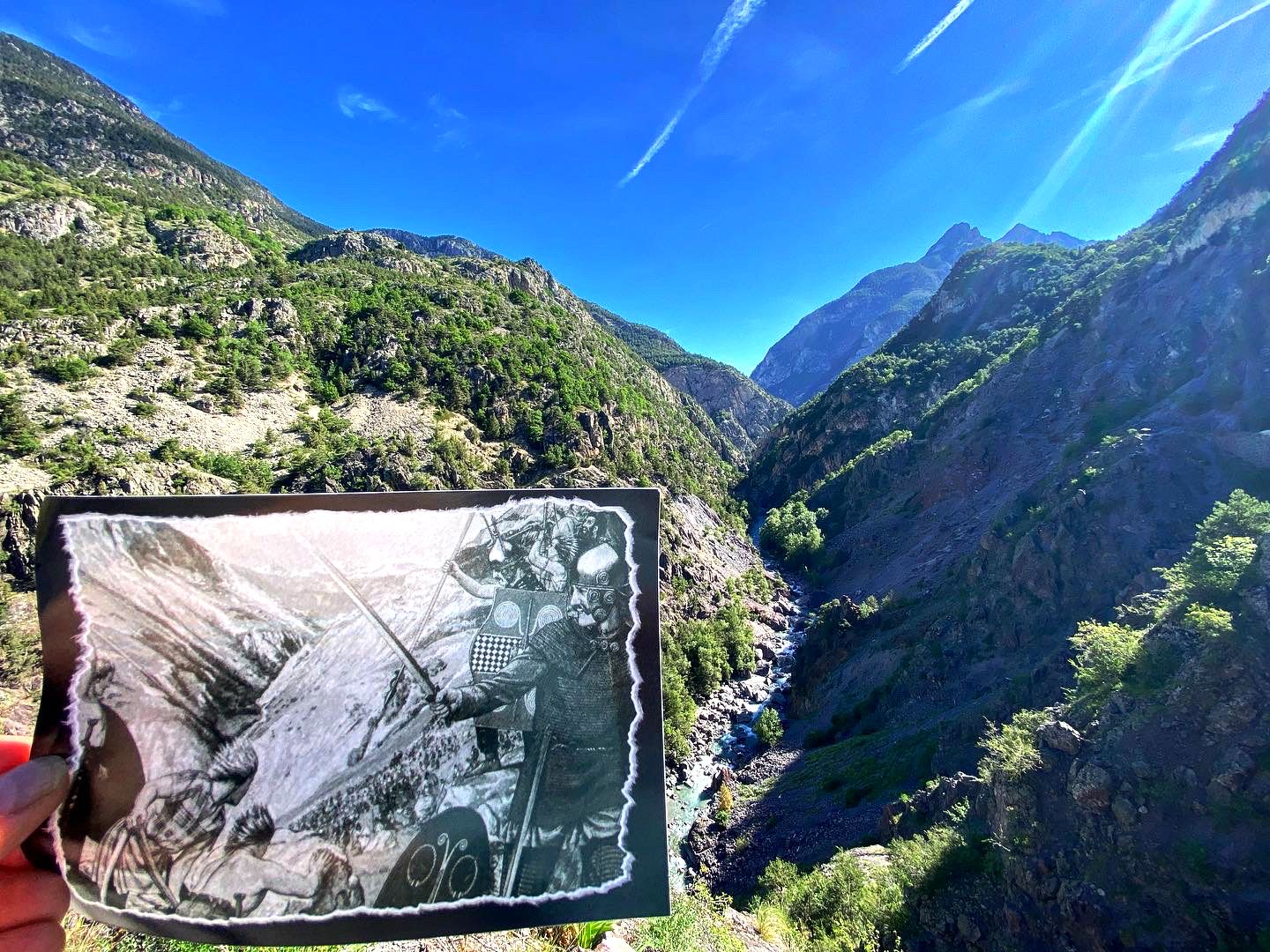
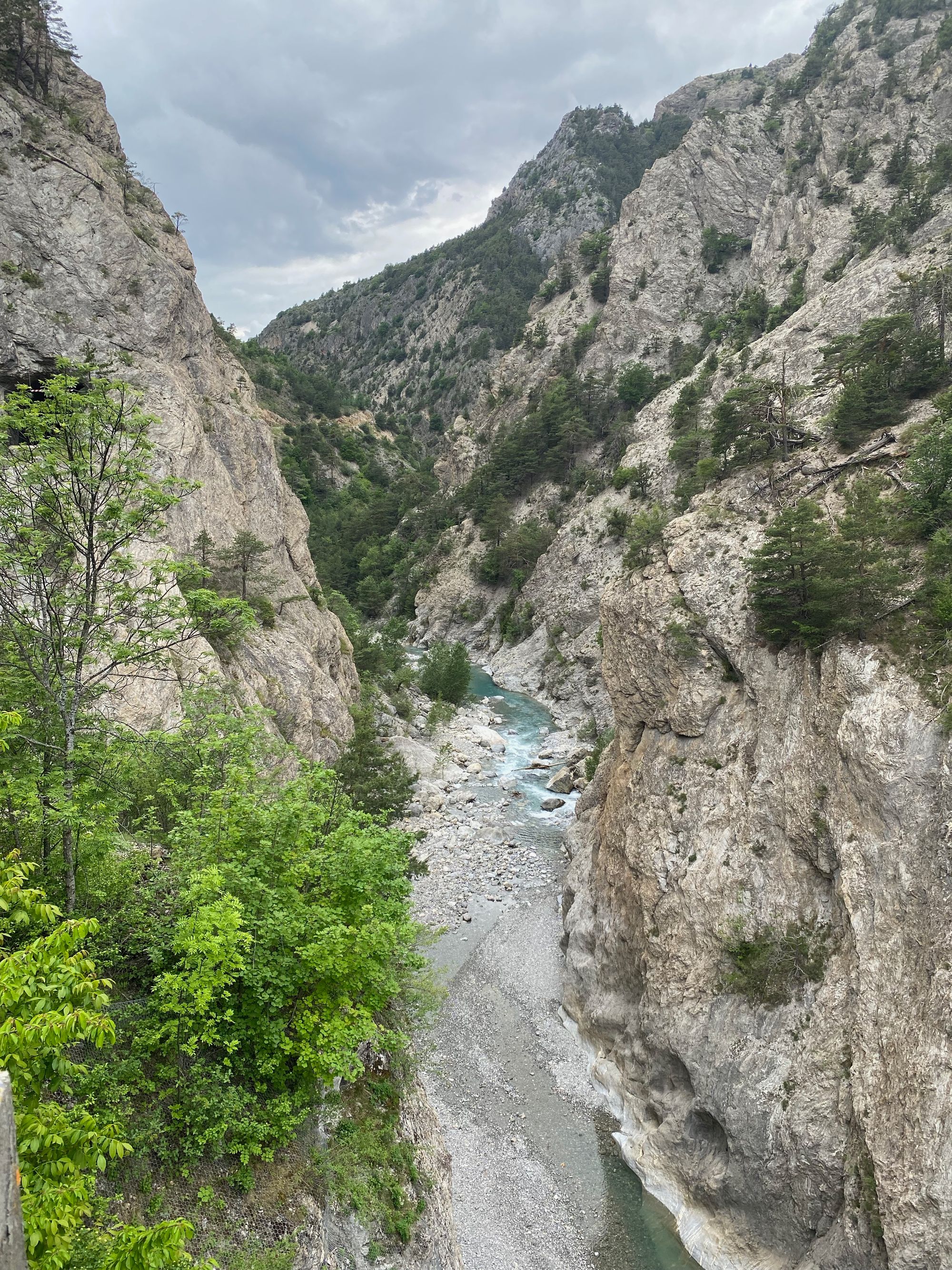
Hannibal's army was stuck. Stones were rolled down from the cliffs, burning logs and arrows rained down on the soldiers. Men and pack animals panicked and lost their footing, plunging off the precipitous paths. Others were crushed and burned. With the boulder obstruction finally removed, the column moved forward as night fell.
The tribesmen returned to their villages leaving the heights unguarded. During Hannibal's march through the steep valleys and gorges he had been shadowed by the tribesman and had observed that at nightfall they returned to their homes. He now sent his elite soldiers on an all night climb up the cliffs and concealed them above the villages.
When the Gallic and Celtic warriors left the next morning to resume the assault on Hannibal's army, these soldiers attacked and burned the villages and then moved in behind the tribesman perched on the edge of the precipice mountain gorges. Hundreds plunged to their death and with the food stocks ransacked from the villages, Hannibal was able to partially provision his army for the ascent over Alps.
With the tribes temporarily subdued he moved his badly mauled and broken up army through the gorge and to the Combe de Gueyras. There, they gathered, rested and prepared for the dangerous climb over the 9,968 foot Col de la Traversette pass.

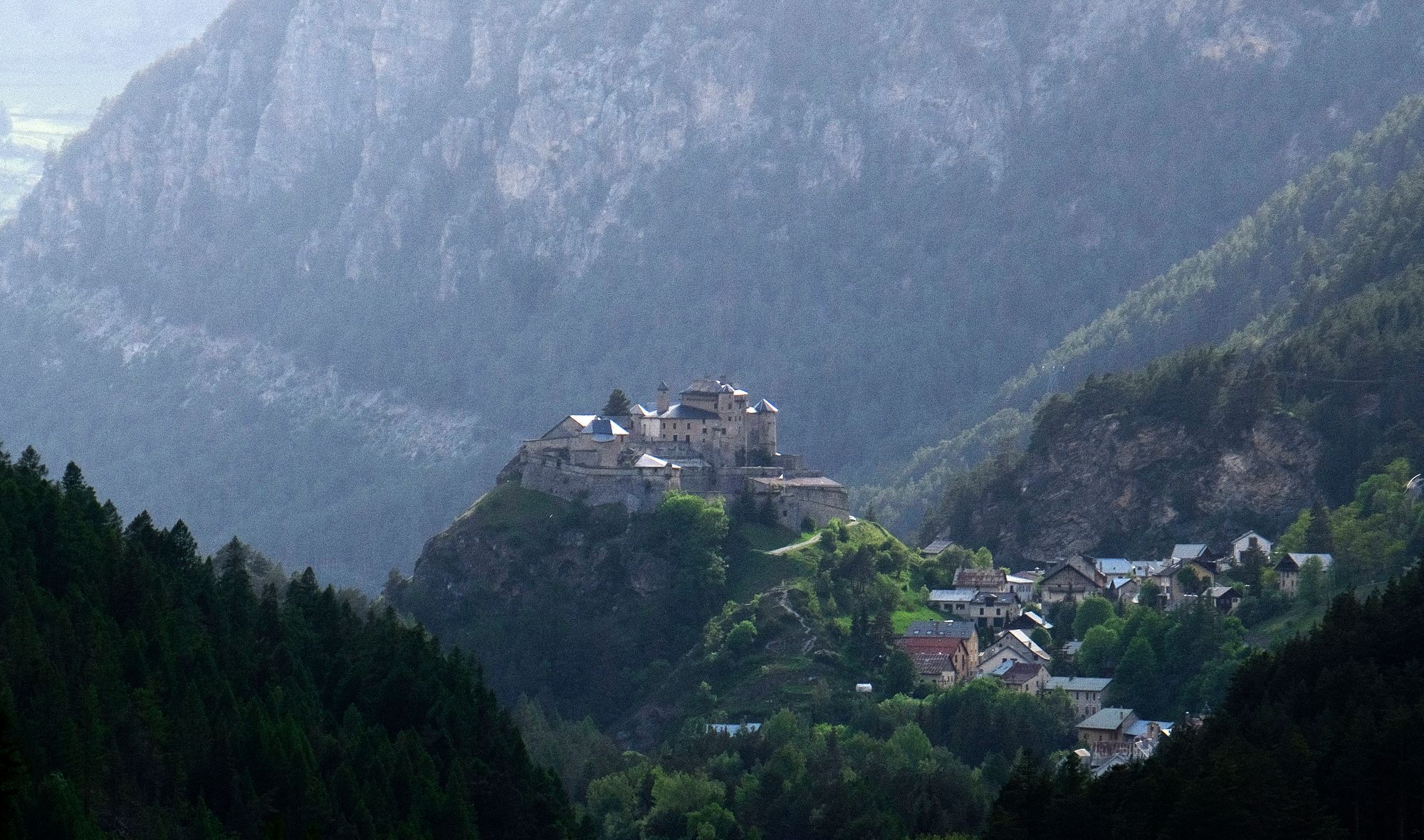
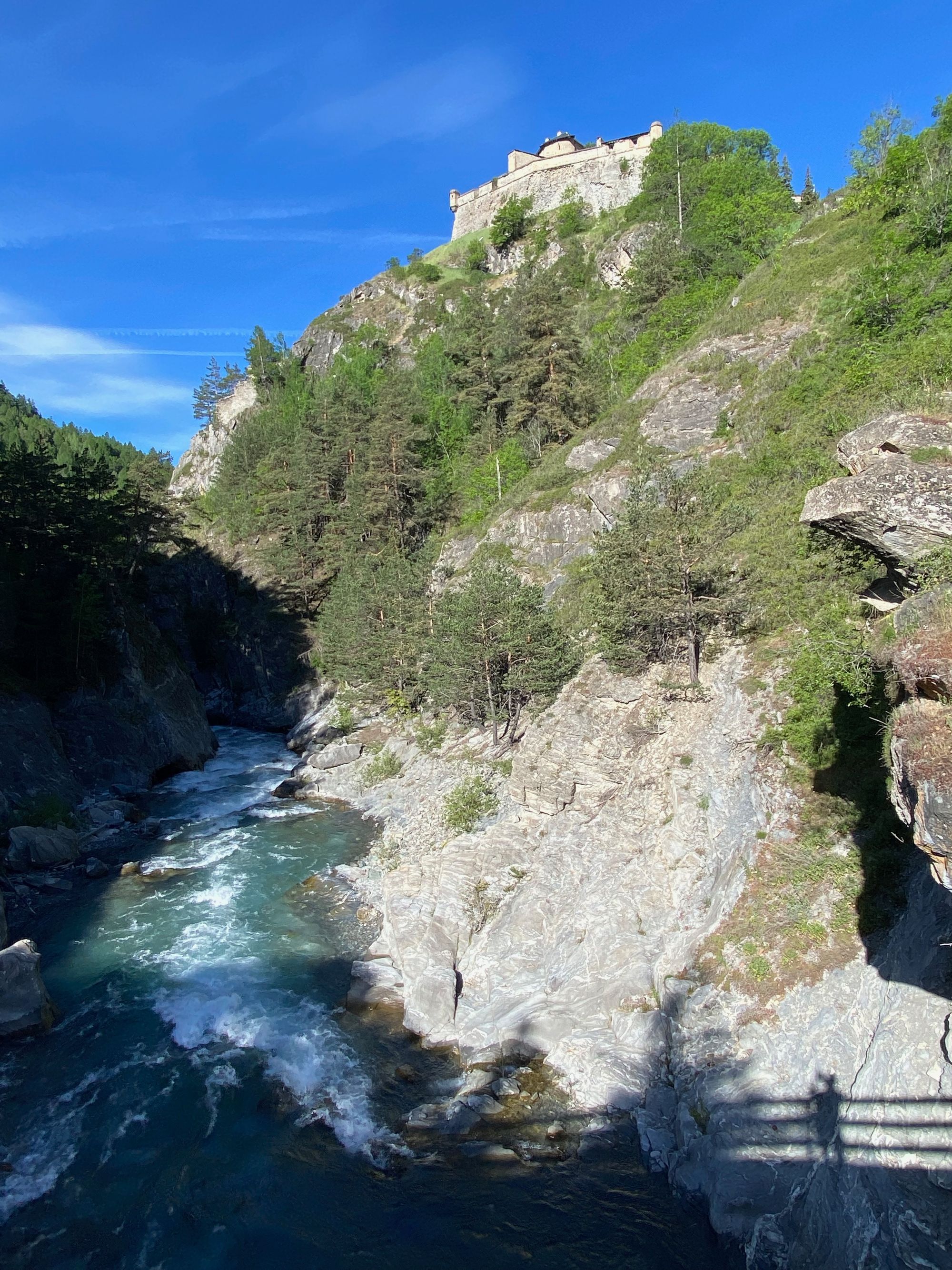
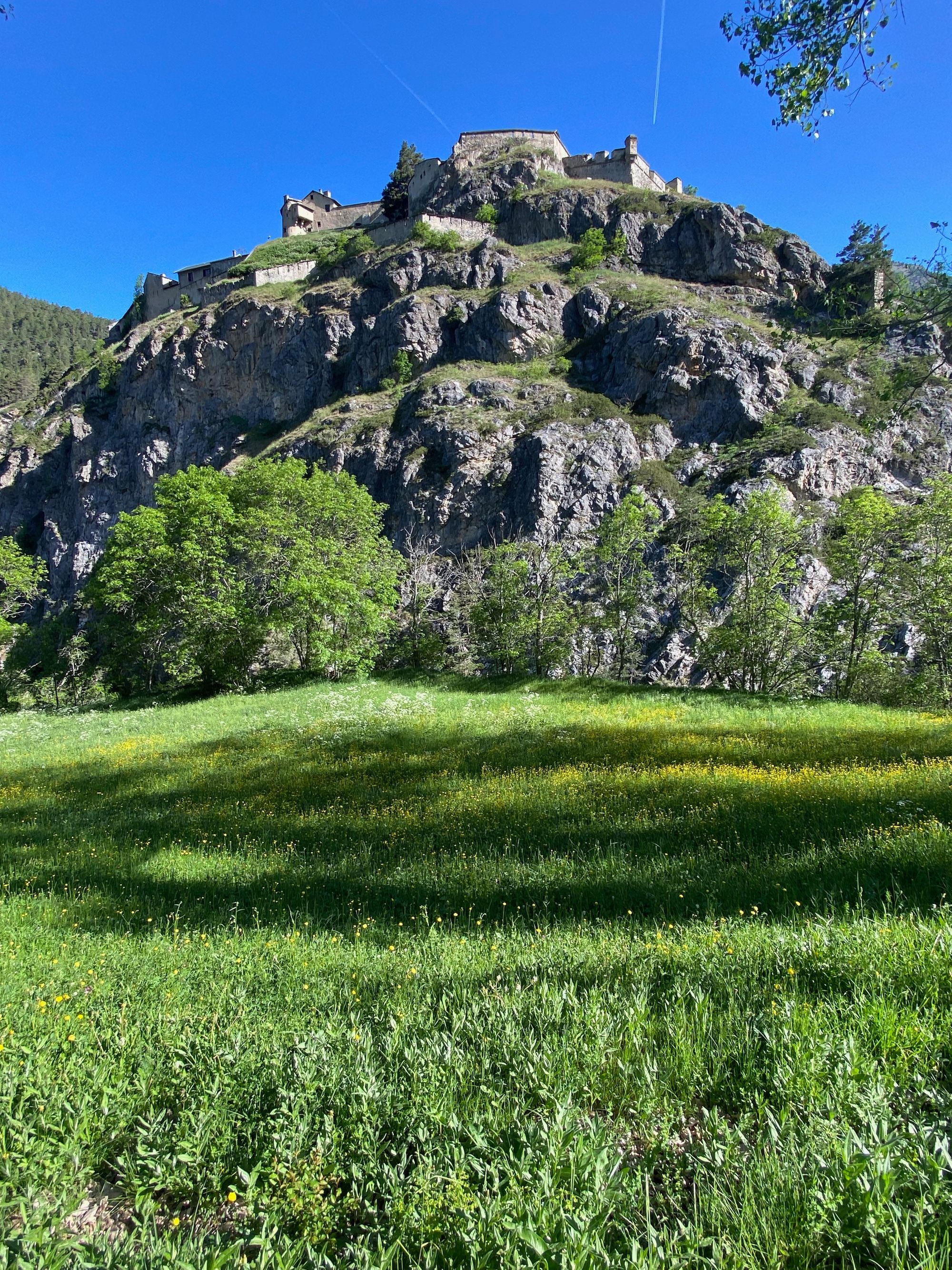
________________
Col de la Traversette | Hannibal crosses the Alps | France | Italy
The route to the Alpine pass was covered with light snow, but the higher elevations and narrow or non-existent paths would be slippery with packed ice. His men were not clothed for cold weather and most of them had never experienced freezing temperatures. The elephants, surprisingly, because of their thick hide and large bodies would manage well and all would survive the ascent and the even more dangerous descent into Italy.

We estimated that the round trip hike would be eight to 10 miles with an elevation gain of approximately 4,000 feet. We figured it would be an eight hour hike, so we planned to start by 9am and if all went well we would reach the pass by 1pm and be back before 5pm. We had plenty of daylight, but as is typical in high mountain terrain, clouds tend to gather around the peaks as the day progresses.
I was now prepared for the possibility of rain, snow and driving wind. I had packed a sandwich and Al had provided me with high energy snacks. Water would not be a problem as we would be following a river and there was still snow in the higher elevations.
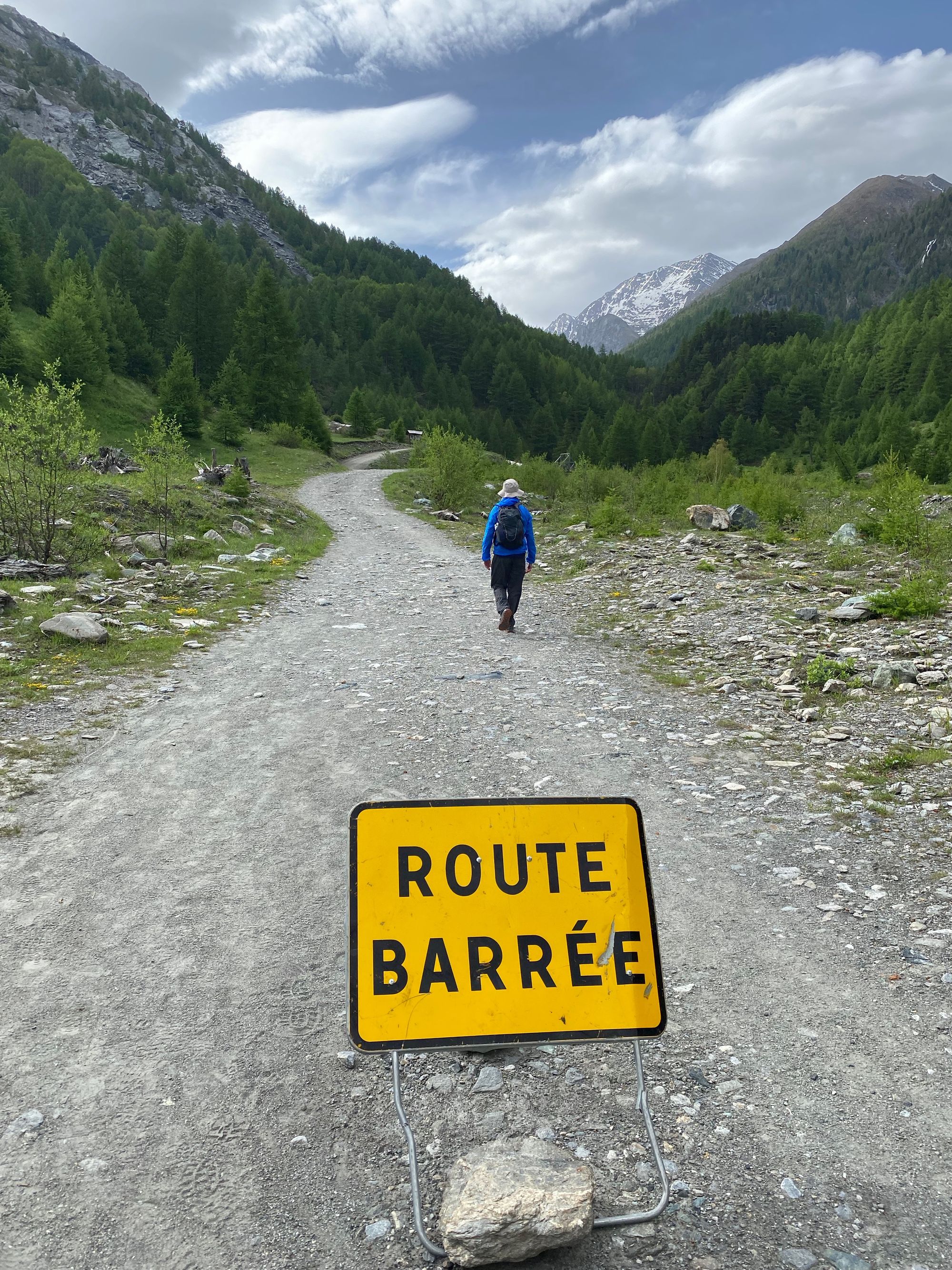
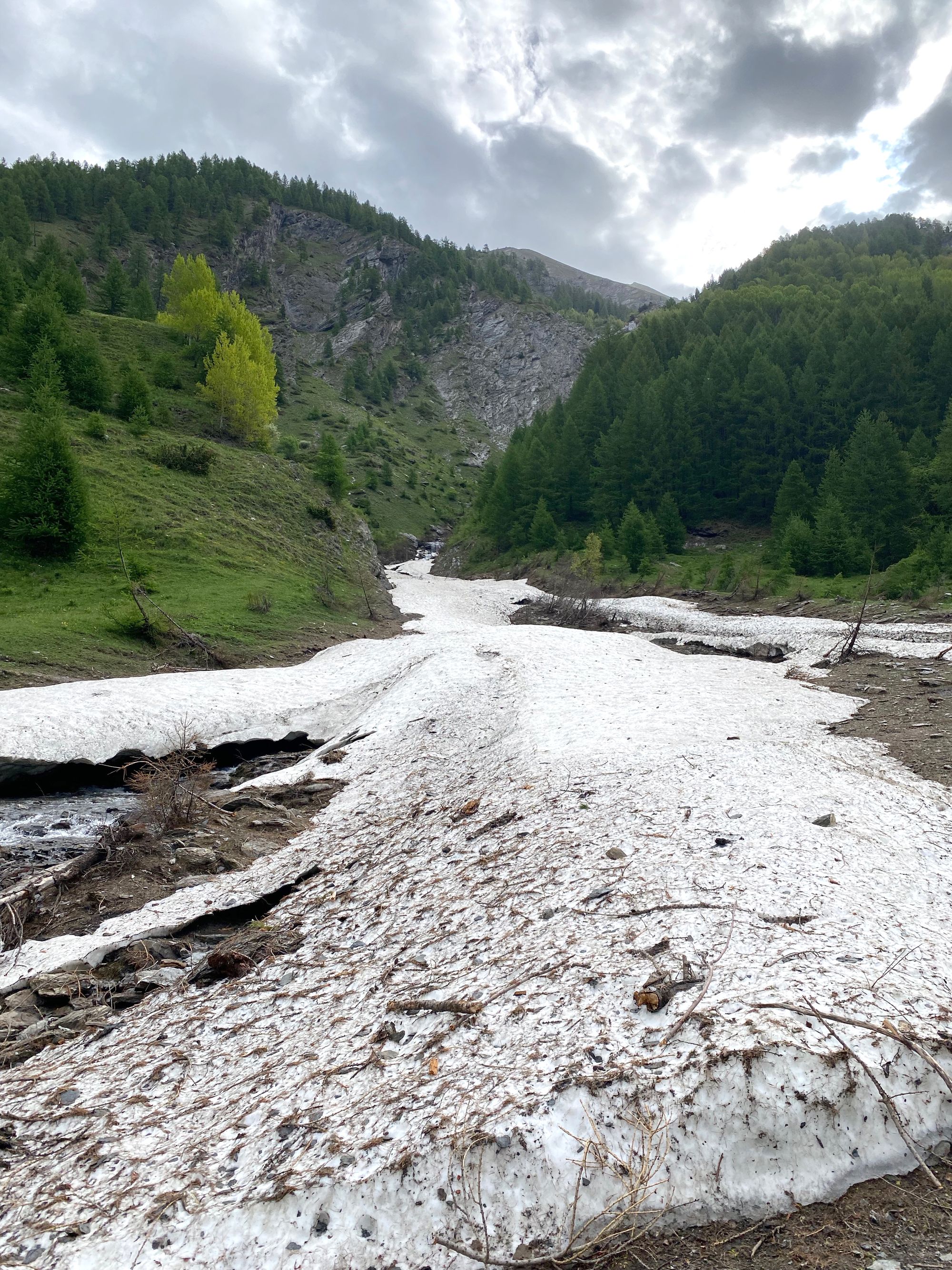
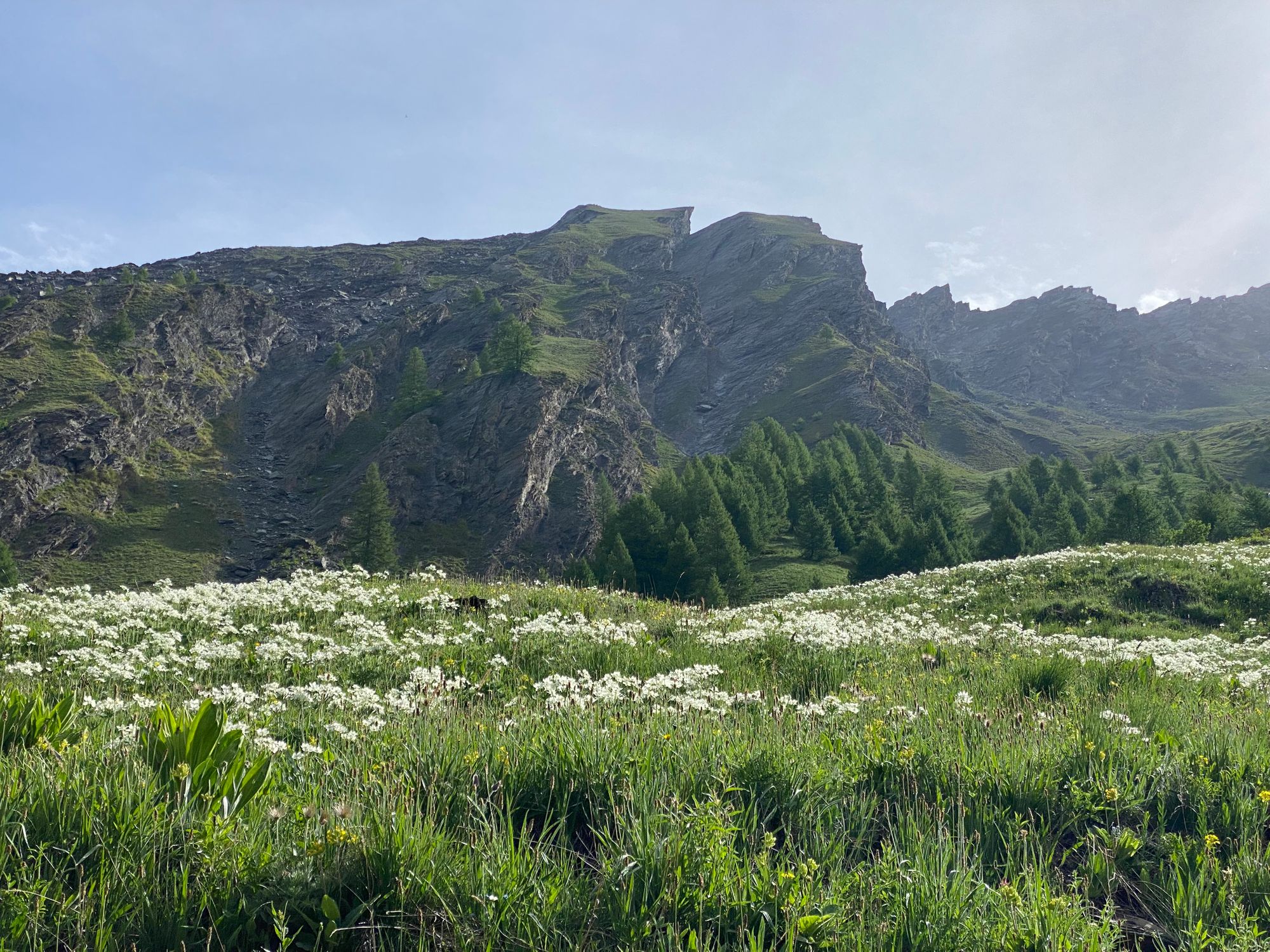
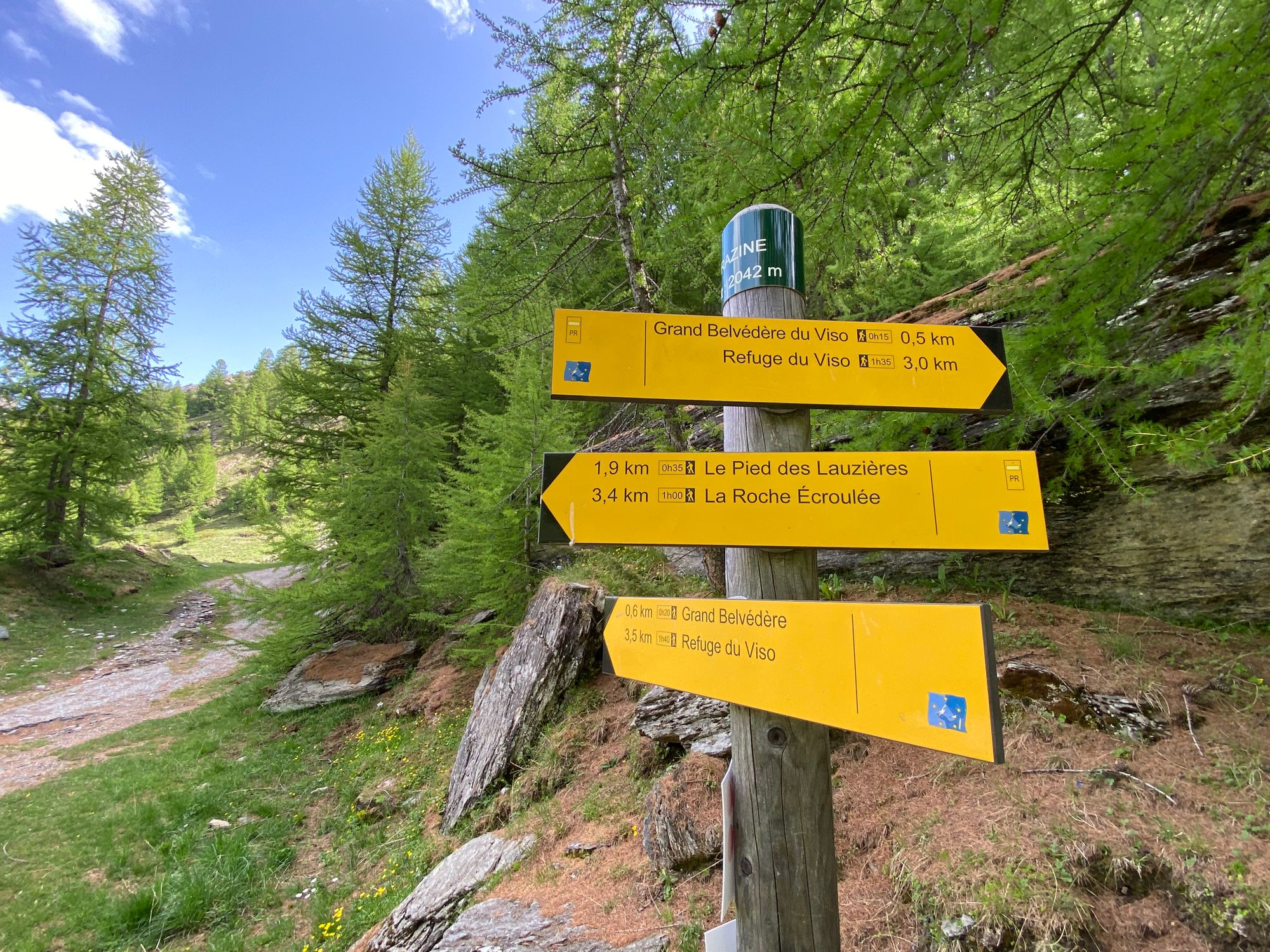
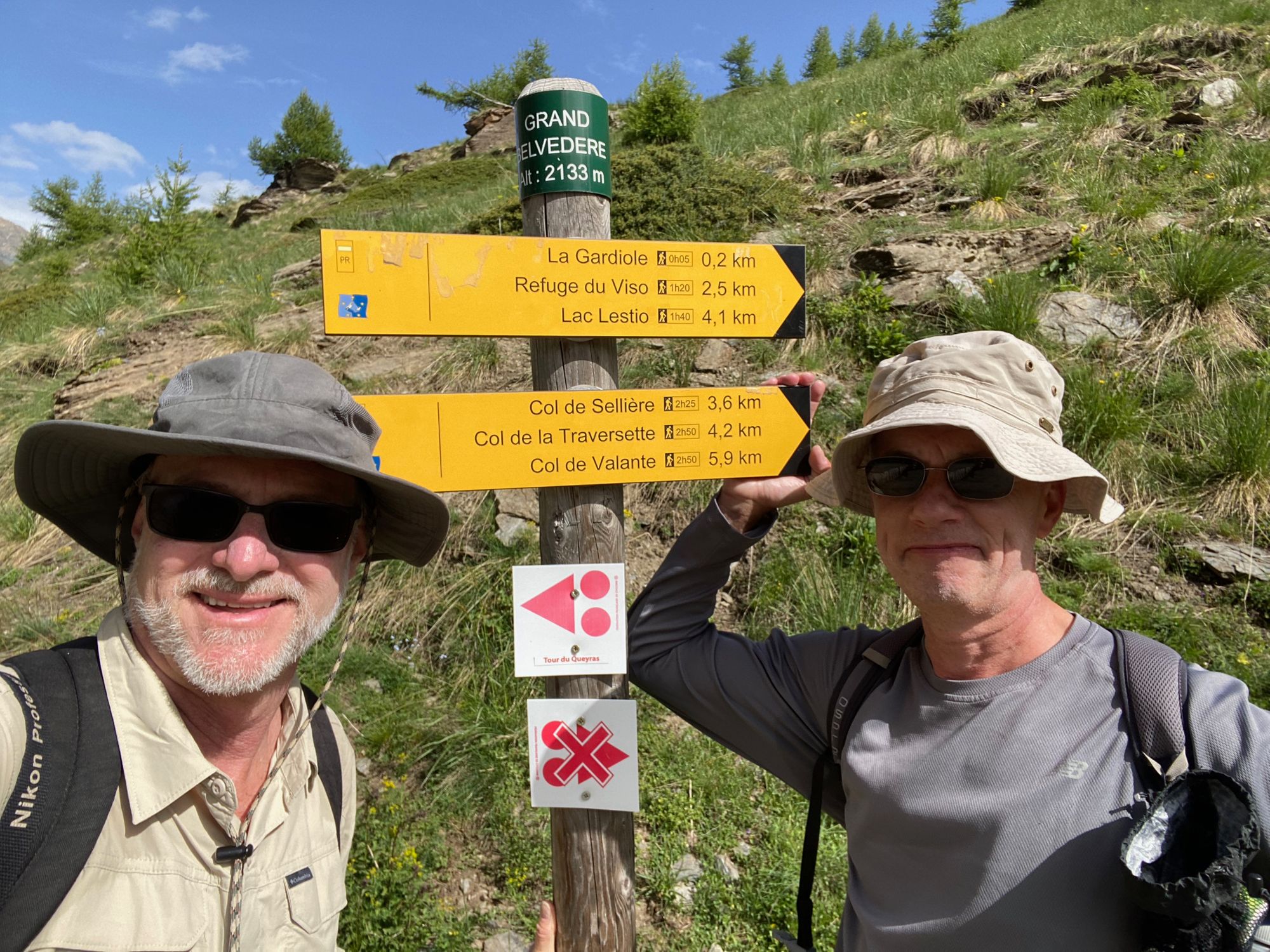
"It was a beautiful cool day and we soon were discarding layers of clothing. First the pullover...then the t-shirt. At times I even abandoned the black jacket with the “I will find a way, or I will make one” Hannibal patch Al had ordered. It was easy going and the scenery was spectacular." excerpt from journal 05-27-22
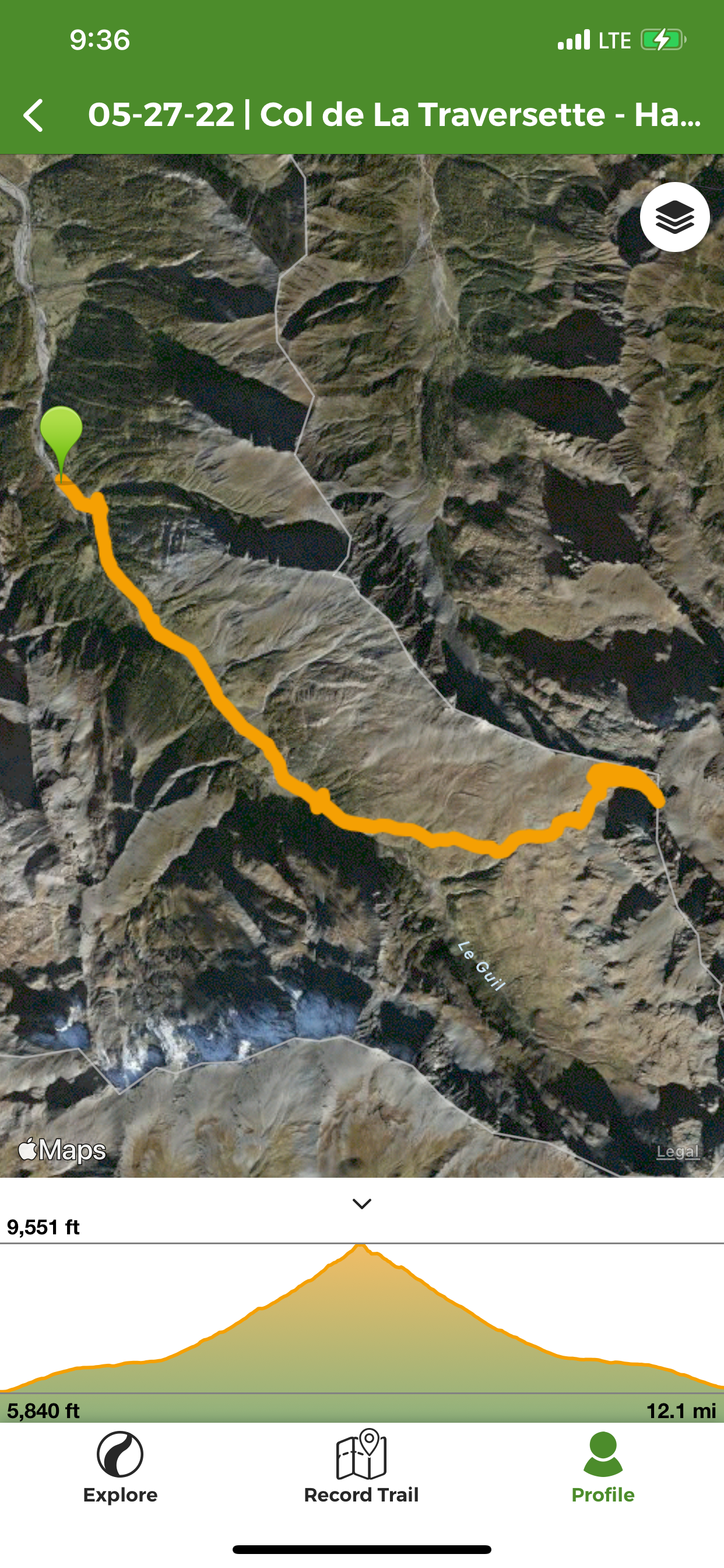

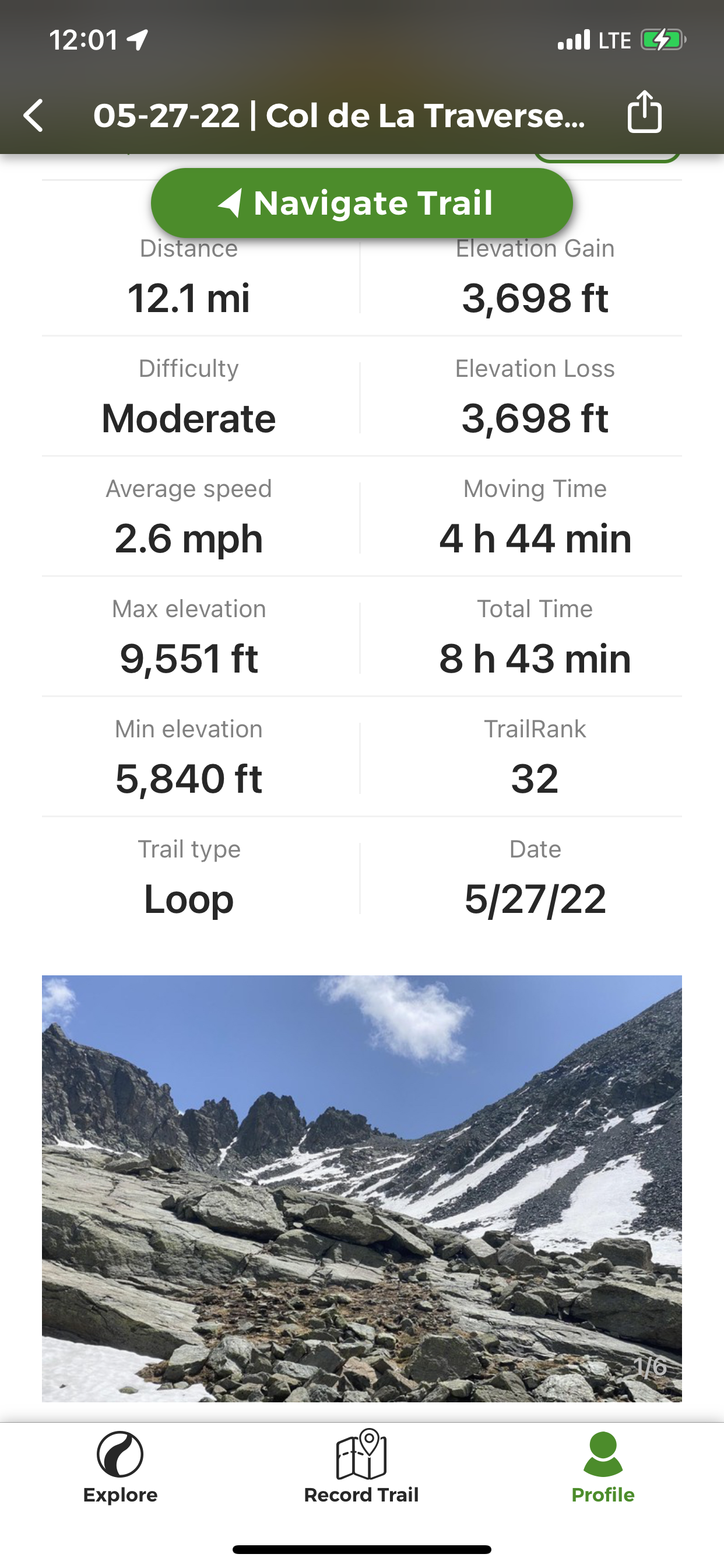
We now started our ascent.
"After 30 or so minutes we came to a large flat mountain meadow covered with tiny flowers with a spongy peat type of surface. A perfect place for a 30,000 man army to camp and prepare for the assault over the summit. It matched what Livy and Polybius had written. Prevas had examined evidence of scientific studies that indicated that at around 218 BC a large gathering of horses had been here." excerpt from journal 05-27-22
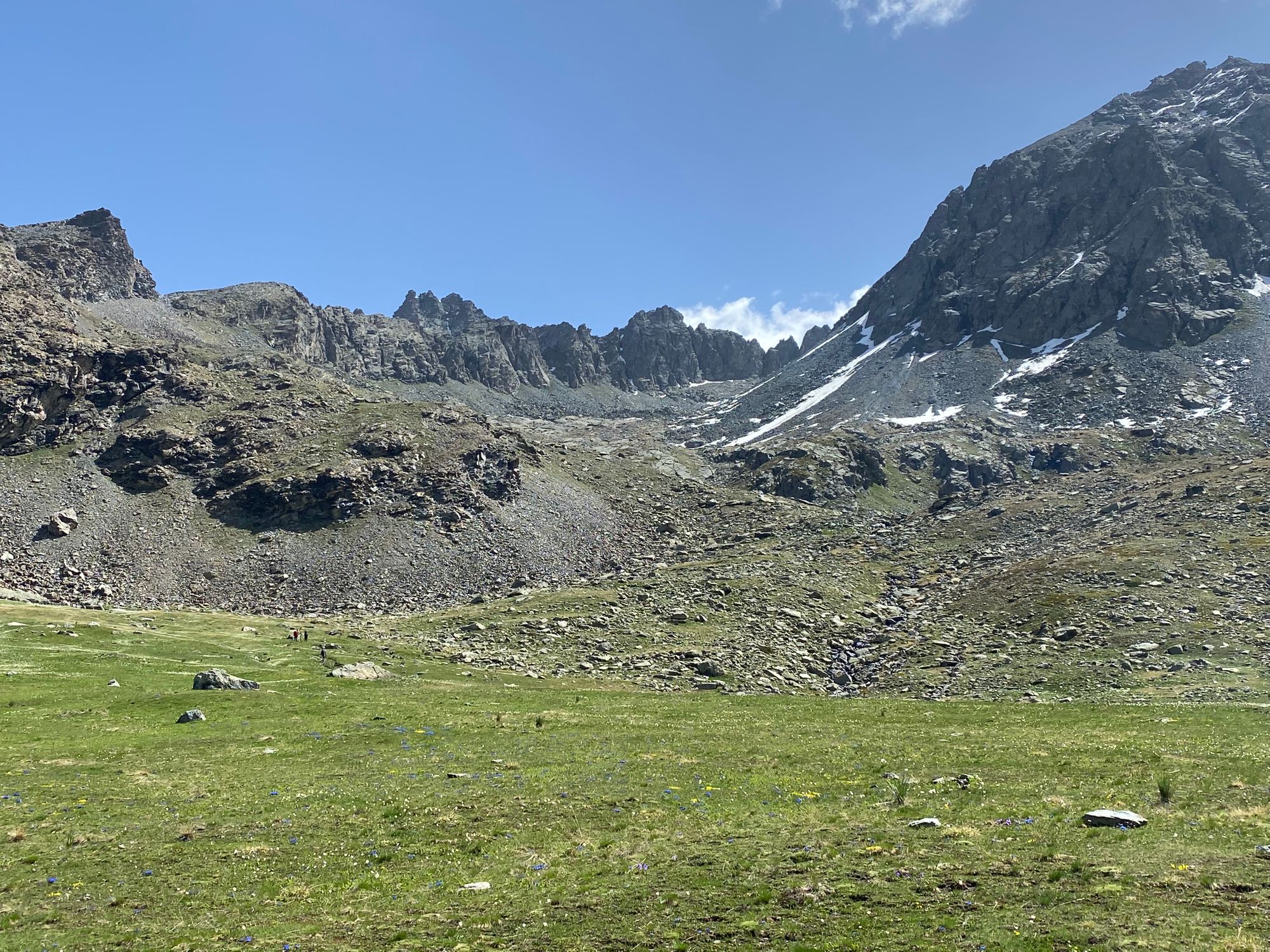
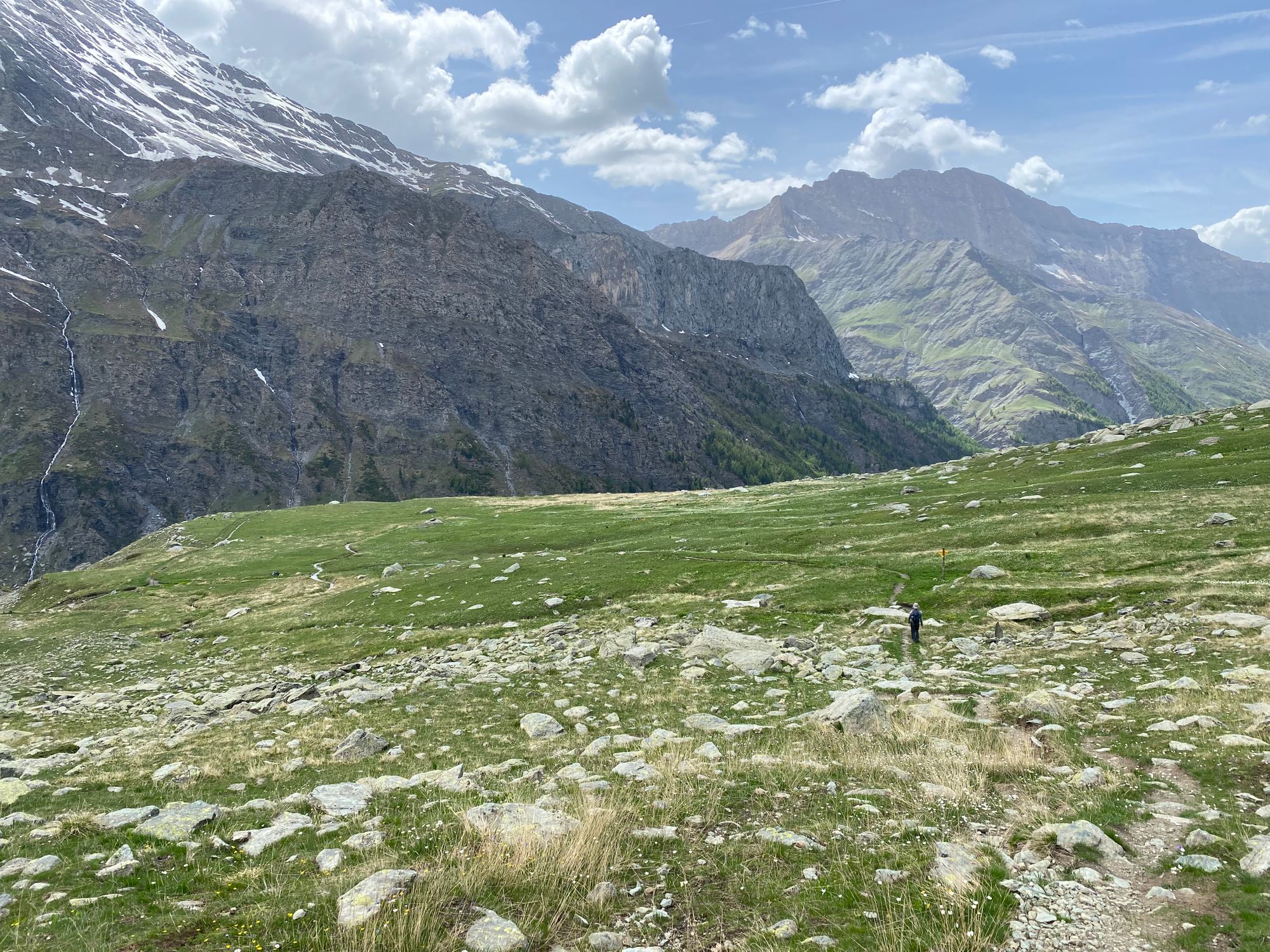
"Now we started the ascent through rocky terrain where multiple streams cascaded down the mountain. I stopped every so often to take pictures and admire the dramatic scenery. Al was ahead scoping out the path which became increasingly difficult to follow as streams actually ran down the almost invisible gravel trail that crossed mossy areas and large rock formations. I stopped at a fast running stream that spilled over rocks and did a video. Al was now quite a ways ahead and the trail became snow covered at a precarious rock ledge and incline area. With the trail obscured he calculated another path that should bring us out onto the marked path. At this point, we became separated." excerpt from journal 05-27-22
____________________________
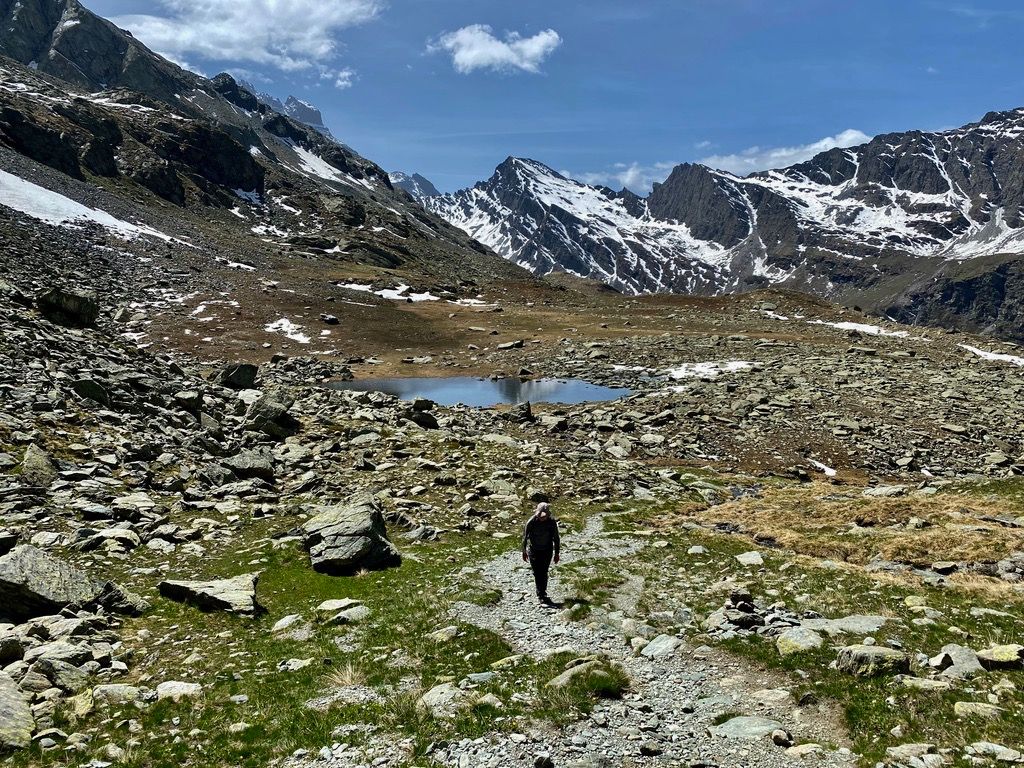
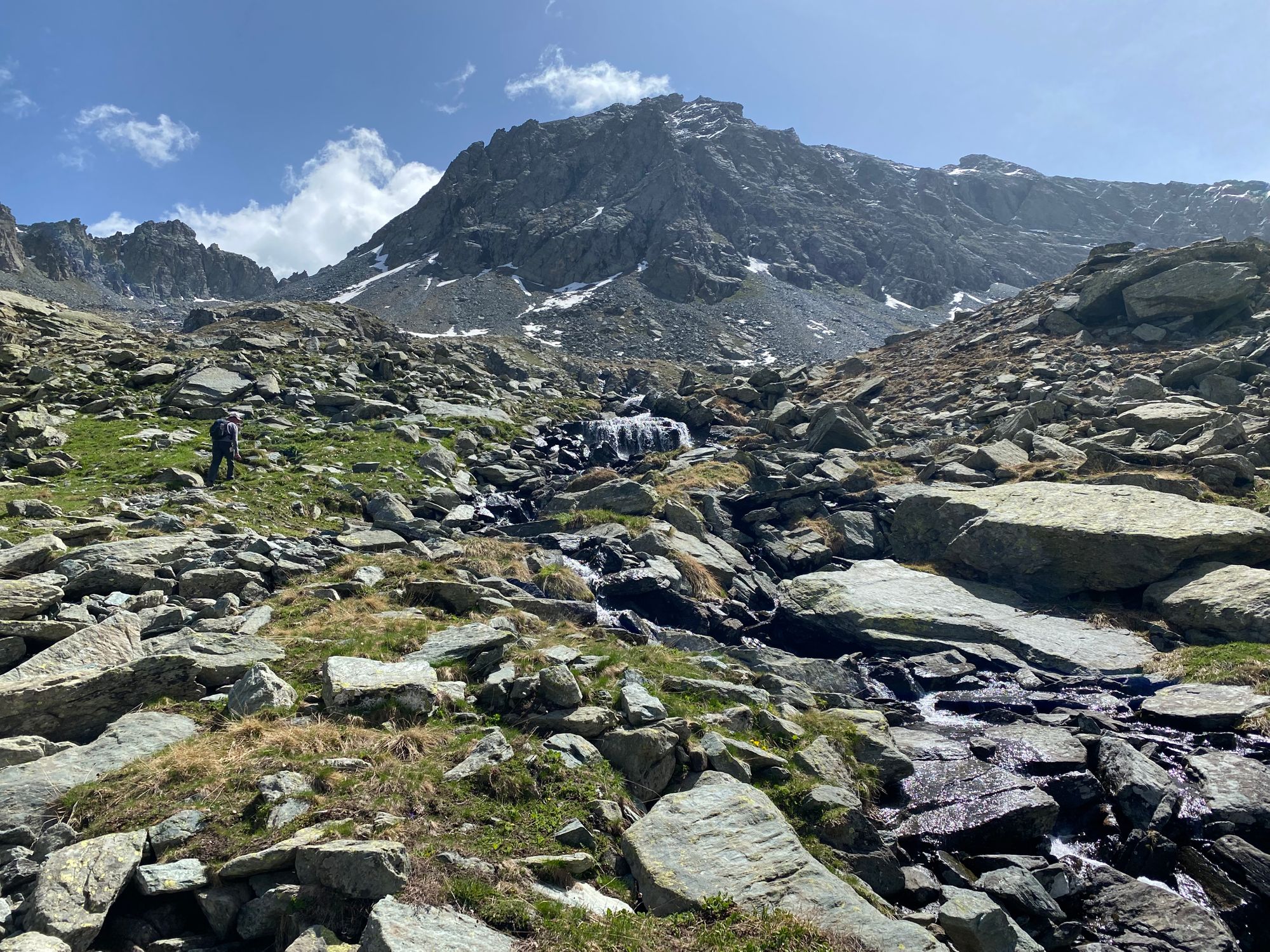
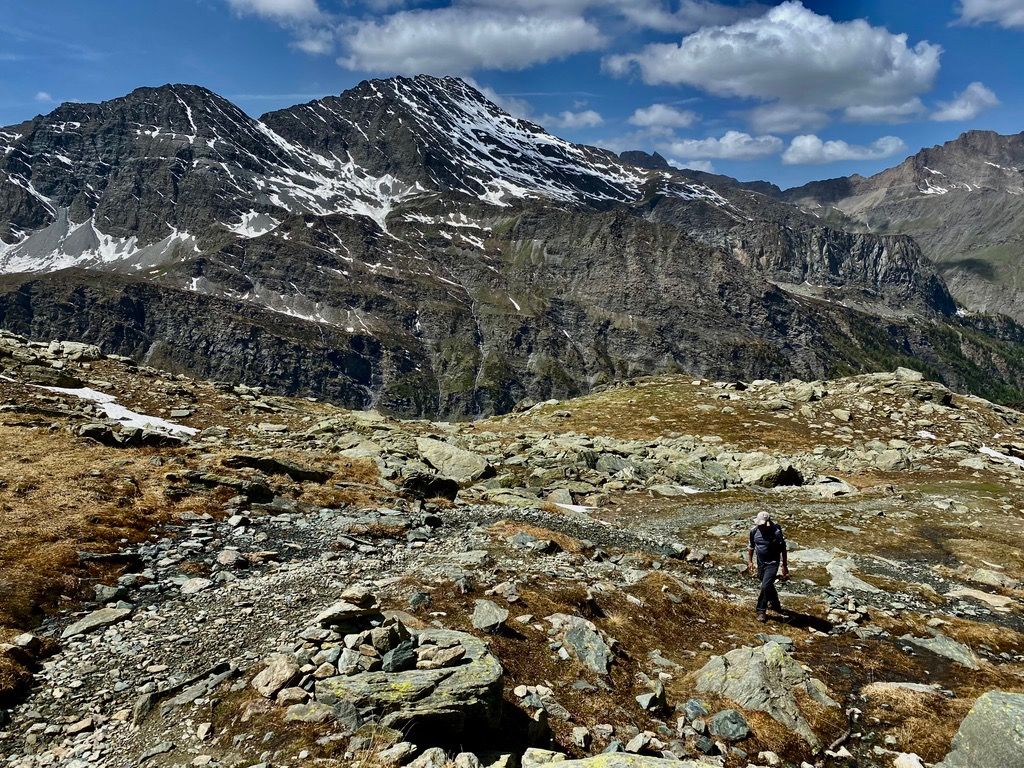
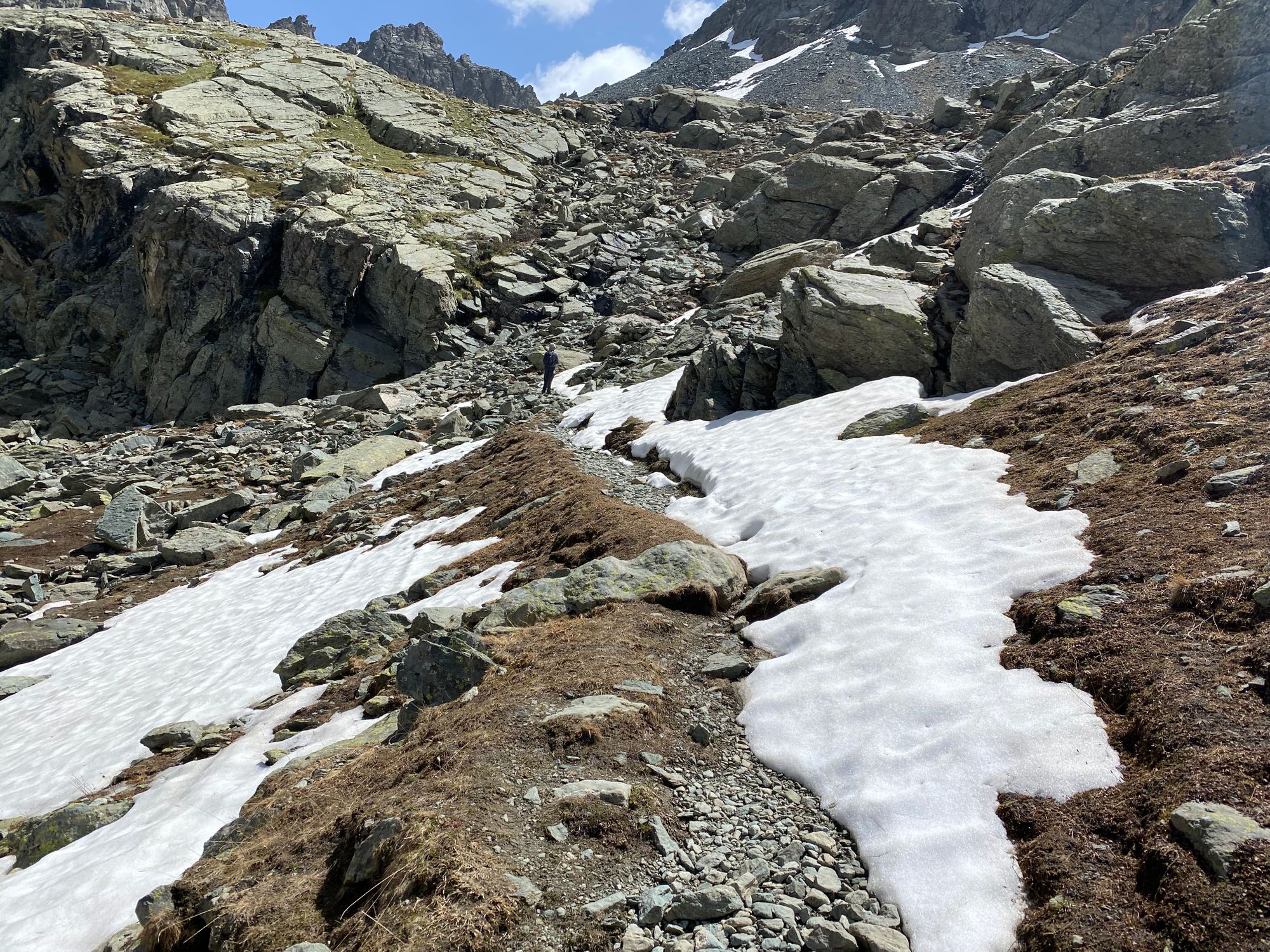
"I headed in the general direction up towards where the pass should be. Still the Col de la Traversette could not be seen. But from the photos I had seen this was the right way. I encountered a huge boulder slide and now started climbing using my hands and carefully placing my feet - as many of what seemed like solid big rocks would move when weight was put on them. It was slow going. Snow patches separated parts of the boulder fields. I tried to circumnavigate these snow fields fearing that with the warm sun they would be soft and I could sink deep into them." journal excerpt 05-27-22
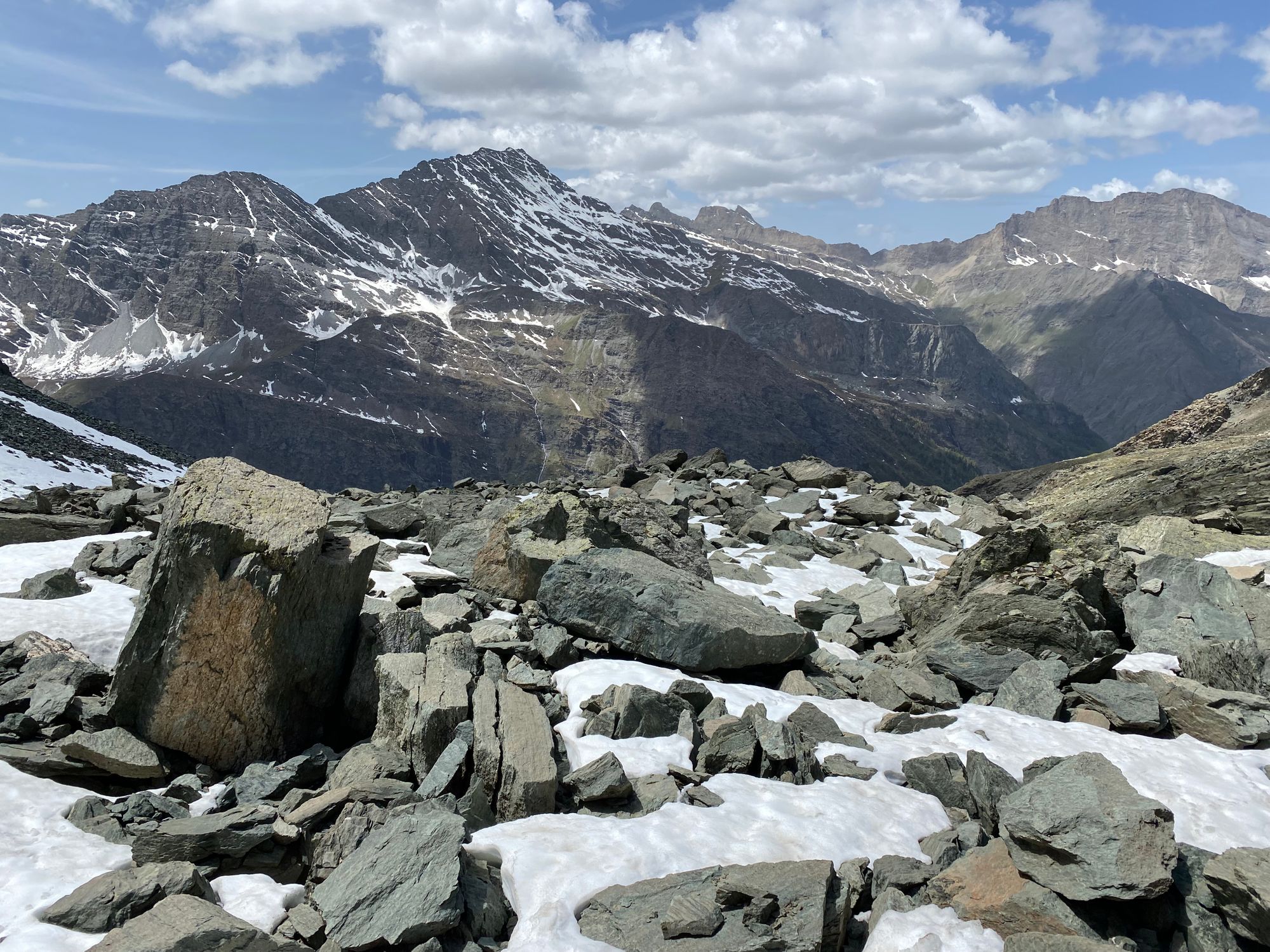
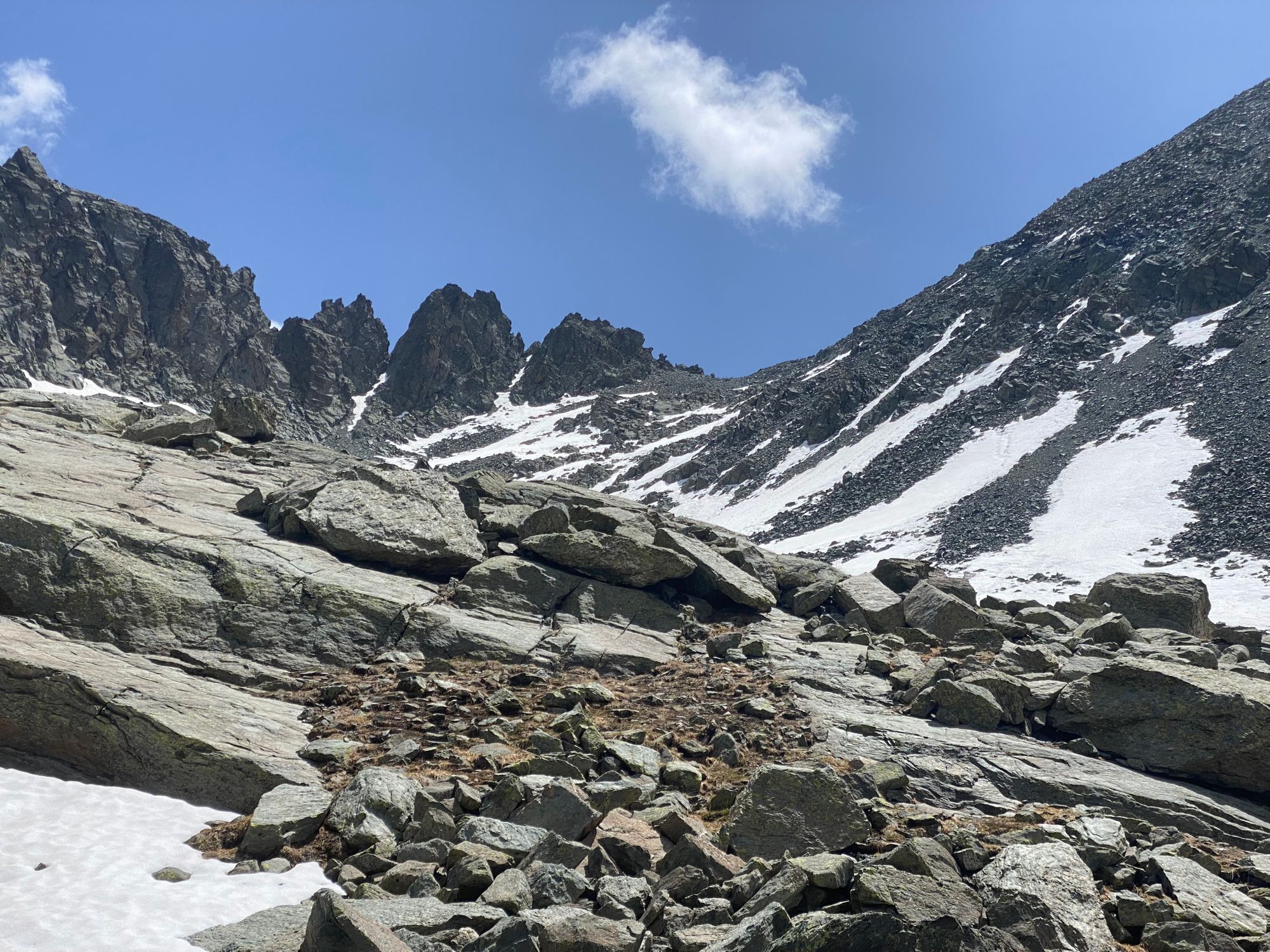
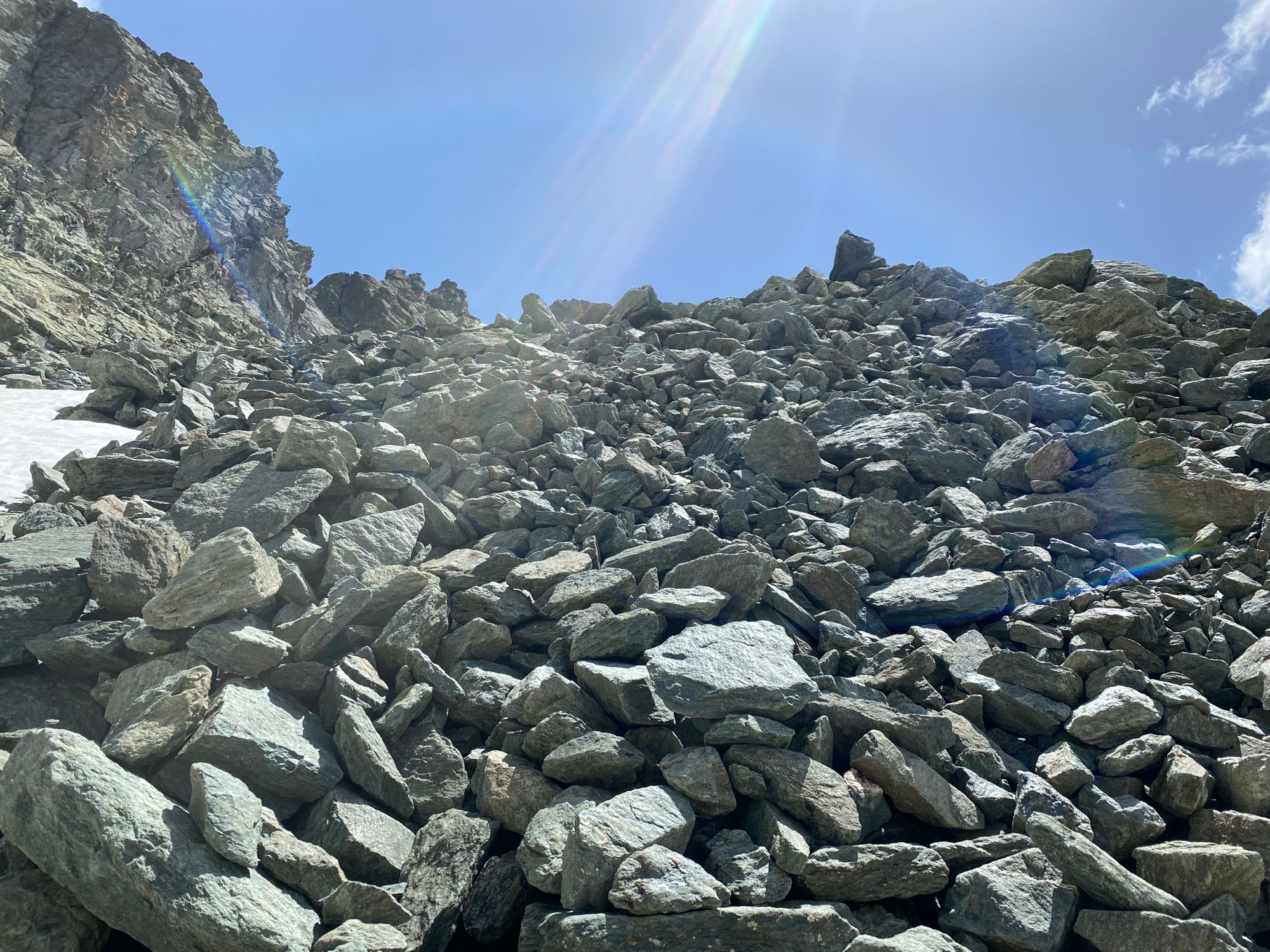
"I summited the boulder pile and Al was nowhere to be scene. I called out to him and no answer. I had to get to a better visual place and now considered crossing snow fields instead of going around them. Carefully I would start the walk across them and sometimes I would only sink in a few inches....other times up to the ankle and only near the exposed rock themselves would I sink in past my knees. This was OK and I reached a point where the Col was finally visible. I called out to Al and he responded from somewhere down below me. Eventually, I was able to pick him out far down where a large snow field shirted the edge of the steep incline that ran up to the peak of Mont Miso - the tallest Alpine peak around." journal excerpt 05-27-22
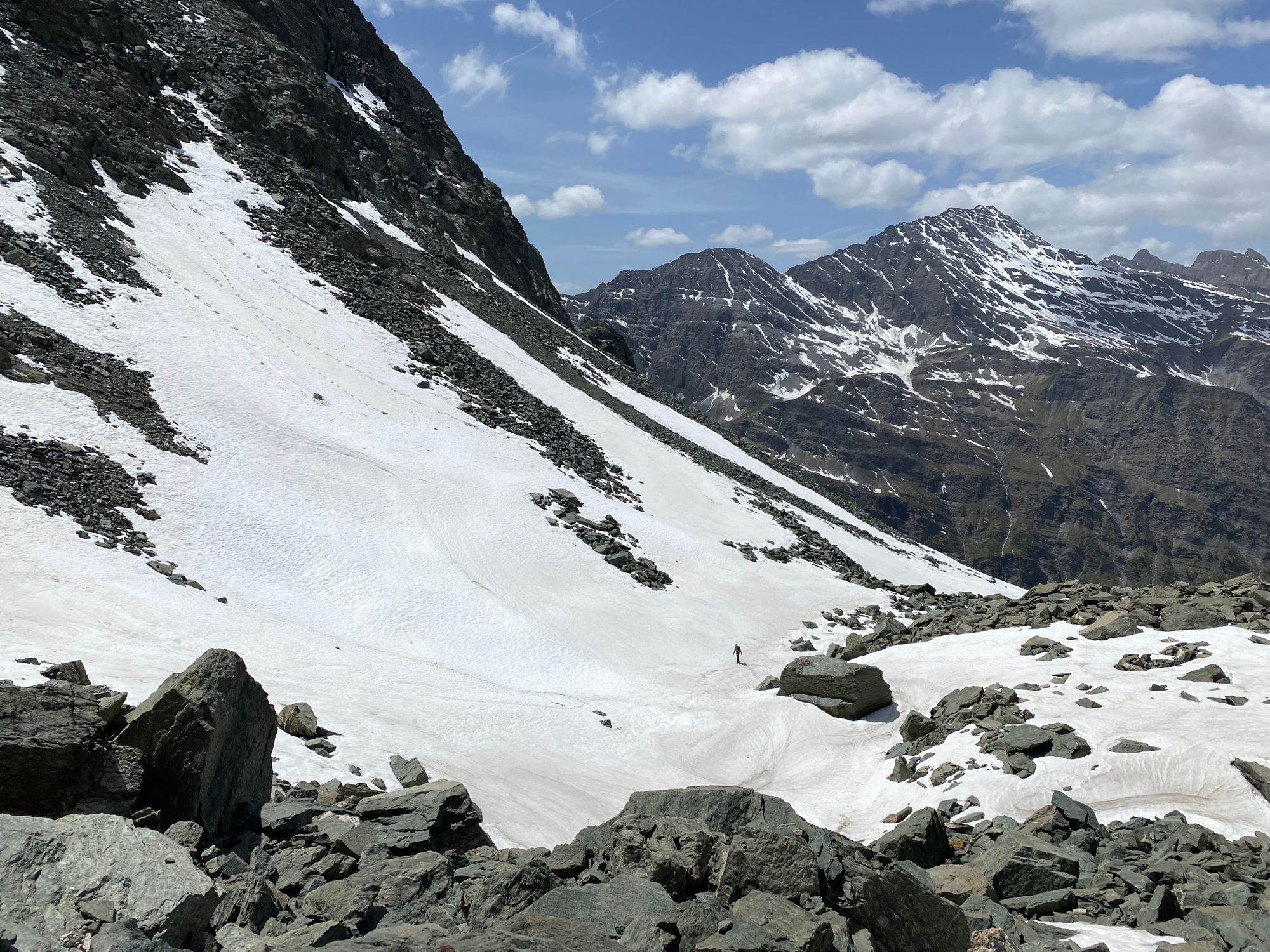
"We had not more closely considered the route of the trail, and had made the mistake of forging a new path. This had cost us at least an hour of time, strenuous efforts and dangerous climbing conditions. Now we approached reaching the summit over a boulder strewn morass and large snow fields that were softening up by minute. It was a daunting challenge and both Al and I had expended lots of energy making it this far. Finally the pass was visible and that encouraged us to push on without hesitation. We climbed over boulder masses being careful of our footing. Gently, we made our way across small snow fields …..sinking in every so often." journal excerpt 05-25-22
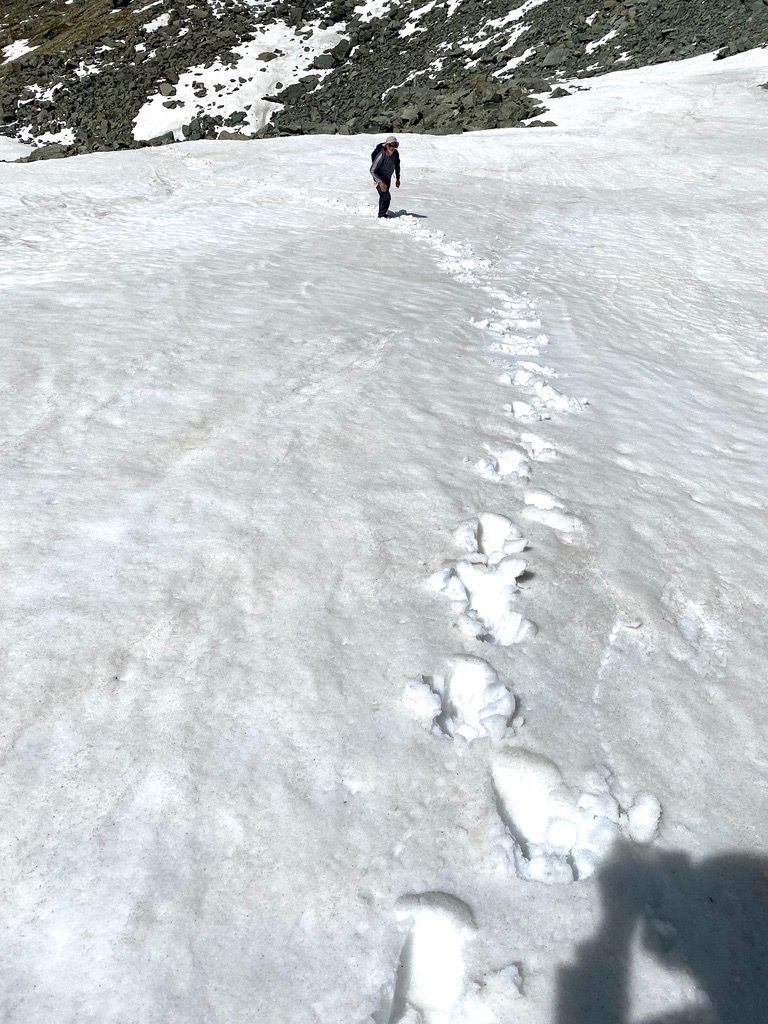
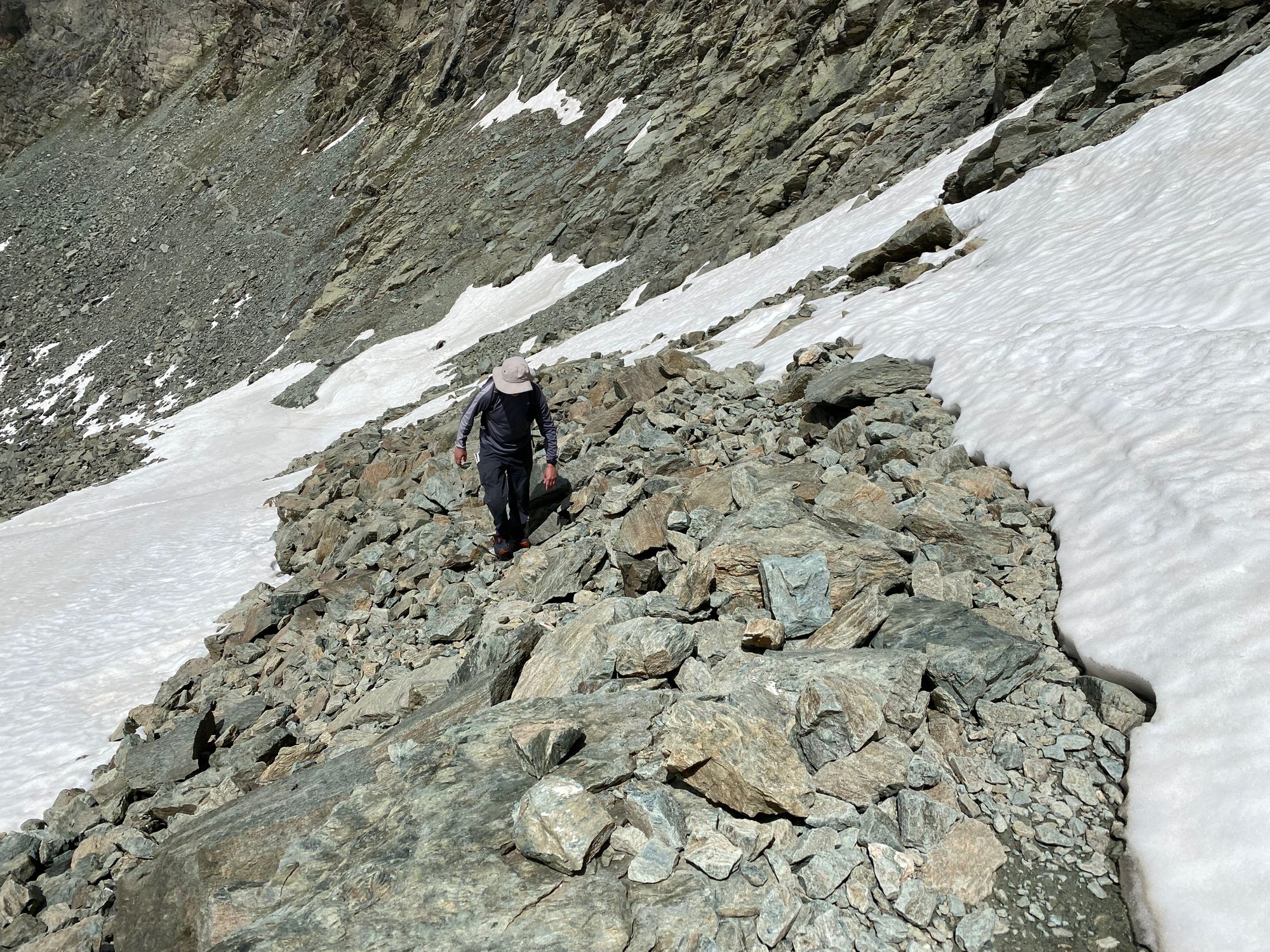
"After about 30 minutes we were faced with a large snow field that either had to be crossed or continue up the rocks until another smaller snow field. It would keep us on the wrong side of the marked trail that was somewhat visible now. I proposed taking our chances and cross the large snowfield and then climb to where the trail was. Al had crossed the snow down below and agreed this was the best approach. I went first and first my footing was good on the icy surface. I was wearing hard leather hiking books and was able to dig into the soft ice as I sidestepped up the steep surface....edging upwards and across the snow field. Al followed a safe distance and halfway across near where a boulder slightly broke the surface, I sunk in halfway up my thighs. I freed myself and diverged away from the boulders and the footing improved. Soon I was on the other side and I scrambled up to the trail and rested and waited for Al." journal excerpt 05-27-22

"The trail was clean, a marker which I took to be the summit was visible and I was energized. Finally, the objective of so much research, reading and effort was within sight. I thought of Hannibal and how after losing something like 40,000 soldiers and an incredible epic six month odyssey of fighting, negotiating, forging, weathering all sorts of obstacles, he was within sight of Italy and the hated Roman lands. Though tired and still out of breath, I turned on the video and recorded my ascent to the summit.
My voice labored, my boots crunching on the gravel path, a wind picking up, I reached the summit marker and looked down into Italy and the Po Valley many miles away. Al was right behind me, and I recorded him, a big grin on his face, and the elation of having overcome a trial of ice, snow, rock and almost 4,000 feet in elevation gain to make it to this place where one of ancient history's great leaders urged his depleted and utterly exhausted army on and into the unknown of the upcoming campaign against Rome that would last 16 years. We shook hands and then hugged and then just admired the shear beauty and magnificence of the Col de la Traversette.

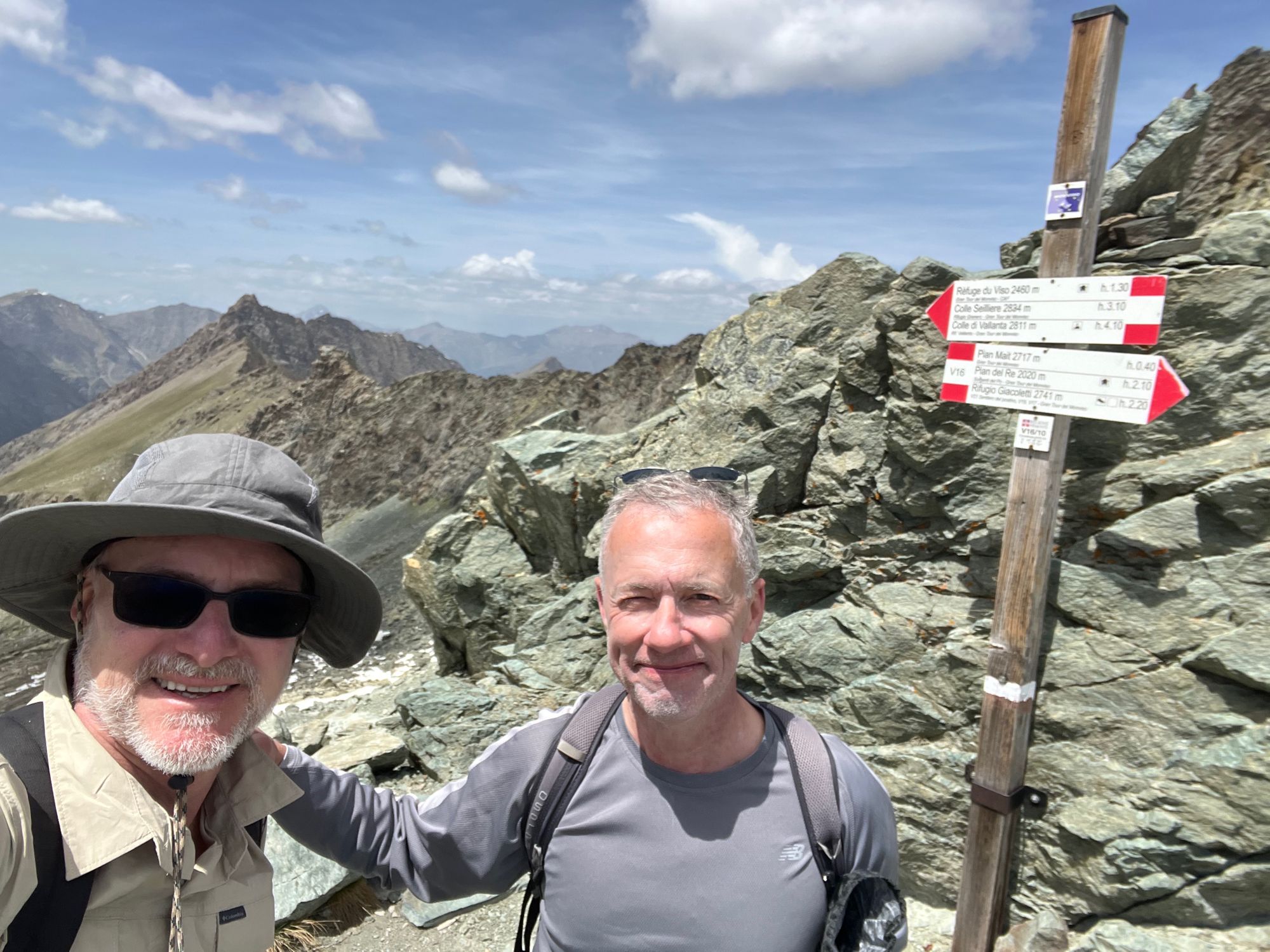
_________________
The last days of October 218 BC. The remnants of Hannibal's army and baggage train had gathered at the meadows around the Combe du Gueyras rock and the final push to summit the Alps was set in motion. His army had taken a beating and lost many men and animals. It is unknown, but up to 30,000 soldiers still remained. It would be an arduous trek through a narrow valley and up a steep rock strewn incline.
After a two-day march along the Le Guil River valley, Hannibal's army camped at a large plateau meadow to regroup and rest for the final push over the summit that lay 2.5 miles away and 2,000 feet above them.

Though hostile tribes lurked about they left the struggling army on its own. The new snow had accumulated on top of the permanent year round snow. Men and beasts trampling through the snow could not getting a footing on the frozen under layer and would loose their footing and fall - sometimes over precipice cliffs that proved fatal.
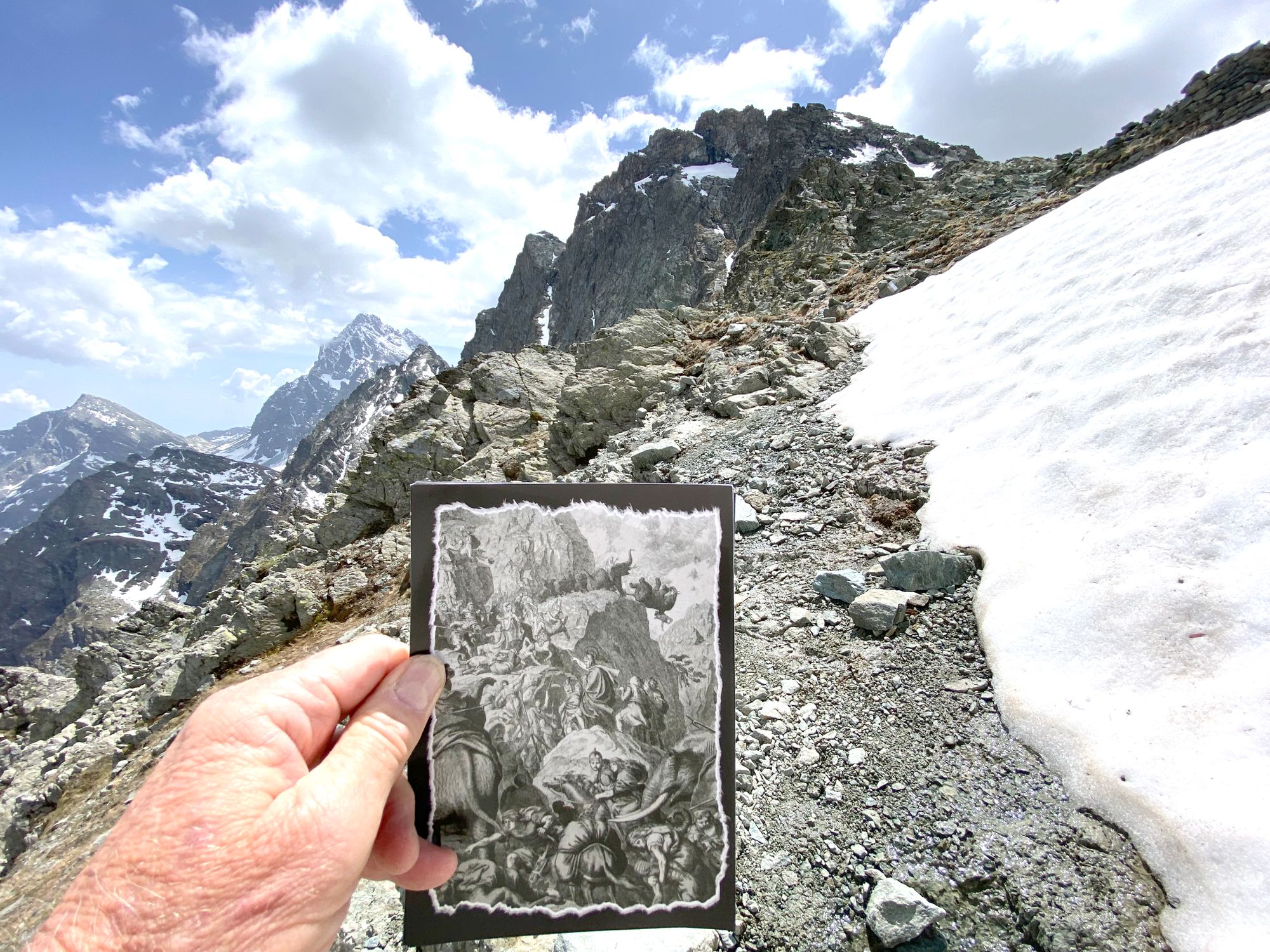
The heavier pack animals would break through the frozen layer with their hooves and struggling viciously to get out, would become stuck in place unable to move at all. The longer they remained encased in frozen snow, the more likely they would die, or be so impaired, as to be useless.

The men, some injured from the ambushes, other fighting off sickness, most weak from malnutrition, and all cold and wet from the snow and wind, were disheartened.
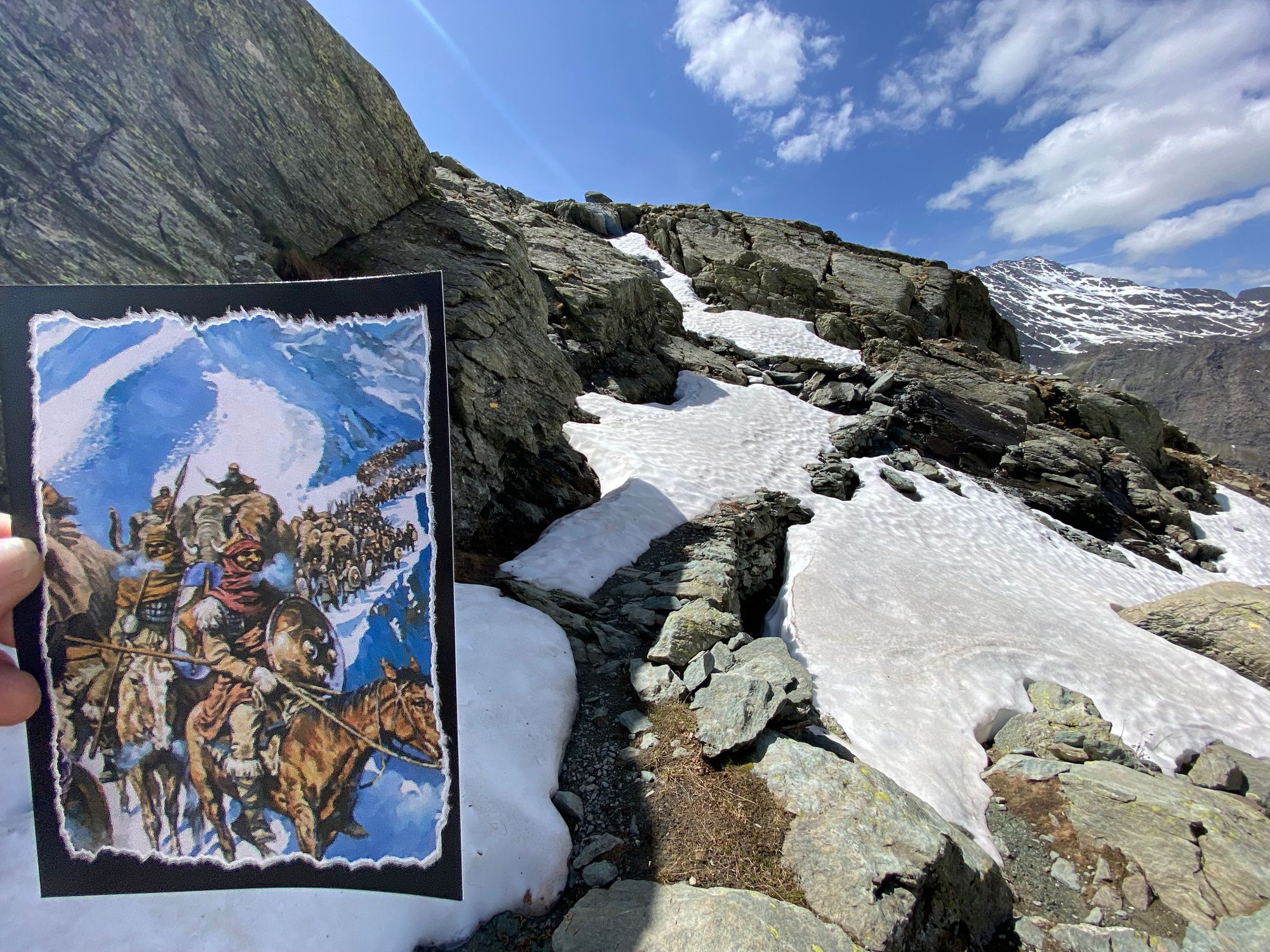
Hannibal, realizing the moral of his army was at its lowest and that he needed to inspire them to make this last final effort and sacrifice, road up to the pass and in a famous speech urged them on.
____________________
Titus Livy, Roman historian's account of Hannibal's famous moment atop the Alpine pass:
"Getting on the move at dawn, the army struggled slowly forward over snow-covered ground, the hopelessness of utter exhaustion in every face.
Seeing their despair, Hannibal rode ahead and at a point of vantage which afforded a prospect of a vast extent of country, he gave the order to halt, pointing to Italy far below, and the Po Valley beyond the foothills of the Alps."
"My men," he said, "you are at this moment passing the protective barrier of Italy - nay more, you are walking over the very walls of Rome. Henceforward all will be easy going - no more hills to climb. After a fight or two you will have the capital of Italy, the citadel of Rome, in the hollow of your hands."
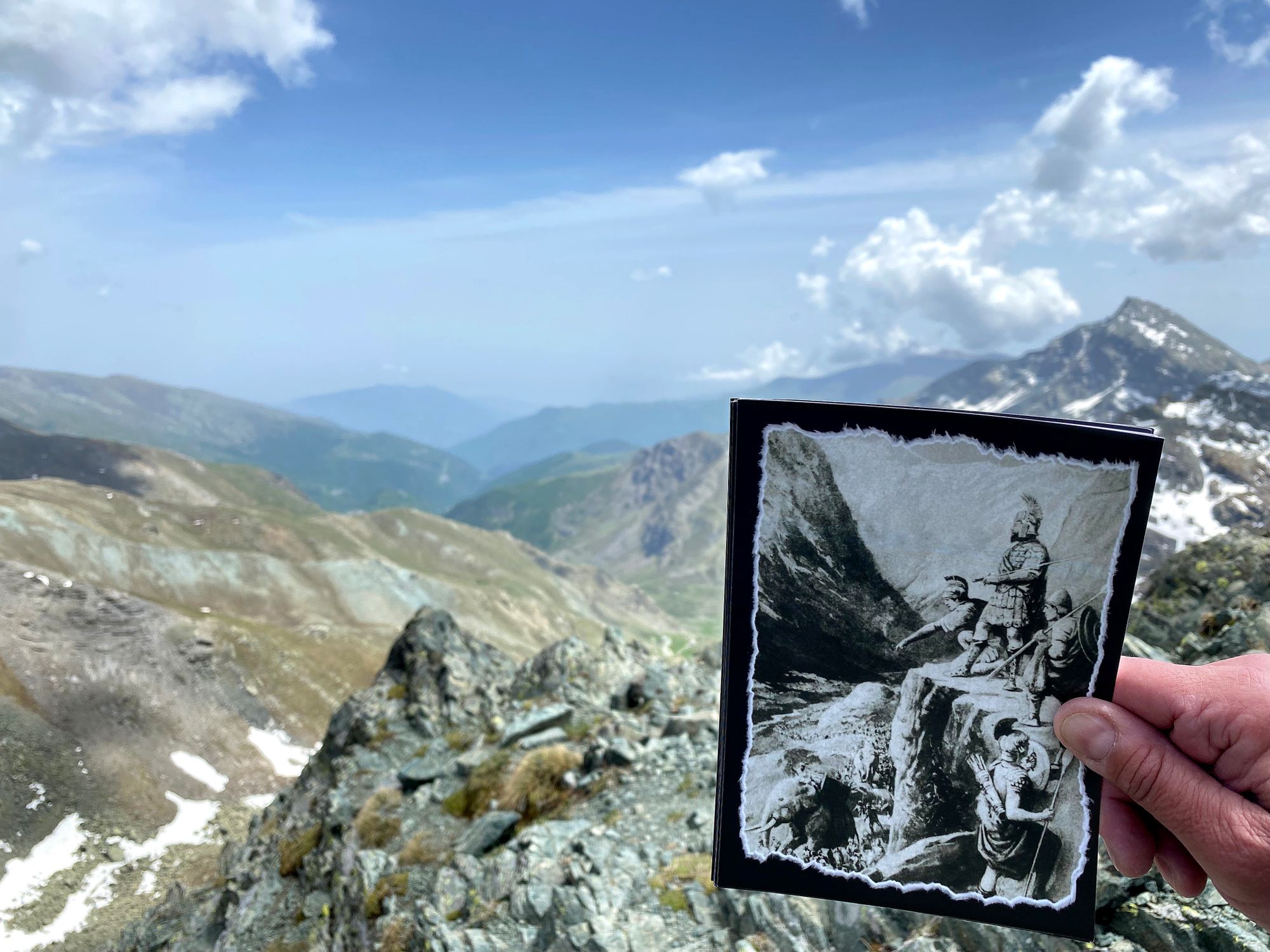
____________
Polybius of Megalopolis, Greek historian's account of the Alpine crossing:
"So he called his troops together and strove to raise their spirits, and for this purpose he relied above all on the actual sight of Italy, which now stretched out before them, for the country lies so close under these mountains that when the two are seen simultaneously in a panoramic view, the Alps seem to rise above the rest of the landscape, like a walled citadel above a city. Hannibal therefore directed his men's gaze towards the plains of the Po, and reminded them of the welcome they would receive from the Gauls who inhabited them. At the same time he pointed out the direction of Rome itself, and in this way he did something to restore their confidence."
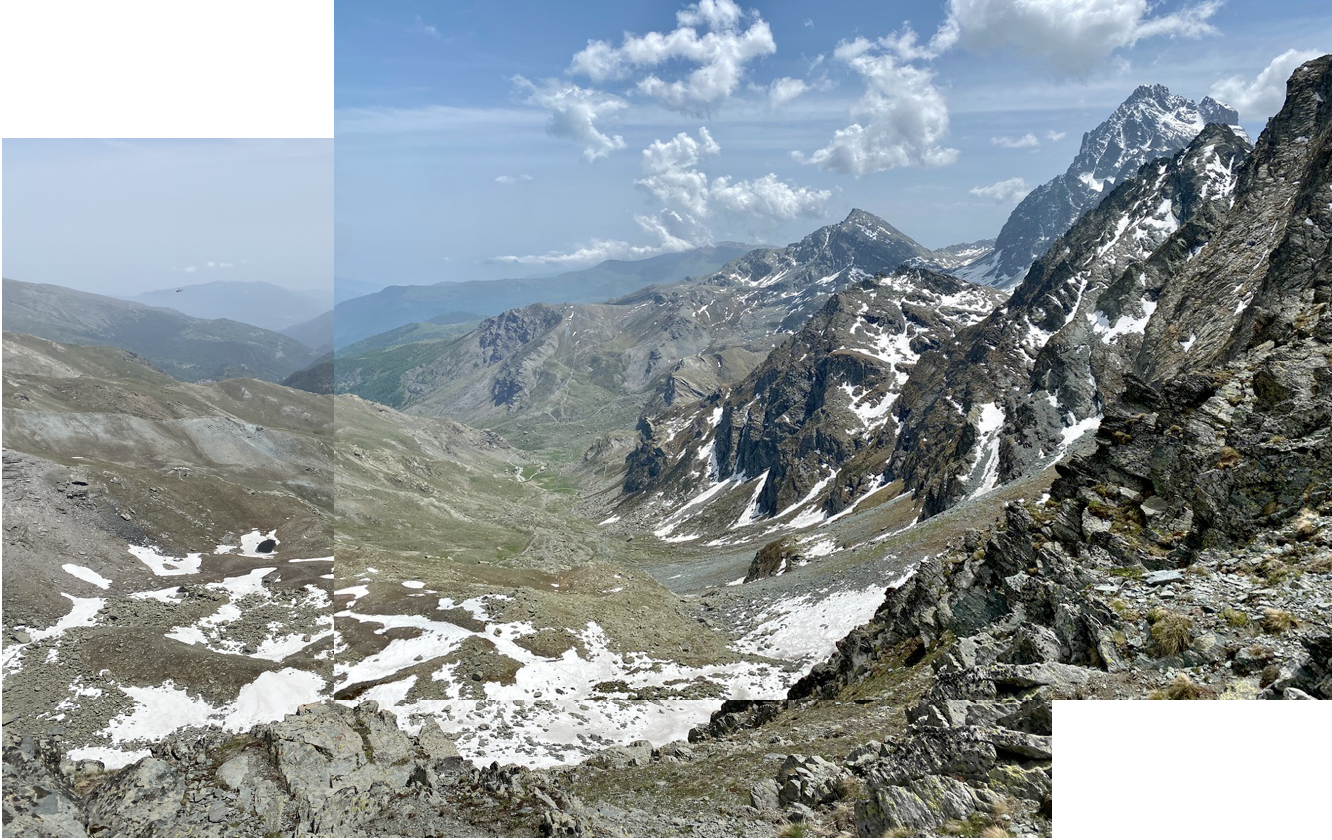
___________________
Hannibal would encounter a massive rock slide that required a path to be built through it. A huge boulder that block the way would require being broken apart by heating the obstruction and pouring vinegar on it to crack it into pieces. He would lose more men and beasts on the descent into Italy than on the ascent.
His passage over the summit would take a week before what remained of his army was safely in the valley where his animals feasted on pastureland and his men were provisioned by the friendly Cisalpine Gallic tribes that would join Hannibal in droves to battle the hatred Romans.
Of Hannibal's initial Army of between 70,000 and 90,000 soldiers that left New Carthage in Spain in May, he had 20,000 infantry and 6,000 cavalry left and all 37 of his war elephants. He would spend the next 15 years battling Romans in Italy before being recalled to defend Carthage. Of his original army very few survived to see their homelands again.
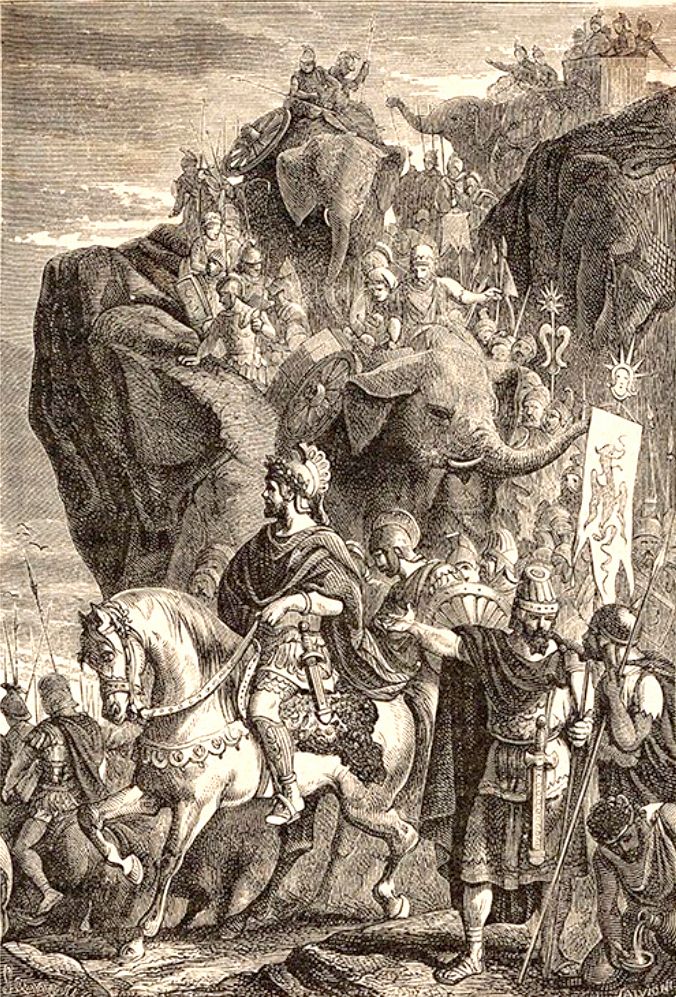
__________________
"It was 1:30pm and though the weather looked good..the wind was strong and clouds were accumulating. I put on my jacket and Al help hold the illustrations as I tried to photograph scenes between gusts of wind. We posed for some photos. I took a minute to venture a few minutes down into Italy where I sat contemplatively and enjoyed the sandwich I had prepared. The clouds started to gather around the higher peaks and it was time to take one last look and head down back into France along the marked trail." journal excerpt 05-27-22
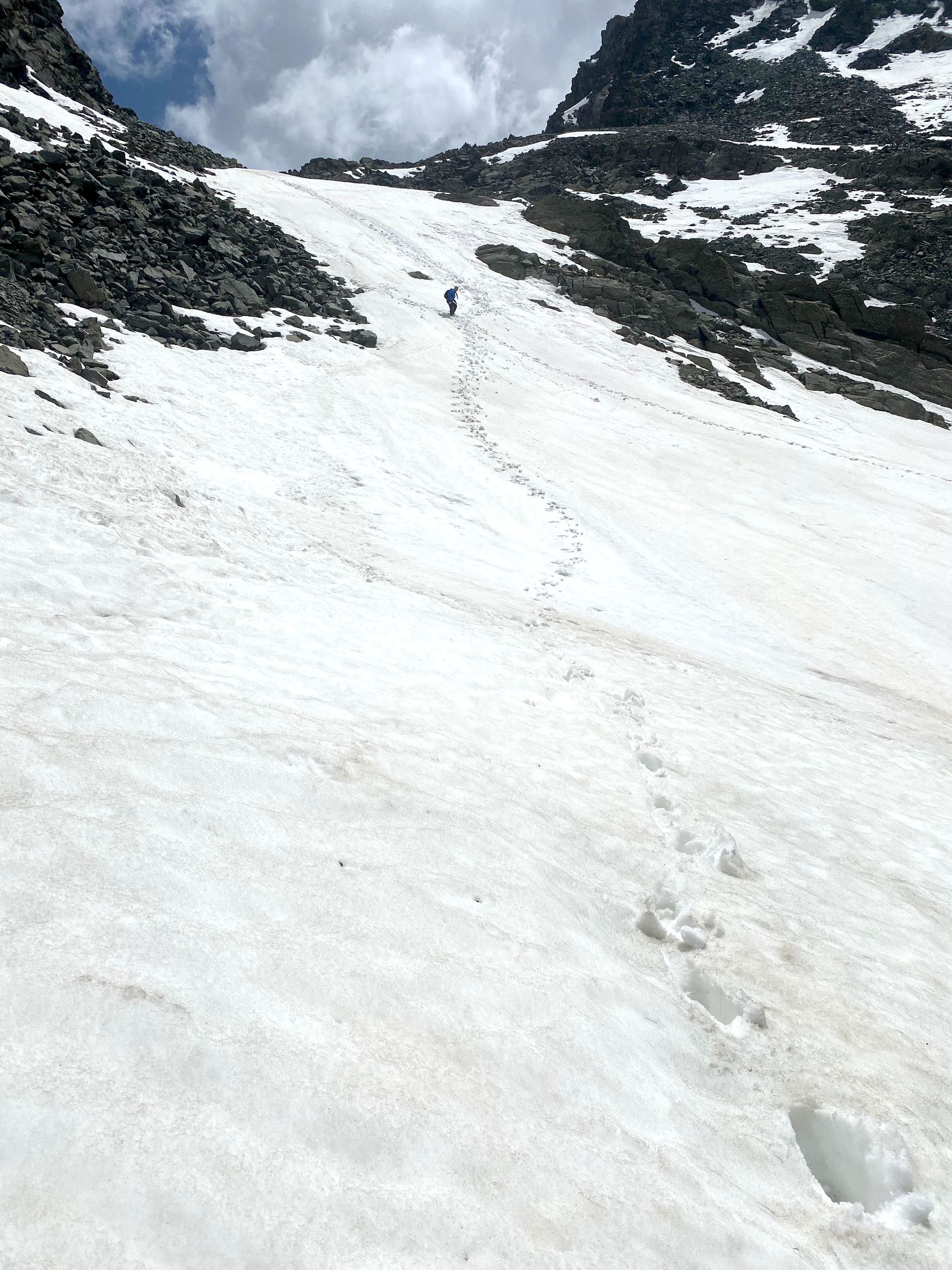
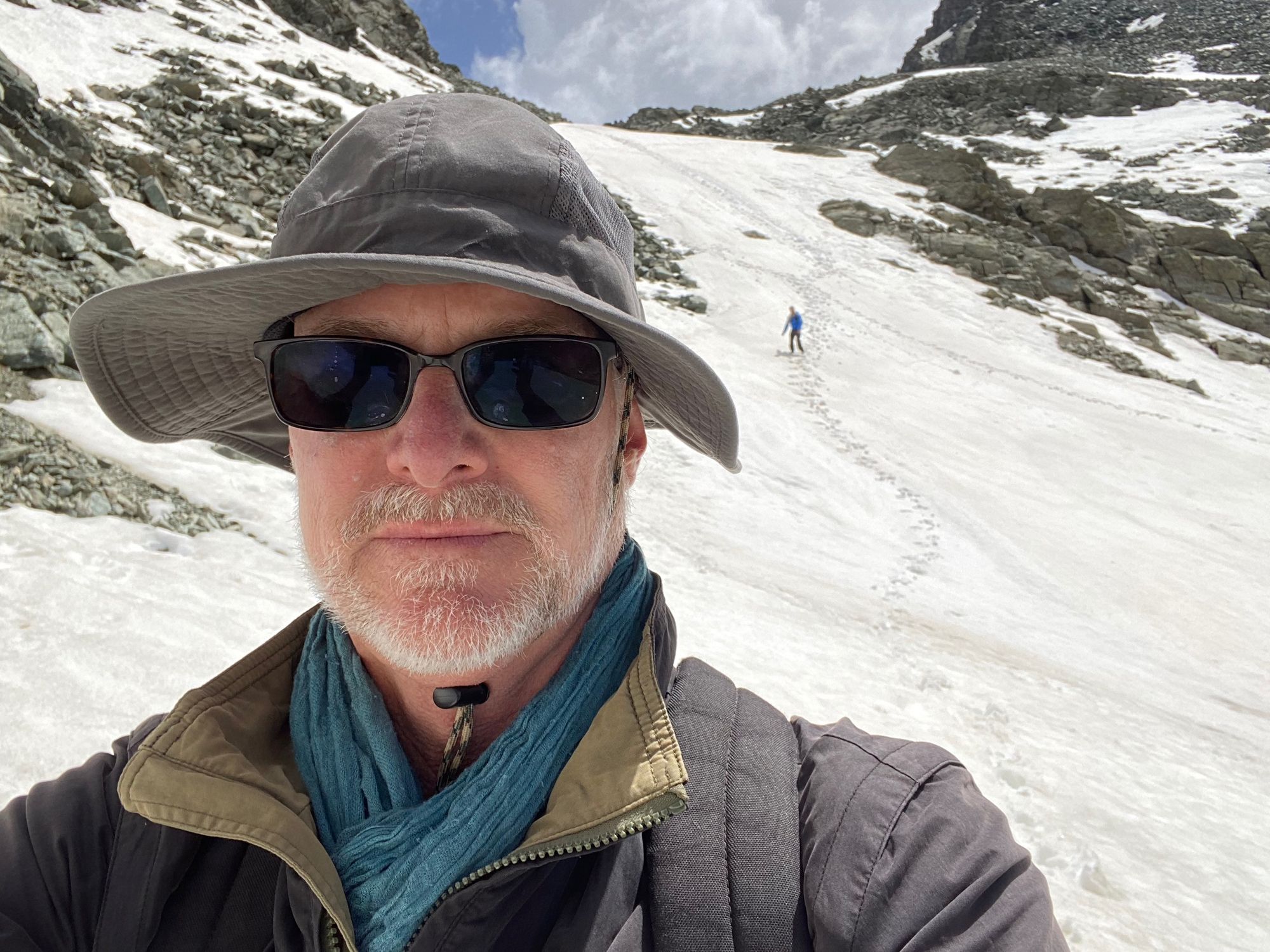
"I continued onward following old footprints in the snow until the trail re-emerged. I snapped a few pix from a vantage point and Al soon caught up with me. We walked together and after the difficult descent, we started talking about the hike and our thoughts on how it had gone so far." journal excerpt 05-27-22

"Al took the lead and I gladly followed. The path now entered the area of large rock patches and snaked its way through the massive rock formations. Hard to see path, but if you scoured the area and looked closely there were faded yellow marks and little piles of stones indicating the way down. Al was good at spotting these marks and I tried to keep pace. We came upon the area where we had diverged from the path and it was easy to see how you could lose your way." journal excerpt 05-27-22
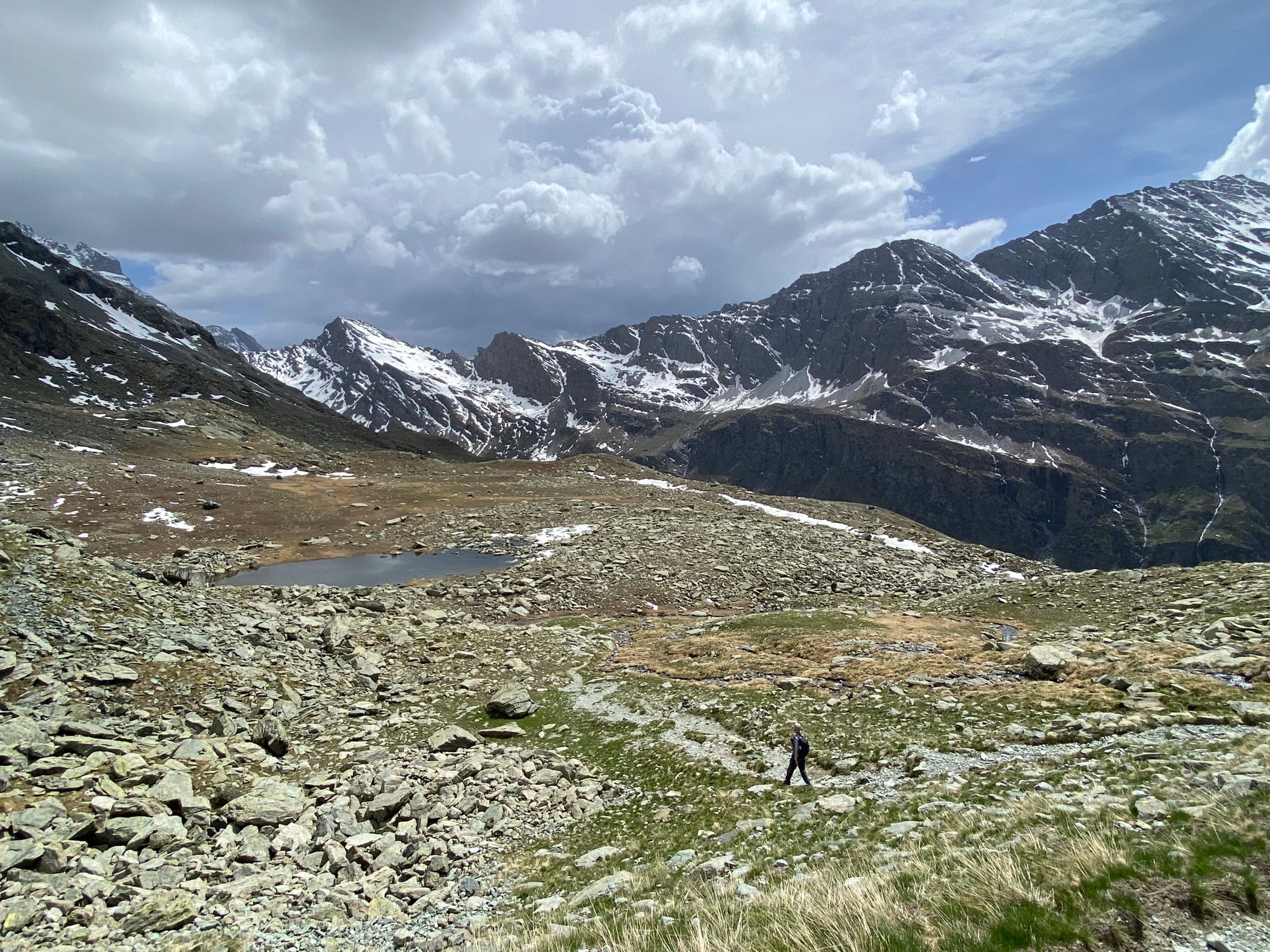
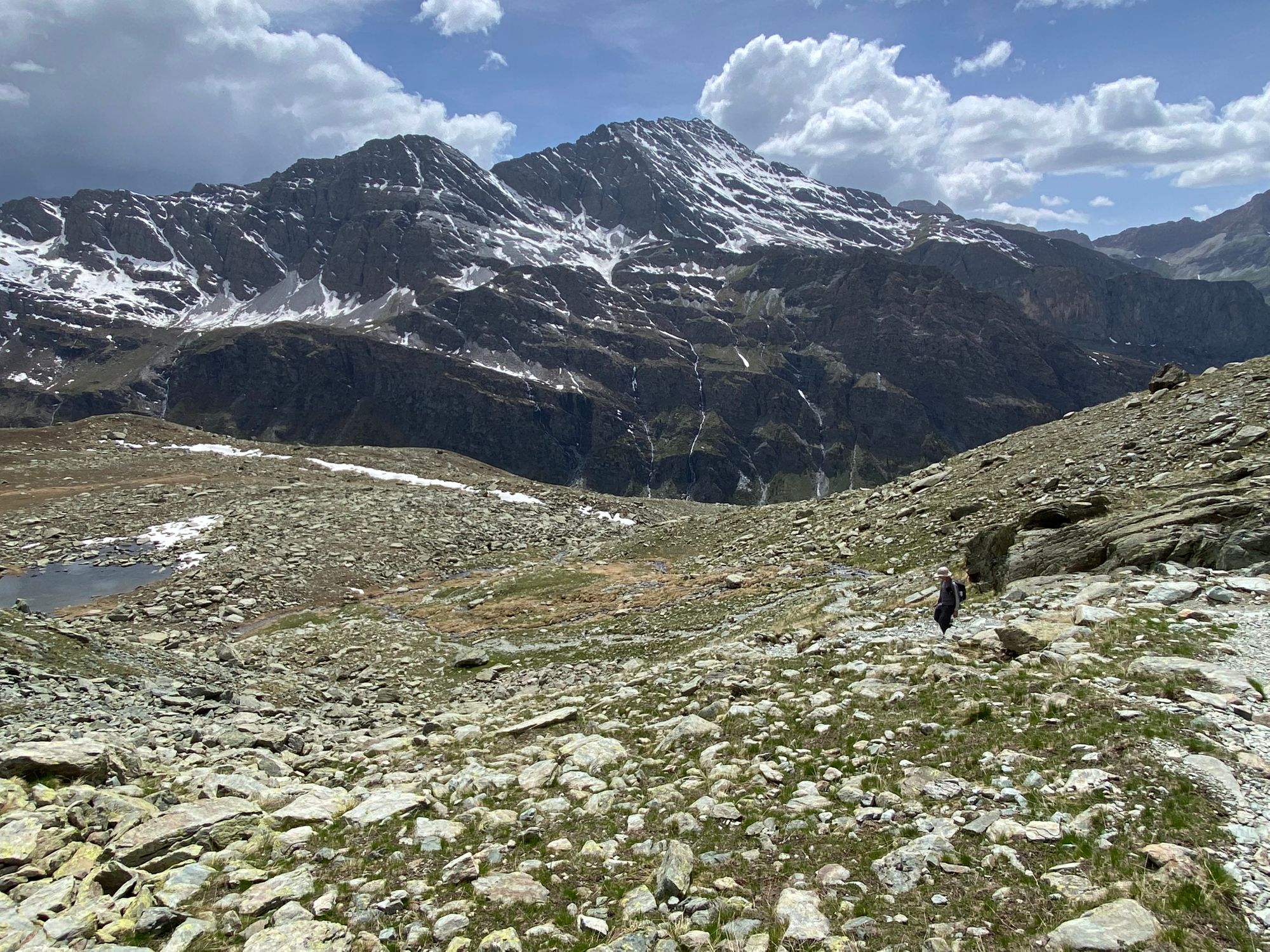
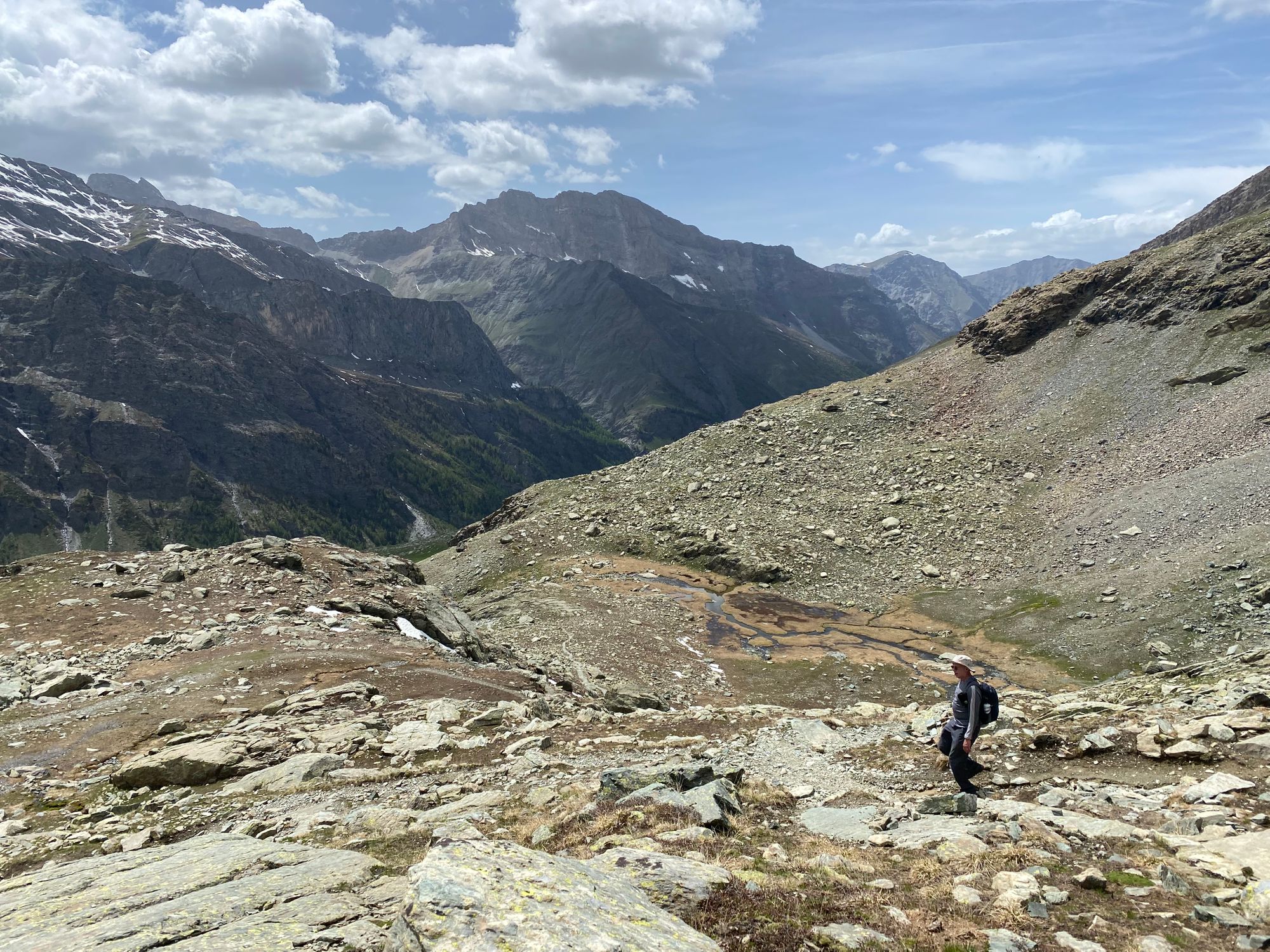
"Some more small snow fields that we edged around and the large flat meadow came into view. My knees had taken a lot of wear and tear and I was starting to feel the affect. It had been some years since I had had knee pain and the limits of what my body could take were starting to show. I knew as long as we were heading downhill it was going to be painful. But I knew where the long relatively level three miles trek back to the car was and though unpleasant it was make-able, as long as I paid attention to where I placed my feet. Weakened knees could lead to carelessness which is a recipe for an accident." journal excerpt 05-27-22
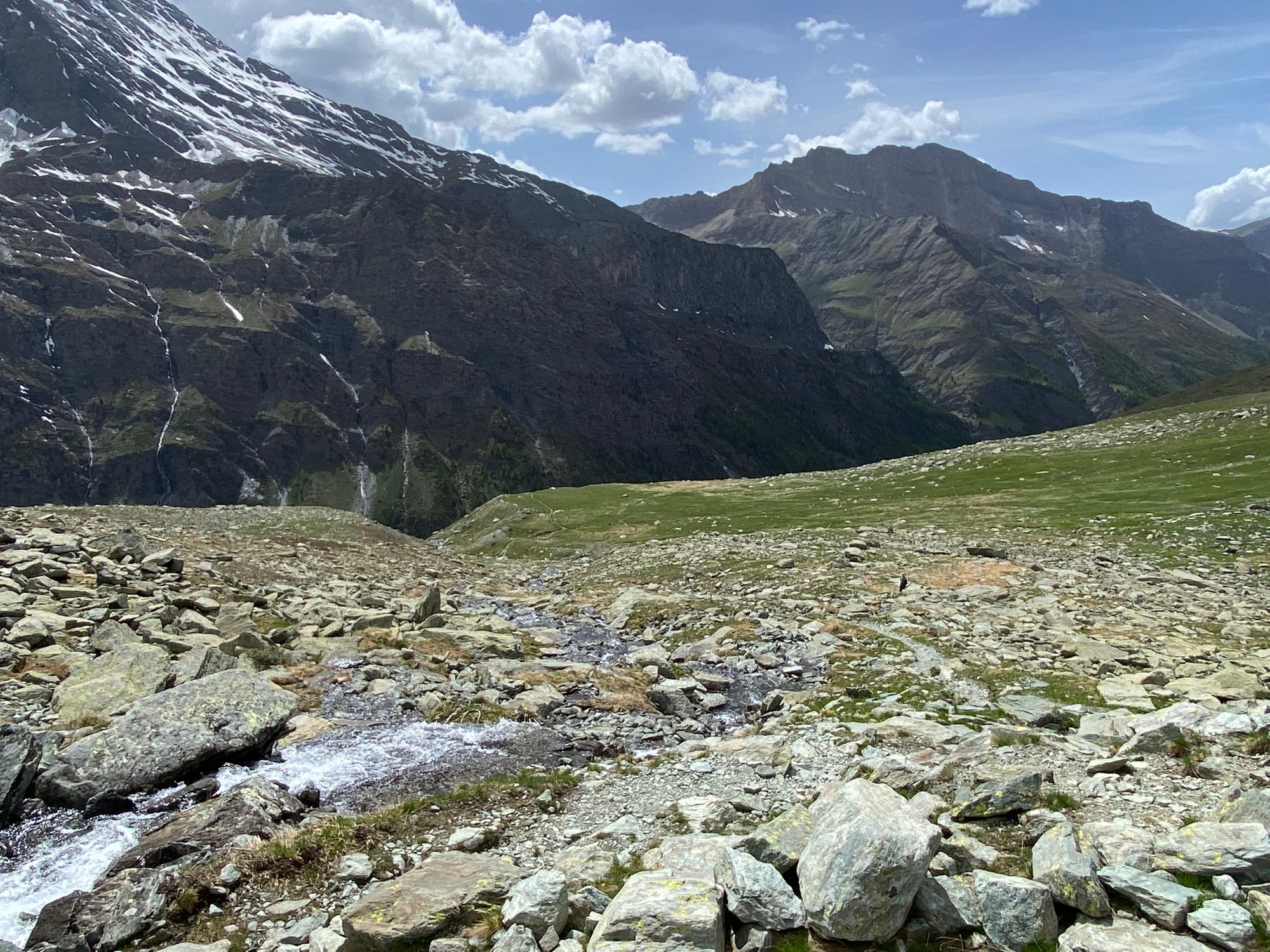
"Al walked ahead and he was soon out of site. I admired and photographed the thin waterfalls that streamed down from the high reaches of the peaks into Le Guil river. Photographed a nice flower scene as accumulating clouds on the Italian side started to mass into a grey ominous weather front. No time to dally." journal excerpt 05-27-22
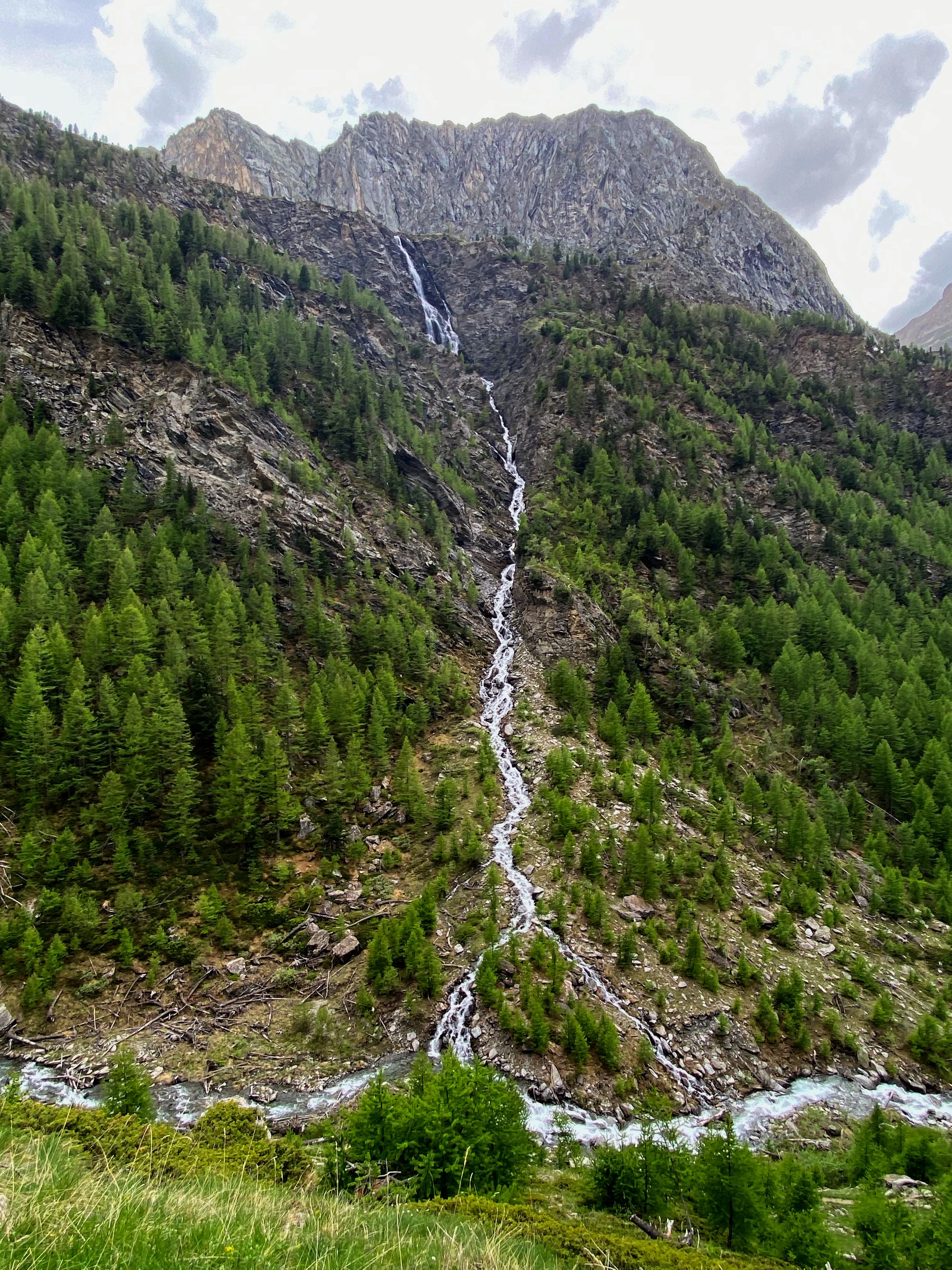
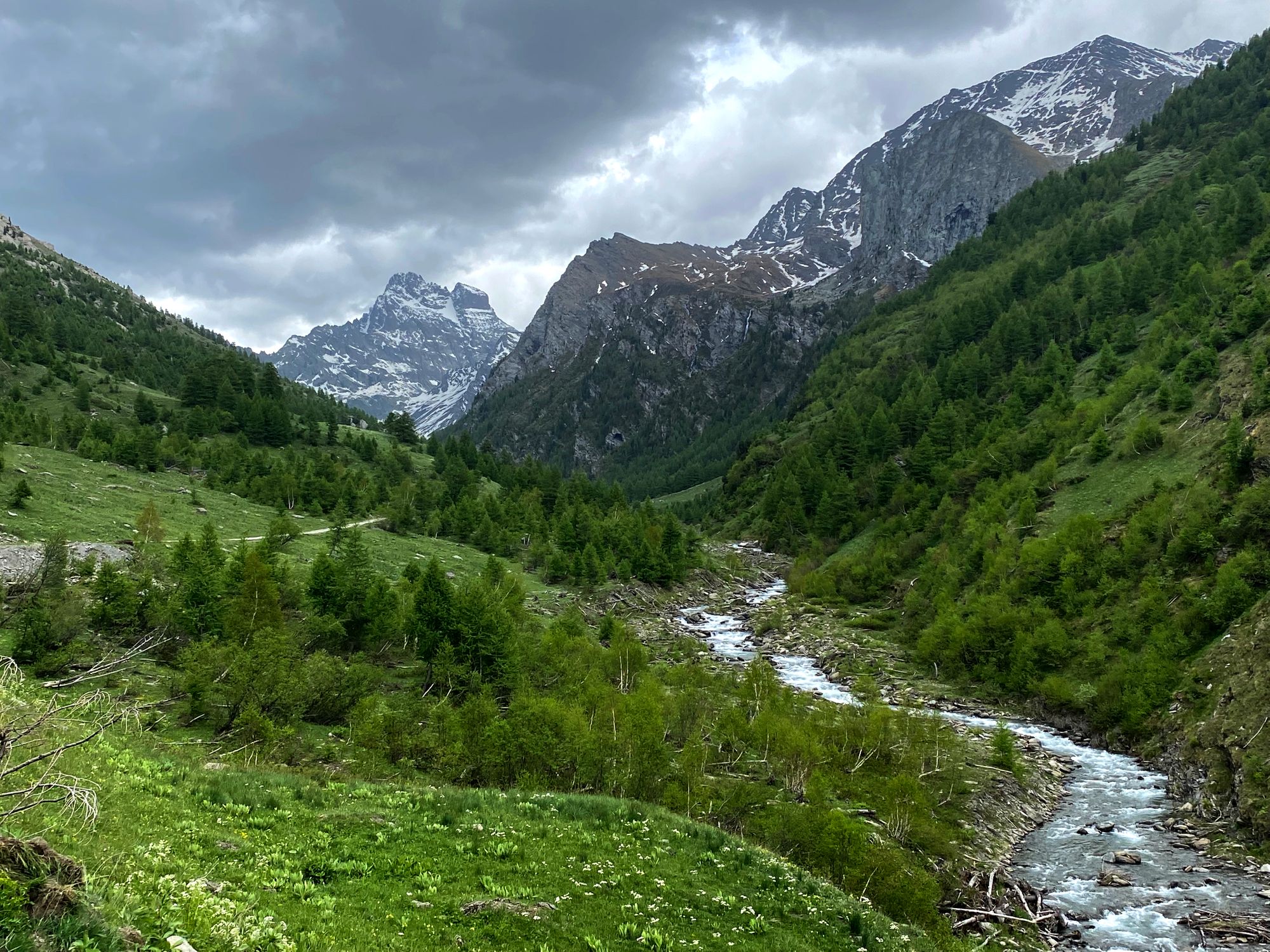
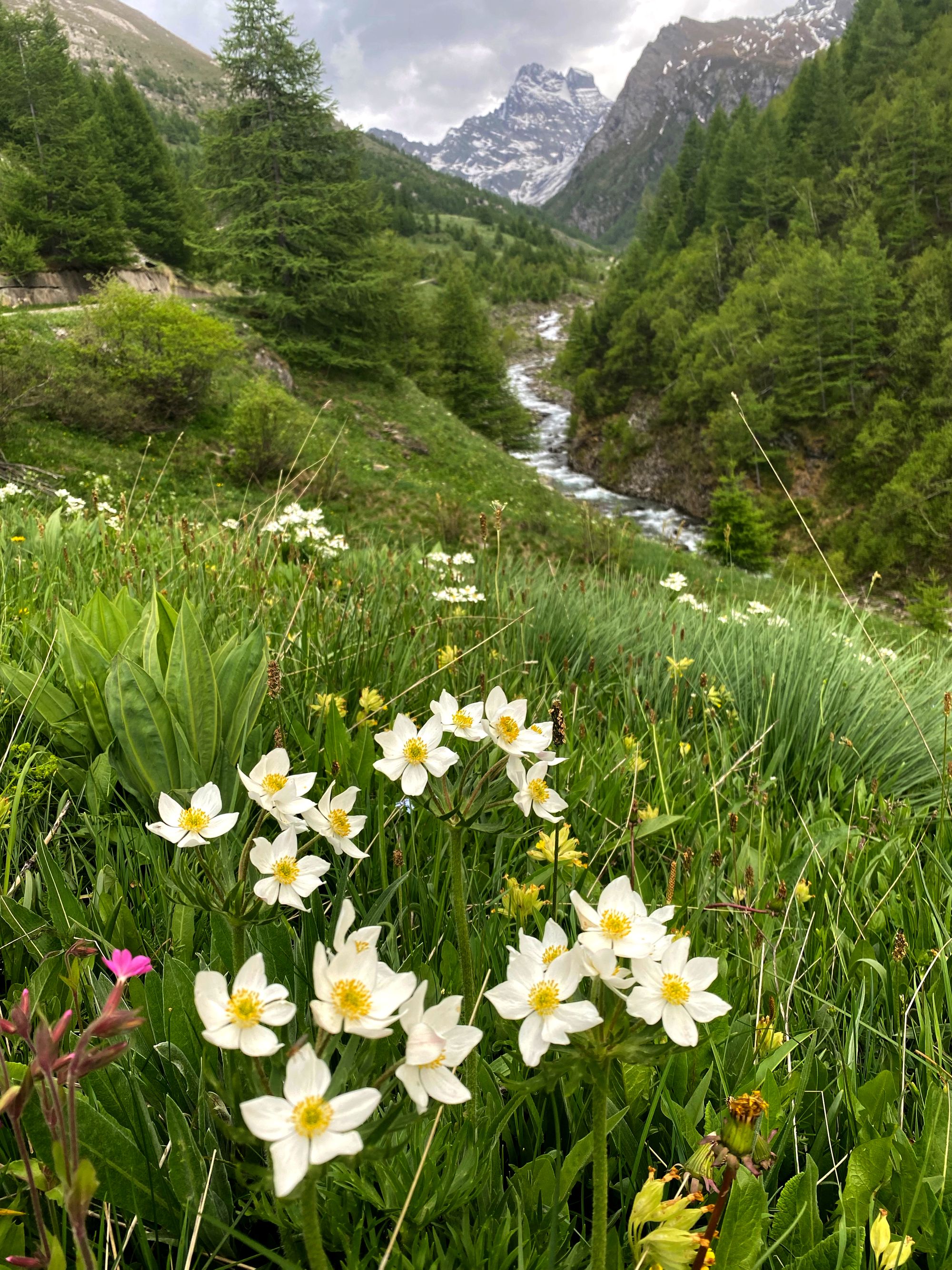
"I came in view of the car and expected to see Al. Now I was walking on the same level as the river. Some older sightseers were milling about and a hiker and his pooch passed by me. I was lost in my thoughts, thinking about what I had just done (a first for me), about The Journey, about the Hannibal Trail, about Al and our friendship and adventures, when I hear him call out. He was by the river with his shoes off and and beckoned me over and said “Take off your shoes and soak your feet.” OK." journal excerpt 05-27-22
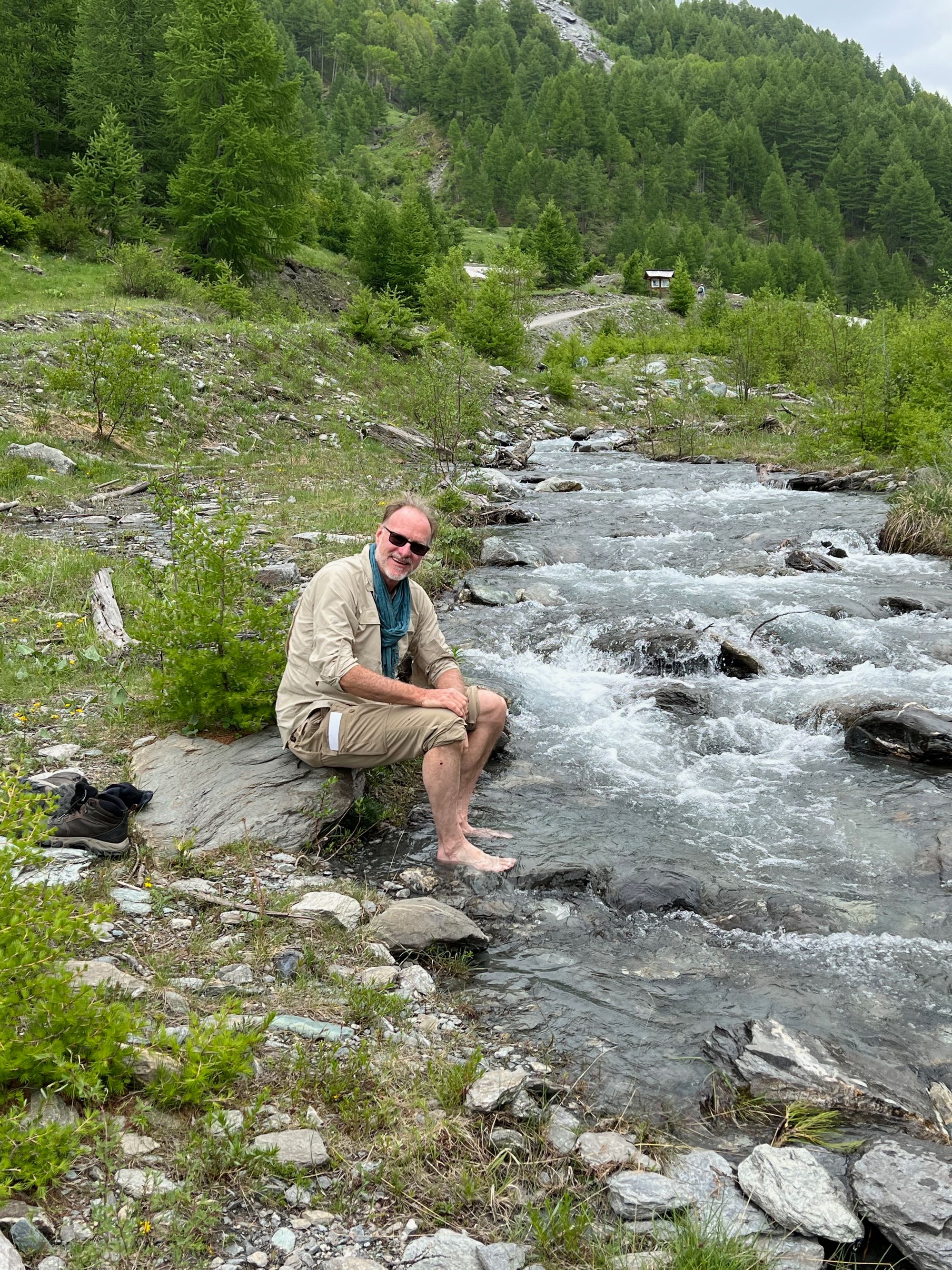
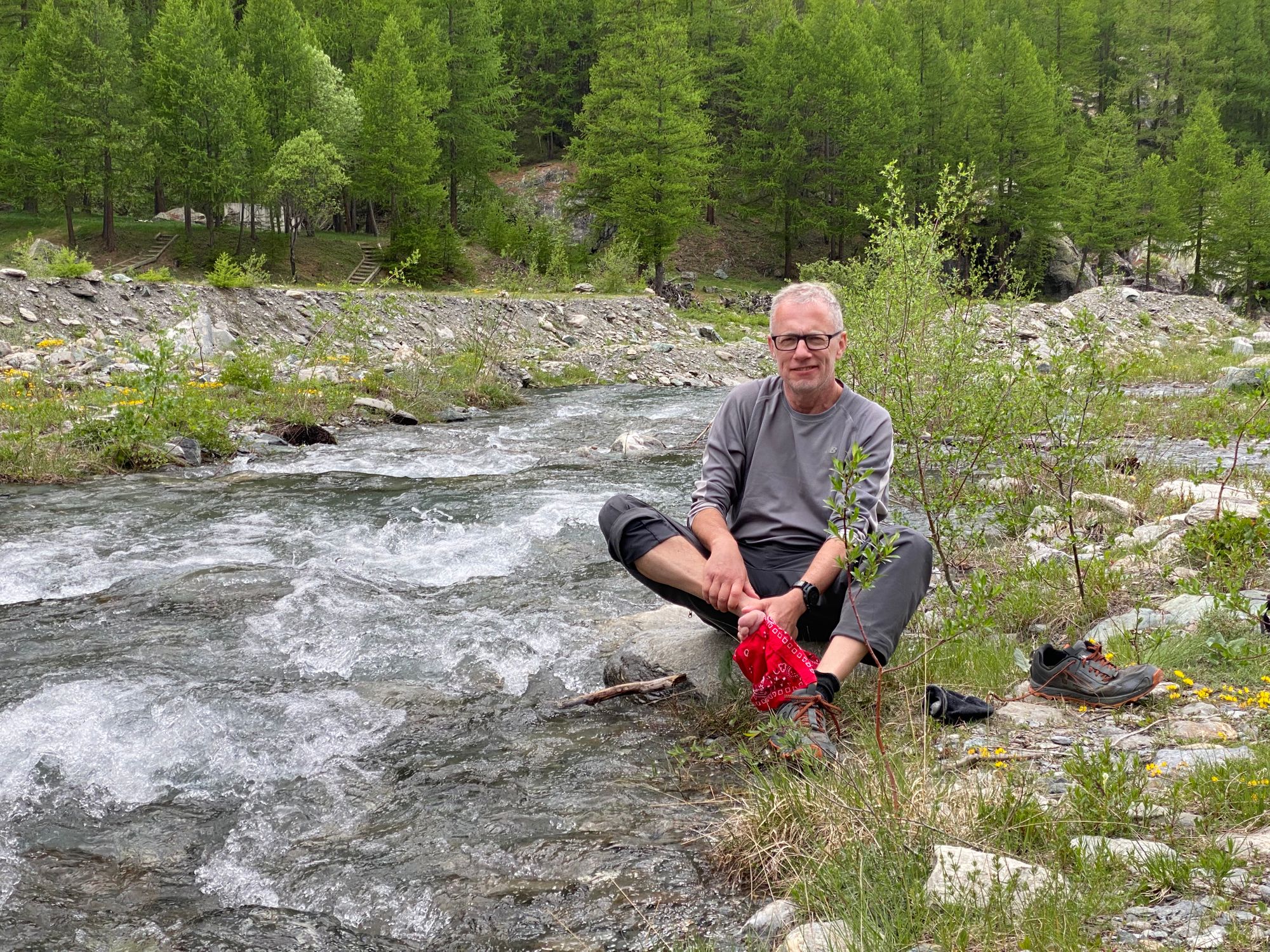
"The water was, of course, ice cold but very soothing. A few dips and time to dry off. The tips of my left fingers were still numb and had started to tingle as circulation started to revive the slightly frostbitten appendages. We sat and bantered a bit. Our comradery a bit deeper..our lifelong friendship … one for the ages. We had followed the Hannibal Trail through Spanish battlefields and sieges, across the Pyrenees, across the Rhone River, through gorges and river valleys and then over the French Alps into Italy. We had found a way and, when we needed, we had made a way. It may not have been easy, but we had made it. The spirit of Hannibal had been with us in this journey from Tunisia." Hannibal journal end 05-27-22
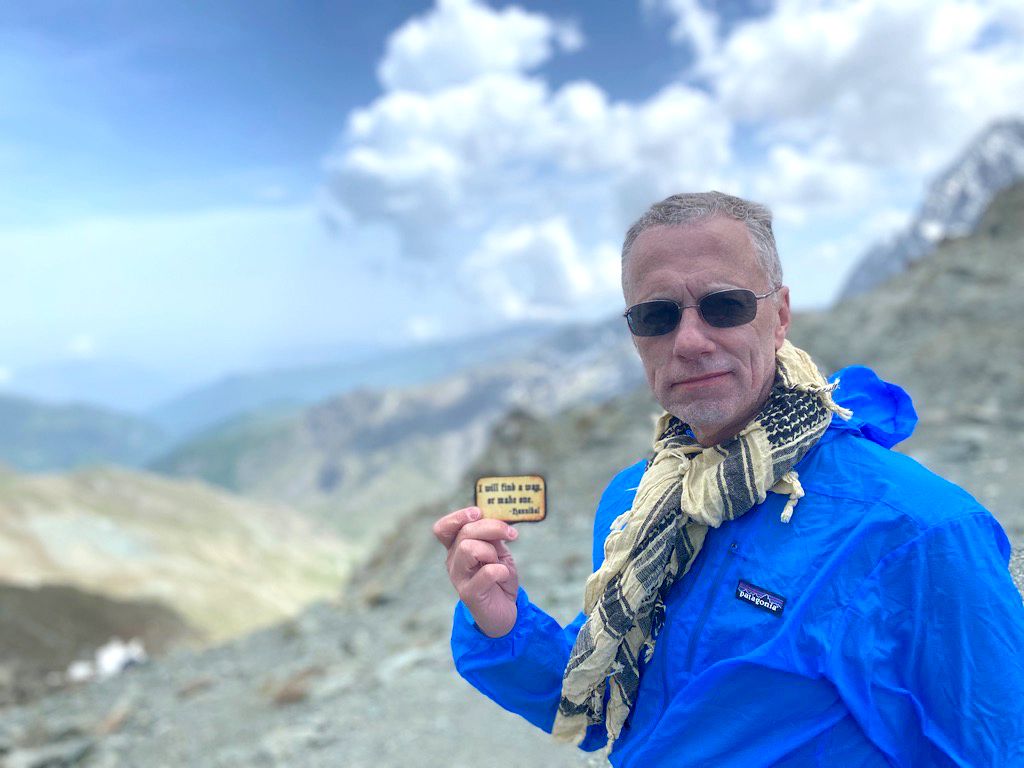
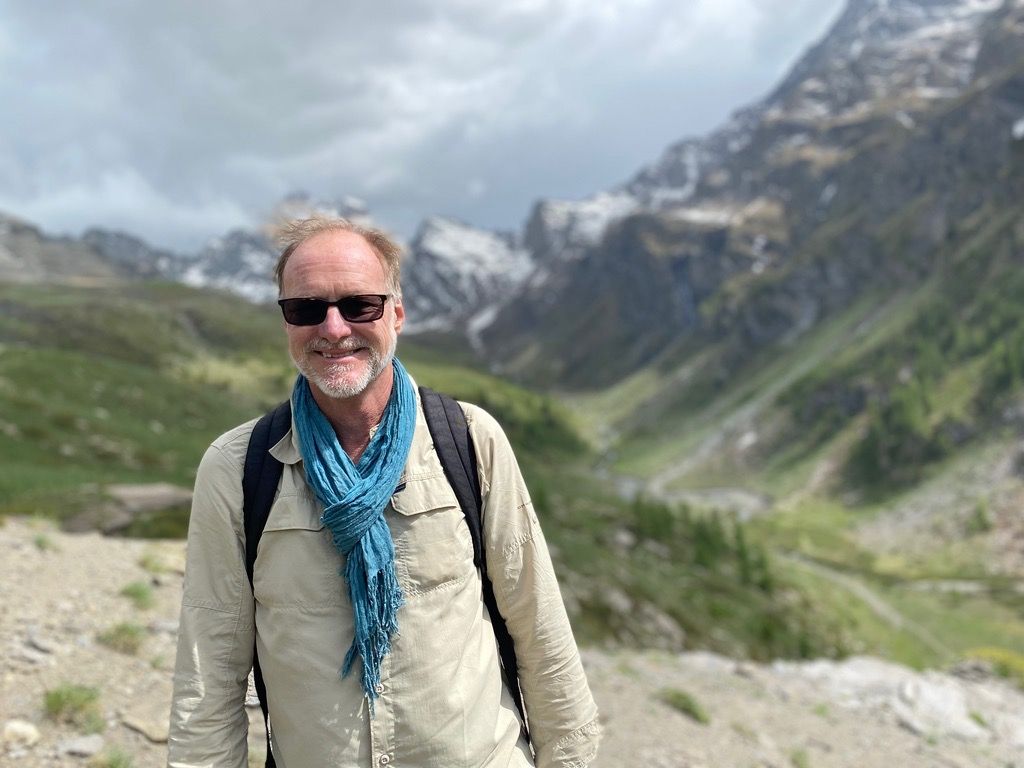
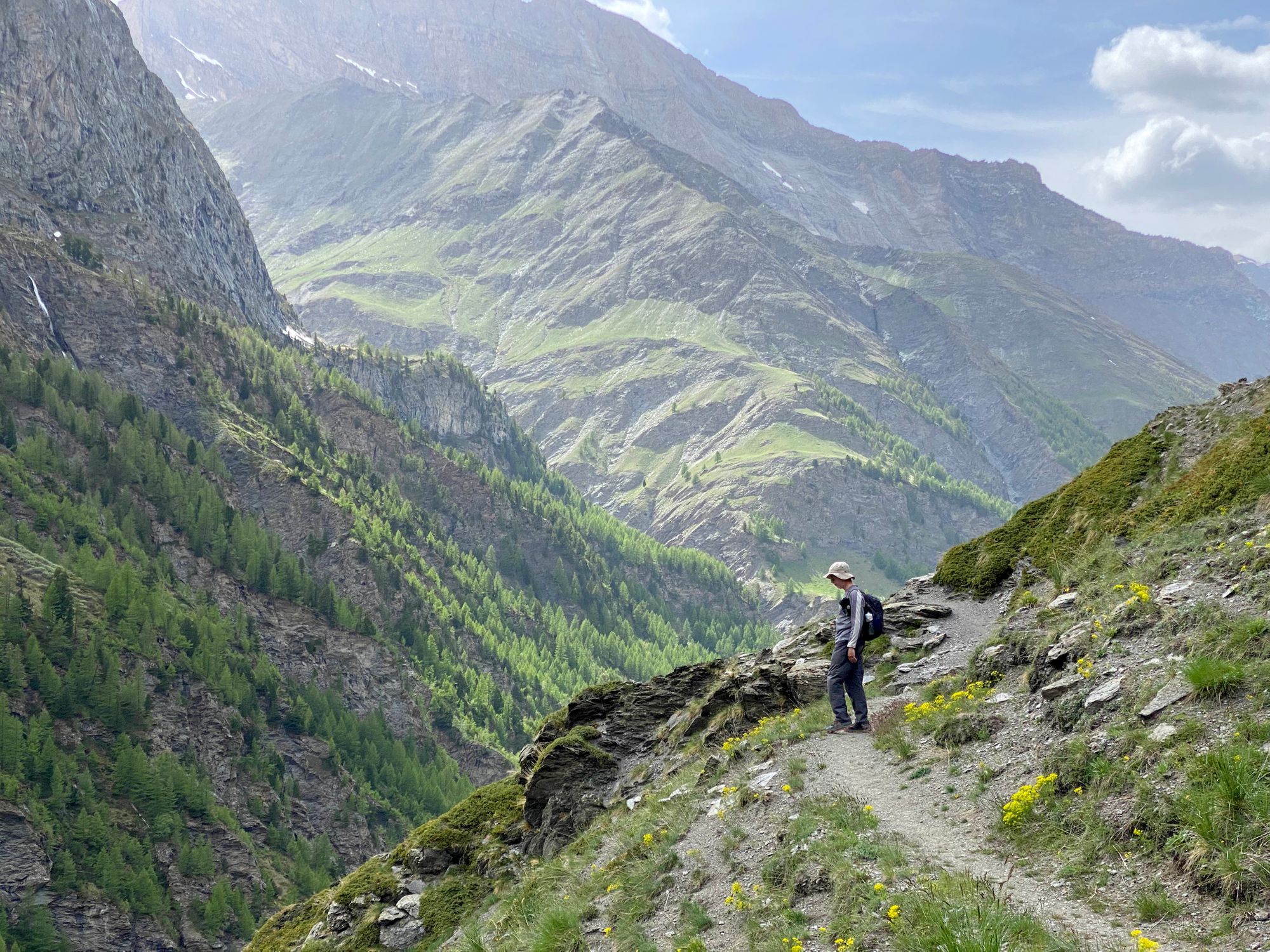
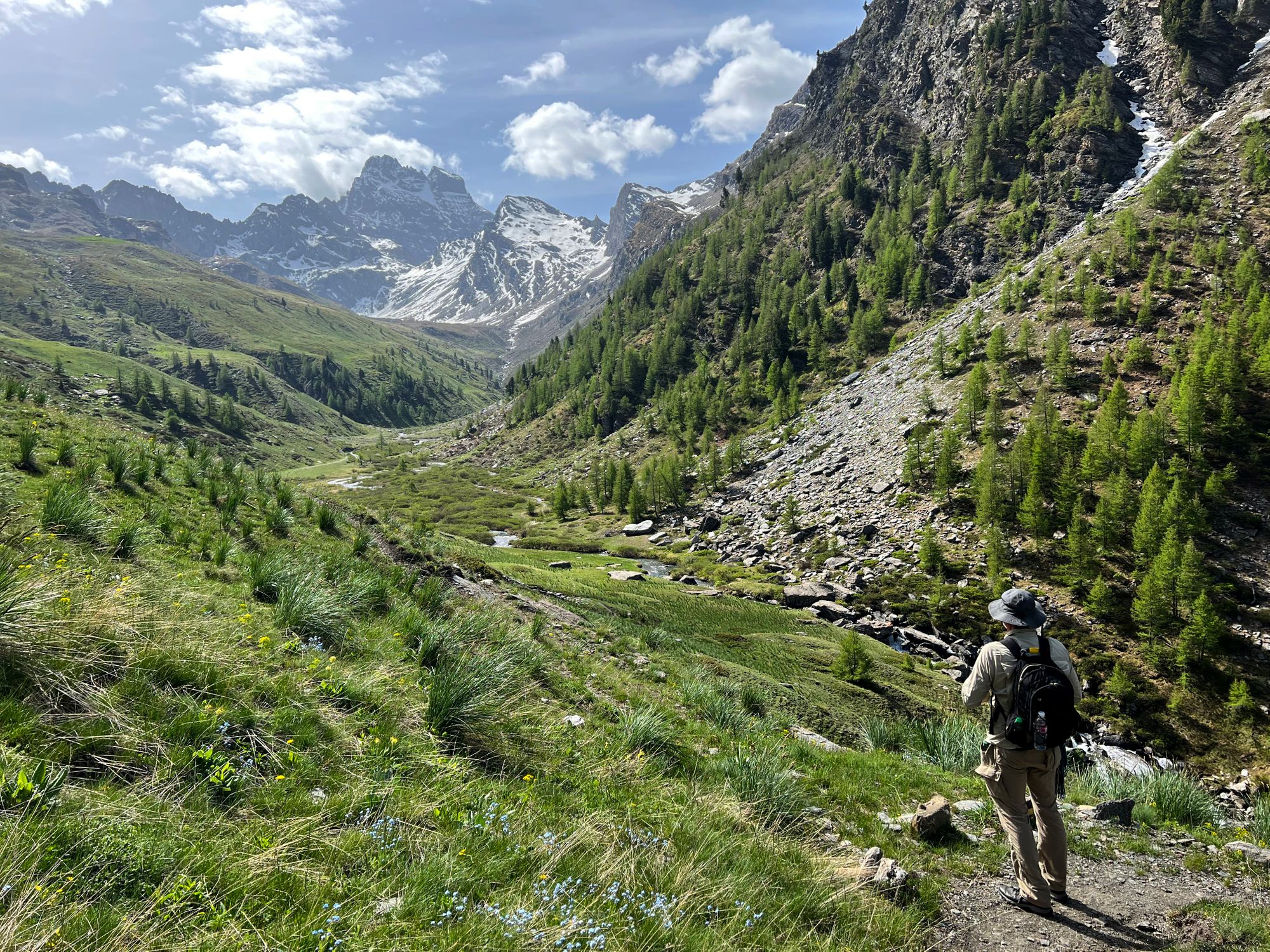
__________________
In 202 BC, Hannibal, now 43 years old, returns to Carthage for the first time after leaving with his father at the age of nine.
The Battle of Zama |
Prior to the monumental battle that ended the Second Punic War, Hannibal and Scipio met to offer terms. Hannibal knowing that the empire was weak proposed a treaty ceding all overseas territories to Rome to ensure the sovereignty of Carthage. Scipio insisted on unconditional surrender. The Scipio and Barca families had faced off before. In the Battle of Upper Baetis in Spain, Hannibal's brothers, Mago and Hasdrubal defeated and killed Scipio's father Publius and his uncle Gnaeus. Hasdrubal and Mago would also die fighting the Romans.

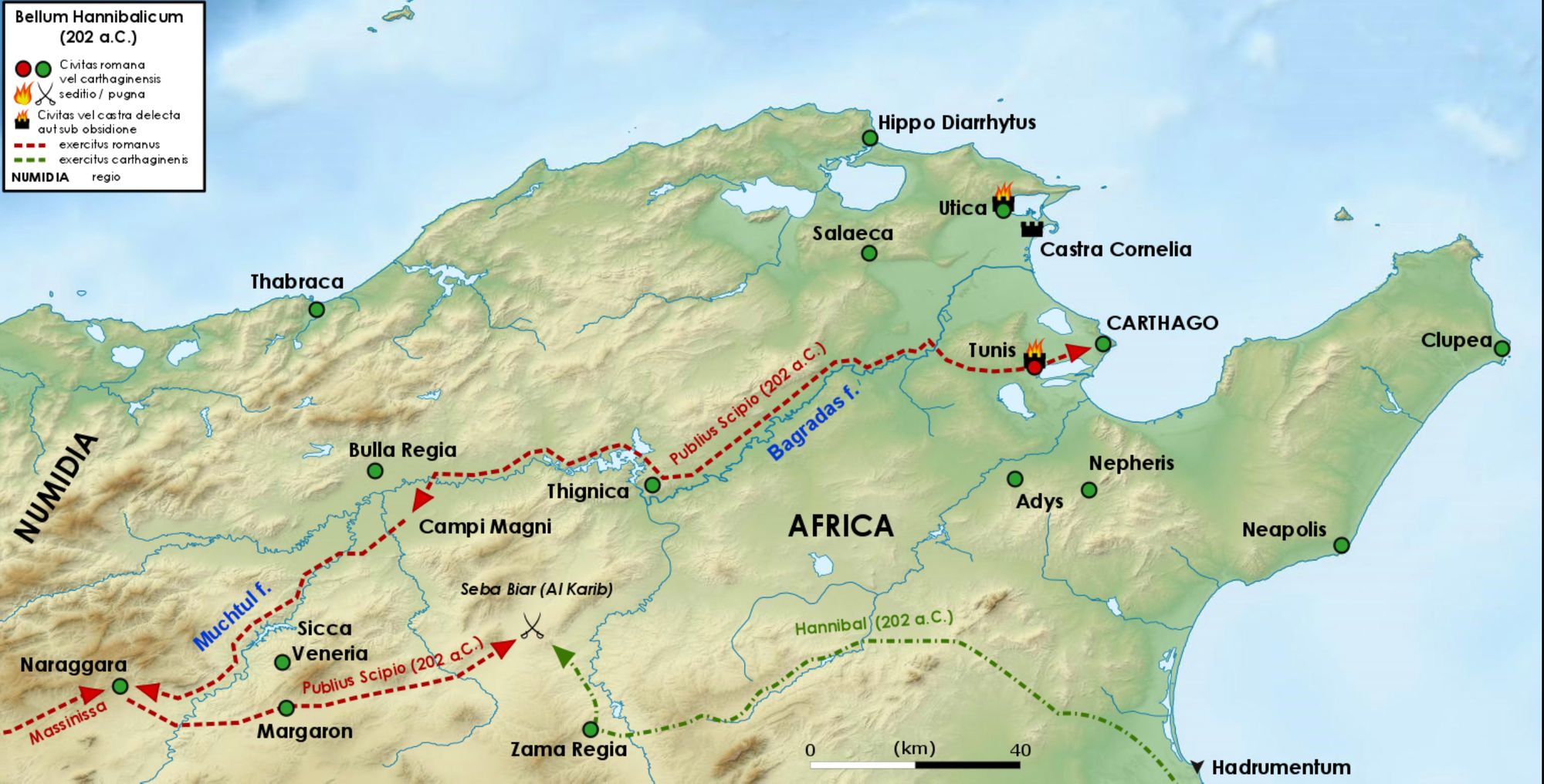
Neither treaty terms were accepted and Battle of Zama begun. Both armies faced off with cavalry on each side. Numidian cavalry had been decisive in many of Hannibal's victories and he always had numerical cavalry strength against the Romans who relied more on infantry. Scipio Africanus had studied Hannibal's victories and with a combination of diplomacy and persuasion had managed to supplement his own cavalry with Numidian horseman that had defected to the Romans. Now for the first time, cavalry superiority rested with the Romans.
Hannibal sent in his war elephants to disrupt and disorganize the Roman infantry. But Scipio who knew elephants charged straight ahead and were unnerved by loud noises, ordered his infantry troops to open gaps in the lines and for the cavalry to blow loud horns to frighten the oncoming elephants. Some elephants became disoriented and charged back against the Carthaginians - others charged harmlessly through the gaps in the Roman lines.
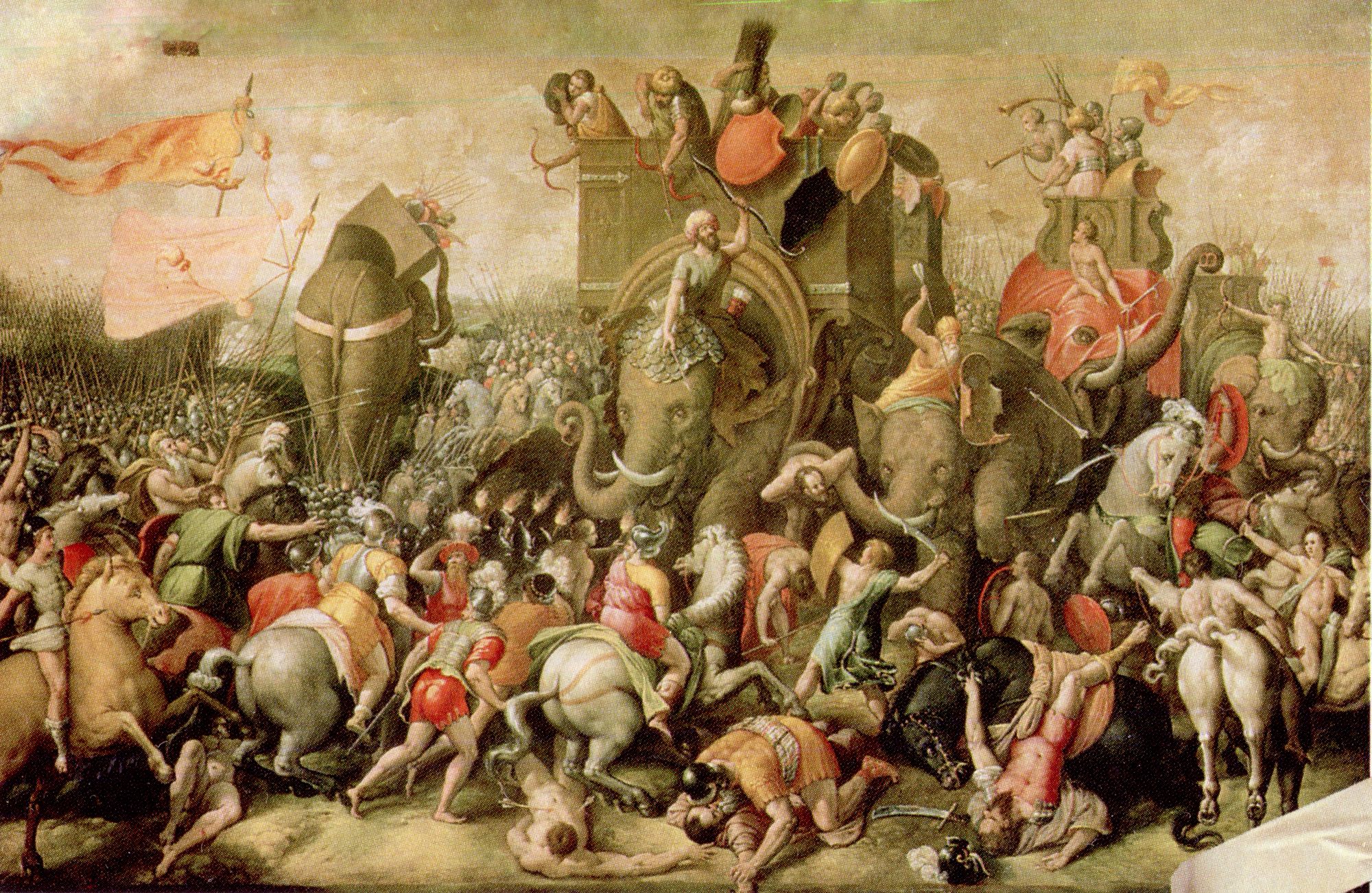
The cavalries engaged each other and as Hannibal had instructed his Numidian cavalry led the opposing Numidian and Roman cavalry away from the infantry lines. Now heavily armed opposing lines of infantry with pikes, spears and swords marched forward and clashed. The foot soldier battle raged as successive lines were deployed and the furious battle swayed back and forth with severe casualties on both sides.
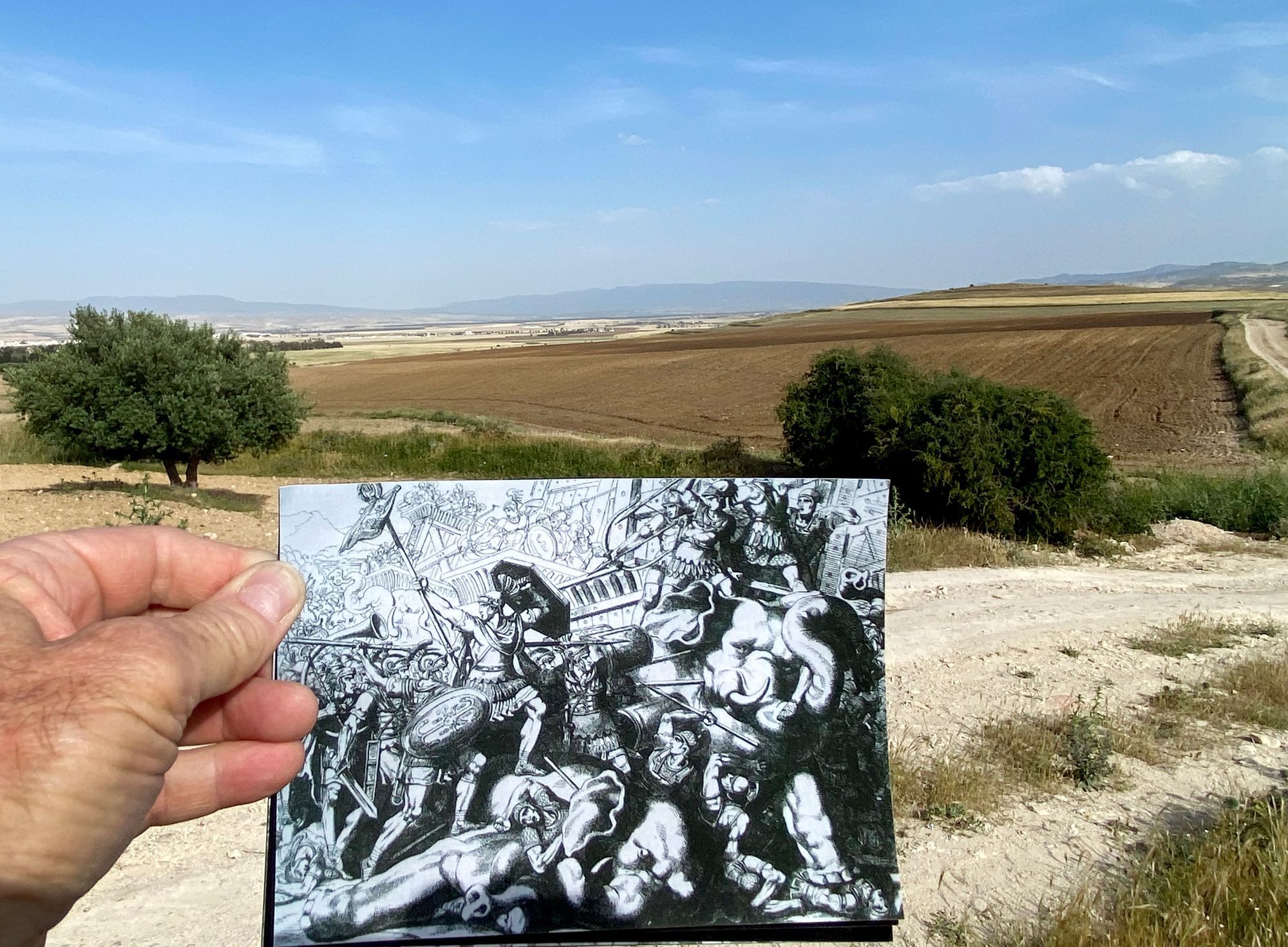
The elephant contingent had been neutralized and now after several hours of battle the Roman cavalry returned after routing the Numidian-allied Carthaginian horsemen and attacked Hannibal's line from behind. The Carthaginians were encircled and annihilated. The battle had been lost. Hannibal and a few thousand soldiers managed to escape. Hannibal had lost 20,000 killed and 20,000 captured.
The 17-year long Second Punic War was over with Rome victorious. The Roman Republic's greatest enemy had been defeated allowing it to claim all of the western Mediterranean under its domain.
Hannibal, however, lived another 25 years. For five years, he lead Carthage out of its war debt as shofet. After being accused by Rome of aiding their enemies, he fled before he could be arrested and brought to Rome. He wander the eastern Mediterranean advising and leading Rome's adversaries in war and politics until he was betrayed.
As Roman soldiers who had been hunting him for 20 years closed in on his residence at Bithynian Libyssa (near present day Istanbul), and his escape passages being compromised he ended his life by taking poison.
Hannibal is said to have left behind a letter declaring, "Let us relieve the Romans from the anxiety they have so long experienced, since they think it tries their patience too much to wait for an old man's death"
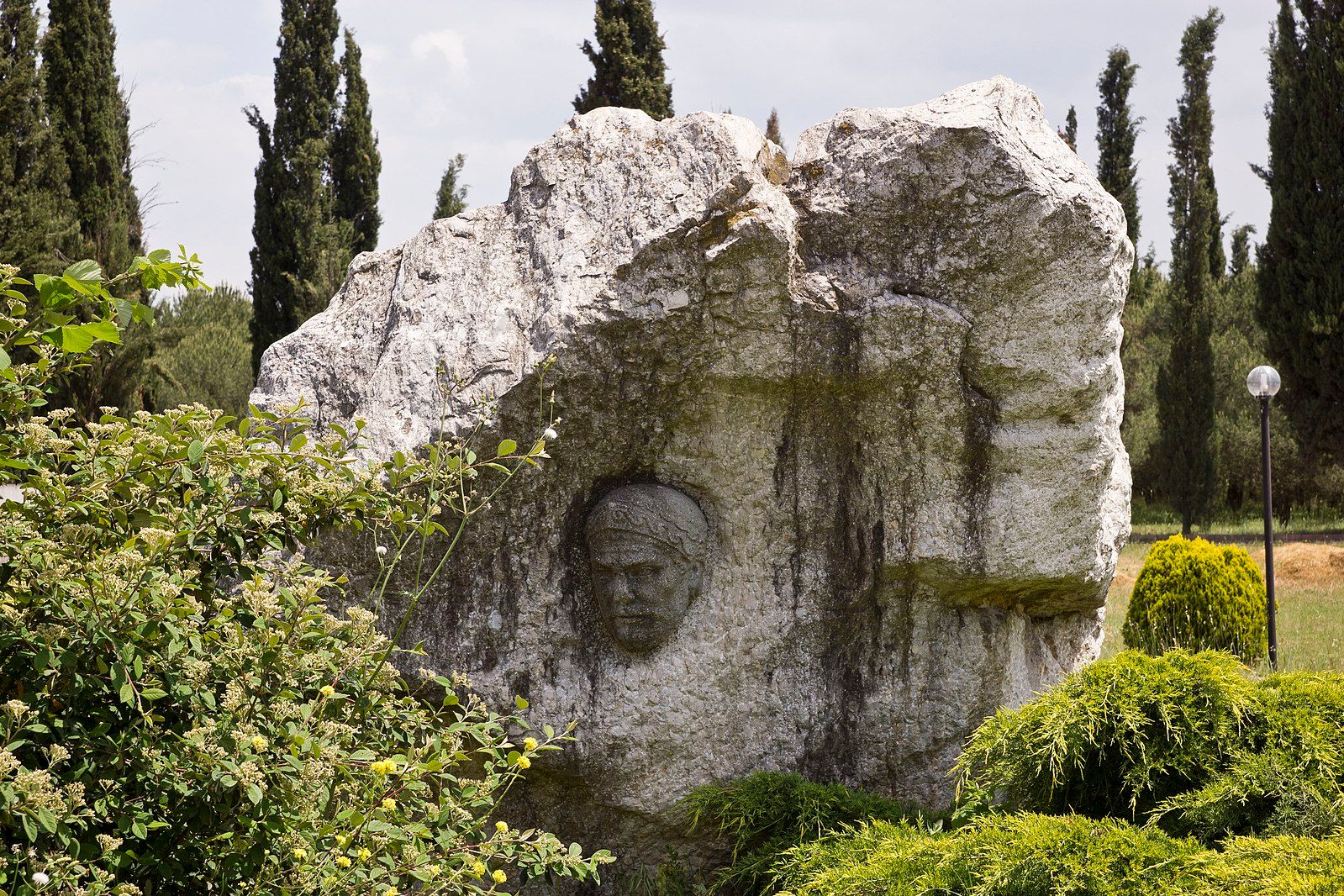
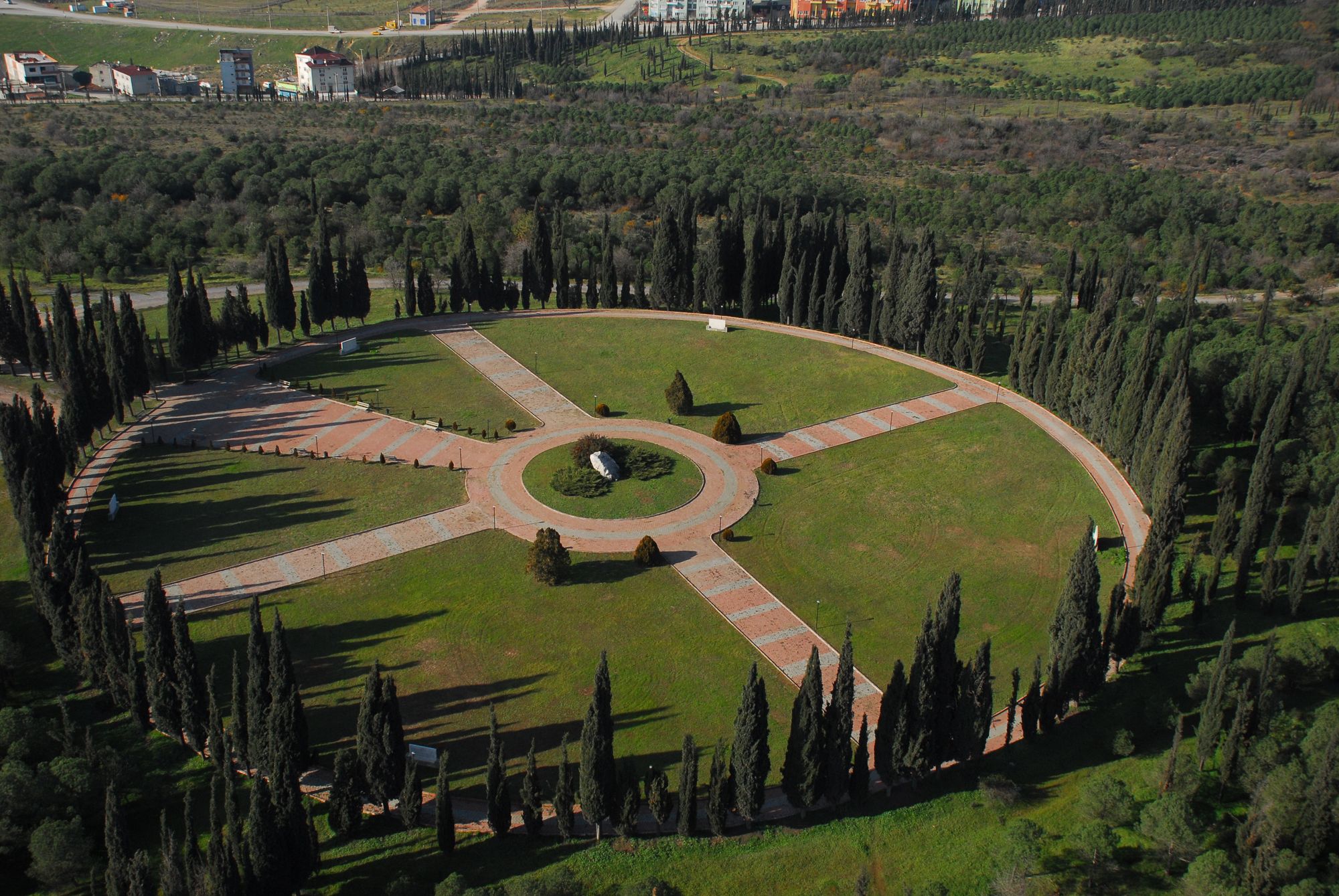
_______________________
